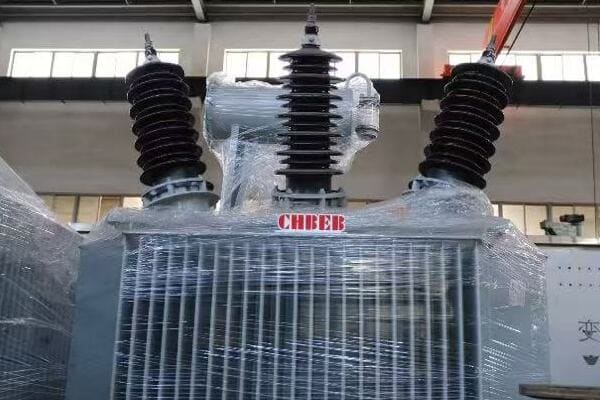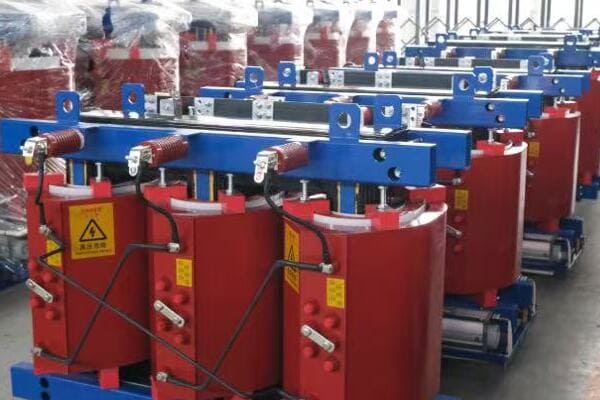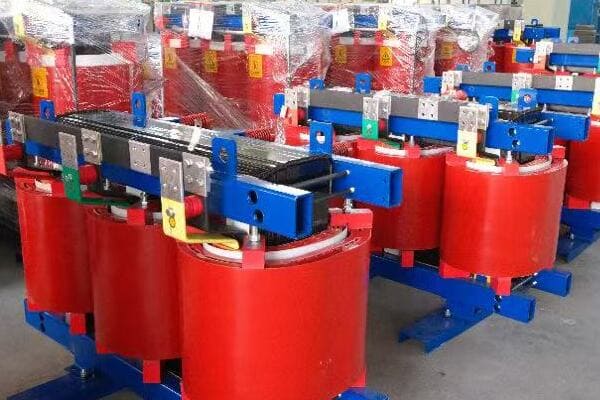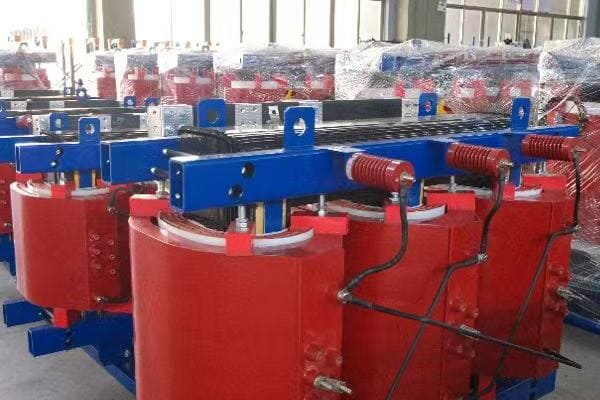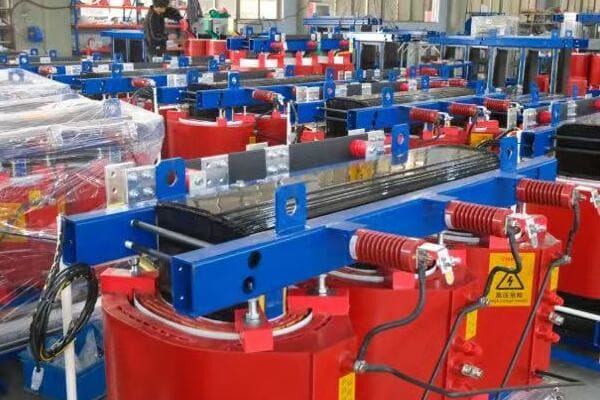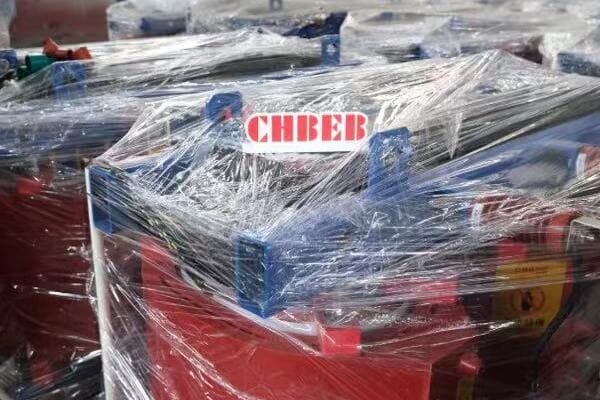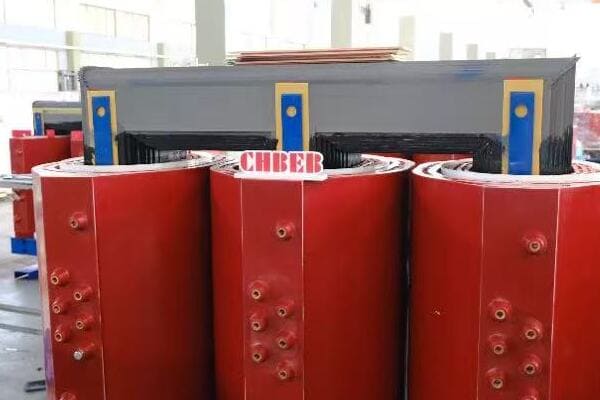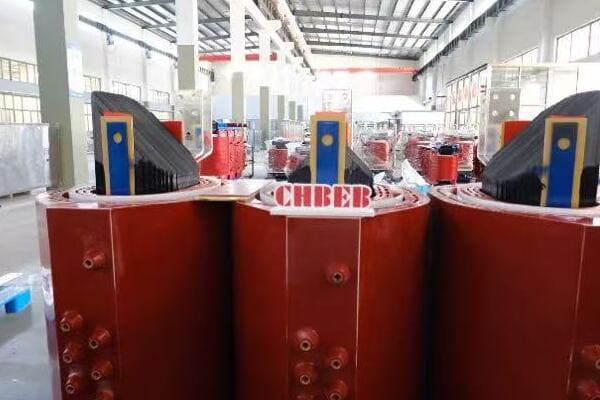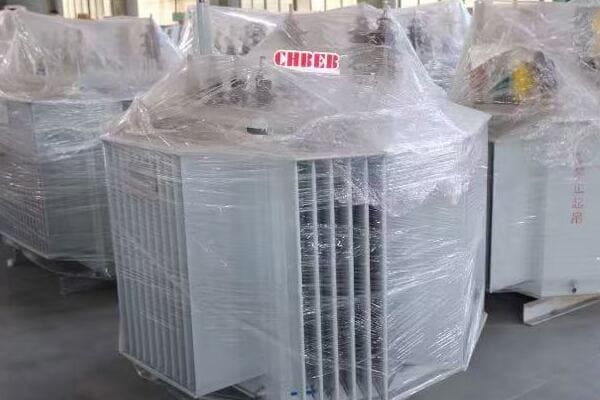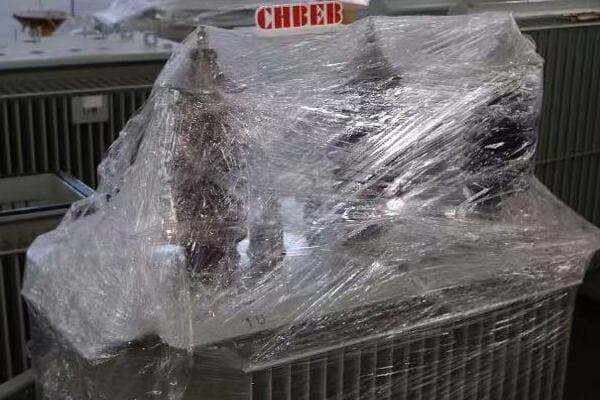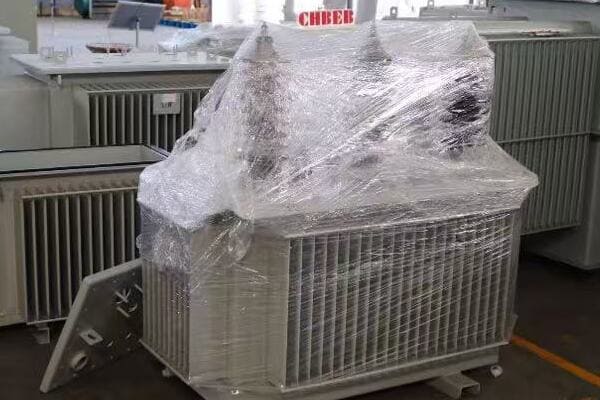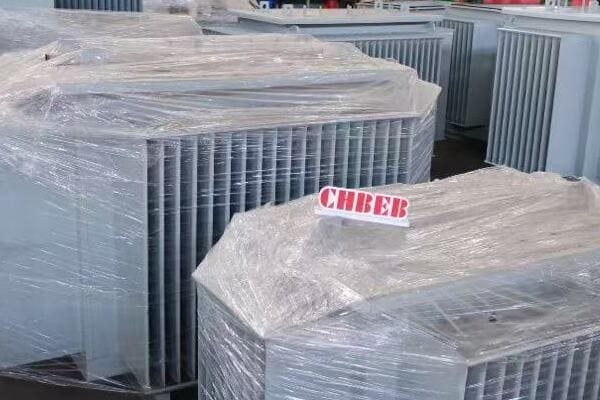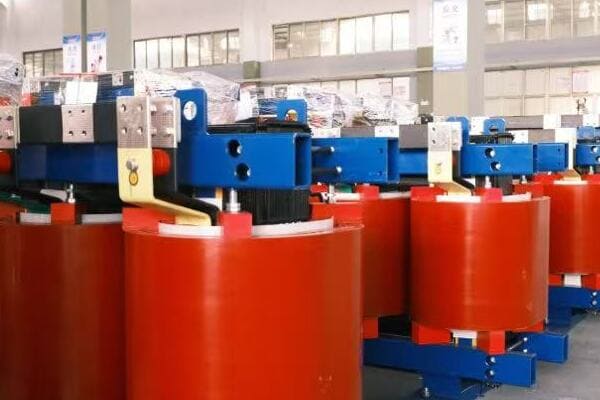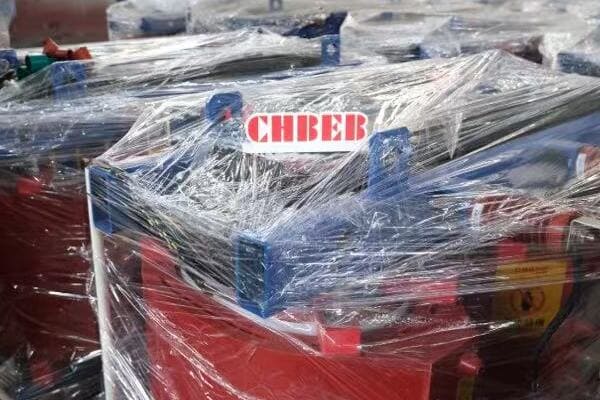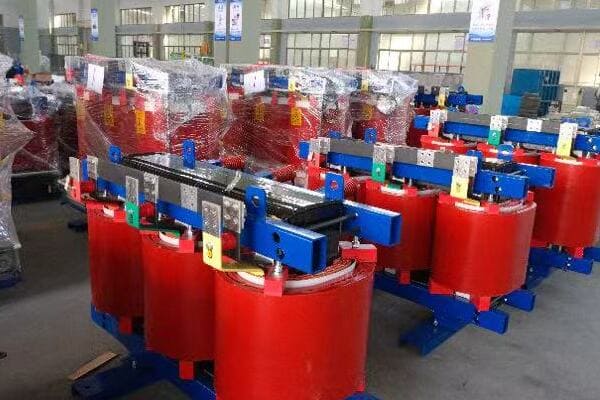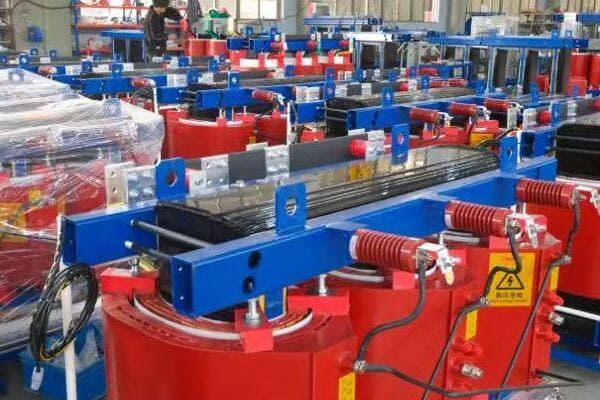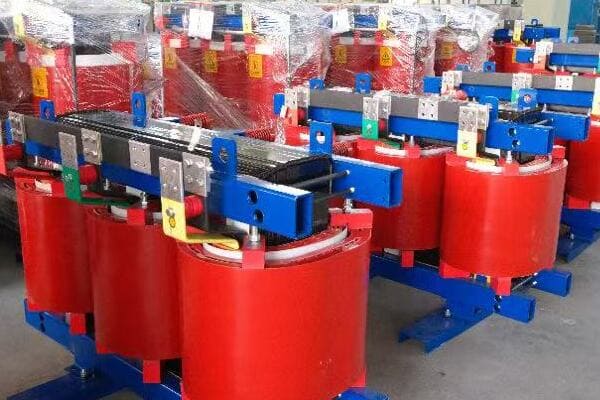Are you struggling to choose between oil and cast resin transformers for your next project? You’re not alone. Many engineers and project managers find themselves puzzled by the pros and cons of each type. But what if you could clearly understand the key differences and make an informed decision that optimizes your power distribution system?
Oil and cast resin transformers differ in cooling medium, fire risk, cost, and maintenance. Oil-filled types offer higher power capacity and lifespan, while cast resin models provide safer, cleaner indoor use. Understanding the top 5 differences helps you choose the right transformer for your project.

In this comprehensive guide, I’ll walk you through the top 5 differences between oil and cast resin transformers. We’ll explore their cooling methods, reliability in harsh environments, safety considerations, total cost of ownership, and long-term performance. Whether you’re designing a new electrical system or upgrading an existing one, this article will help you make the best choice for your specific needs.
1. Cooling & Insulation Method?
Have you ever wondered why some transformers are filled with oil while others look like solid blocks? The answer lies in their cooling and insulation methods. But why does this matter, and how does it affect transformer performance and maintenance?
Oil-type transformers use mineral oil for cooling and paper for insulation, while cast resin types have epoxy-encapsulated coils cooled by air. Oil transformers offer better cooling efficiency, especially for higher capacities, but cast resin units are simpler to maintain and don’t risk oil leaks.
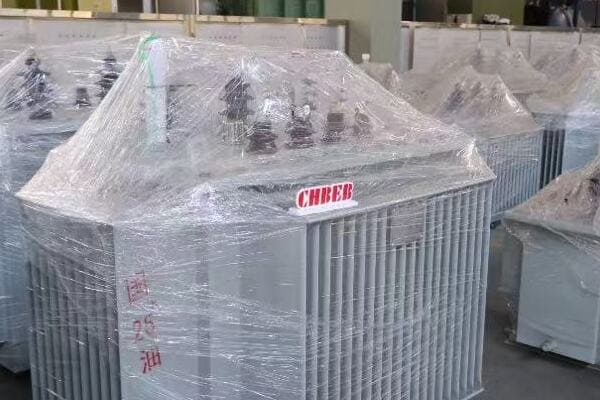
Diving Deeper into Cooling and Insulation Techniques
Let’s explore the cooling and insulation methods of both transformer types in detail:
Oil-Immersed Transformers
Key features:
- Mineral oil as coolant and insulator
- Paper-wrapped windings for additional insulation
- Natural oil circulation (ONAN) or forced circulation (ONAF)
I once worked on a project upgrading a power substation where we replaced old oil-filled transformers. The cooling efficiency of the new units was remarkable, allowing for a significant increase in capacity without changing the footprint of the installation.
Cast Resin Transformers
Characteristics:
- Epoxy resin encapsulation of windings
- Air-cooled design (AN or AF)
- No liquid coolant involved
Comparative Analysis
Let’s look at a table comparing the cooling and insulation aspects:
| Aspect | Oil-Immersed | Cast Resin |
|---|---|---|
| Cooling Efficiency | High | Moderate |
| Insulation Class | Usually up to 105°C (Class A) | Up to 180°C (Class H) |
| Overload Capacity | Better | Limited |
| Maintenance | Regular oil testing and filtering | Minimal, mainly cleaning |
| Environmental Risk | Potential oil leaks | None |
In my experience, the choice between oil and cast resin often comes down to the specific application and environment. I recall a project for a large industrial facility where we opted for oil-filled transformers due to their superior cooling capacity and ability to handle heavy, continuous loads. The client’s concerns about oil maintenance were addressed by implementing a rigorous monitoring and filtration system.
The environmental impact of cooling methods is becoming increasingly important. In a recent green building project, we chose cast resin transformers despite their slightly lower efficiency. The absence of oil eliminated environmental risks and simplified compliance with strict building codes, which was crucial for obtaining LEED certification.
For installations in extreme climates, the cooling method can be a decisive factor. I worked on a project in a very hot, arid environment where the superior cooling of oil-filled transformers was essential. However, we had to implement additional safeguards against oil degradation due to the high ambient temperatures.
The trend towards more compact and efficient transformers is influencing cooling technology. I’m currently involved in a research project exploring hybrid cooling systems that combine the best aspects of both oil and dry-type cooling. These innovations promise to offer improved efficiency and reduced environmental impact.
Maintenance considerations often play a crucial role in the selection process. In a recent data center project, we opted for cast resin transformers despite their slightly lower efficiency. The client’s lean maintenance team and the critical nature of the facility made the simpler maintenance requirements of cast resin units a deciding factor.
Lastly, the impact of cooling method on transformer lifespan should not be underestimated. Through various long-term studies, I’ve observed that well-maintained oil-filled transformers often have longer operational lives due to the superior insulation properties of oil. However, this advantage can be offset in environments where regular oil maintenance is challenging.
Understanding the cooling and insulation methods of oil and cast resin transformers is crucial for making an informed choice. While oil-filled transformers offer superior cooling efficiency and overload capacity, cast resin units provide simpler maintenance and environmental benefits. The right choice depends on your specific needs, including load requirements, environmental conditions, maintenance capabilities, and long-term operational strategy. Remember, the cooling method affects not just performance, but also long-term reliability, maintenance needs, and environmental impact.
2. Reliability in Harsh Environments?
Have you ever wondered why some transformers fail prematurely in certain environments while others keep running smoothly? The key often lies in how well the transformer type matches the environmental conditions. But what makes oil and cast resin transformers differ in their reliability across various harsh conditions?
Oil-type transformers generally perform better in outdoor, high-load, and dusty conditions due to their sealed design and efficient cooling. Cast resin transformers are more sensitive to humidity and dirt, excelling in clean indoor spaces. The choice significantly impacts long-term reliability and maintenance needs in challenging environments.
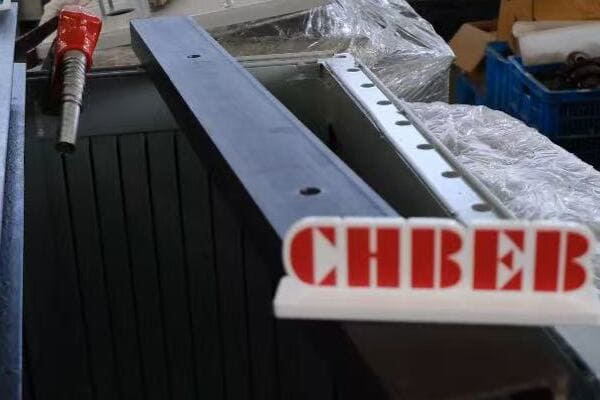
Analyzing Environmental Reliability of Oil and Cast Resin Transformers
Let’s delve into how each transformer type handles different environmental challenges:
Oil-Immersed Transformers in Harsh Conditions
Strengths:
- Excellent performance in high-temperature environments
- Resistant to dust and pollutants
- Can handle outdoor installations effectively
I once worked on a project for a mining operation in a remote, dusty location. We chose oil-filled transformers for their ability to withstand the harsh conditions. Their sealed design prevented dust ingress, and the oil’s cooling efficiency handled the high ambient temperatures admirably.
Cast Resin Transformers in Challenging Environments
Characteristics:
- Better suited for clean, controlled environments
- Sensitive to high humidity and condensation
- Excellent for indoor installations with space constraints
Comparative Environmental Performance
Here’s a table comparing the environmental reliability of both types:
| Environment | Oil-Immersed | Cast Resin |
|---|---|---|
| High Temperature | Excellent | Good |
| High Humidity | Good | Fair (needs protection) |
| Dusty Conditions | Very Good | Fair |
| Coastal/Saline | Good (with proper protection) | Very Good |
| Indoor/Clean | Good | Excellent |
| Altitude | Excellent | Good |
In my experience, the environmental reliability of transformers can make or break a project’s success. I recall a case where a client insisted on using cast resin transformers in a semi-outdoor industrial setting. Within a year, they faced significant issues due to moisture ingress and dust accumulation. We ended up replacing them with oil-filled units, which have since operated flawlessly for years.
The impact of altitude on transformer performance is often overlooked. In a high-altitude project I consulted on, we had to carefully consider the reduced cooling efficiency due to thinner air. Oil-filled transformers proved more adaptable in this scenario, as their closed system was less affected by the atmospheric conditions.
For coastal installations, corrosion resistance becomes a critical factor. I worked on a project for a seaside power station where we initially considered oil-filled transformers. However, the client’s concerns about potential oil leaks in the sensitive marine environment led us to choose specially designed cast resin units with enhanced corrosion protection. This decision balanced environmental safety with reliable performance in the saline atmosphere.
The trend towards more compact urban substations is influencing transformer choices. In a recent city center project, space constraints and strict fire safety regulations made cast resin transformers the obvious choice. Their ability to operate safely in confined, populated areas without the need for extensive fire suppression systems was a key advantage.
Climate change is introducing new challenges in transformer reliability. I’m currently advising on a long-term infrastructure project where we’re factoring in projected increases in extreme weather events. This has led us to develop hybrid solutions that combine the environmental resilience of oil-filled transformers with the safety features of cast resin units.
Maintenance requirements in harsh environments can significantly impact overall reliability. Through various projects, I’ve observed that while oil-filled transformers generally handle harsh conditions better, they often require more frequent maintenance in these environments. In contrast, cast resin units, when properly protected, can offer lower maintenance needs in certain challenging indoor settings.
The choice between oil and cast resin transformers for harsh environments isn’t always straightforward. It requires a careful assessment of specific environmental challenges, long-term reliability needs, and maintenance capabilities. Oil-filled transformers generally offer superior performance in outdoor, high-temperature, and dusty conditions, making them ideal for industrial and utility-scale applications in challenging environments. Cast resin transformers, while more sensitive to certain environmental factors, excel in clean, indoor settings and offer advantages in terms of fire safety and compact installation. The key is to match the transformer type not just to current conditions, but also to anticipated future changes in the installation environment.
3. Safety & Fire Risk?
Are you concerned about the safety implications of your transformer choice? You should be. The type of transformer you select can significantly impact fire risk and overall safety in your facility. But what exactly makes oil and cast resin transformers different when it comes to safety, and how does this affect their suitability for various applications?
Oil-type transformers are flammable and require additional fire safety measures like oil pits or fire barriers. Cast resin transformers are non-flammable (F1-rated) and inherently safer, especially in public spaces. This difference makes cast resin units preferable in hospitals, metros, and commercial buildings where fire safety is paramount.
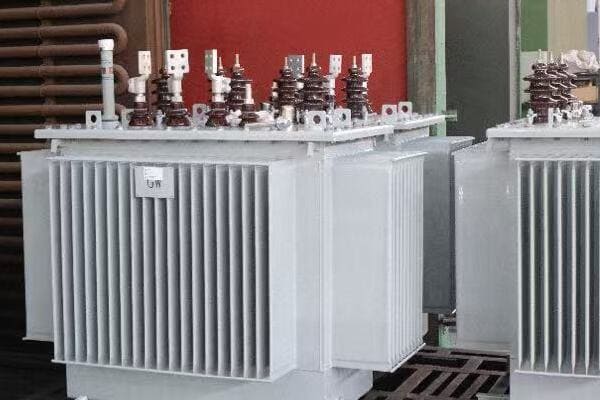
Analyzing Safety and Fire Risk in Oil and Cast Resin Transformers
Let’s explore the safety aspects of both transformer types in detail:
Oil-Immersed Transformers: Fire Risk and Safety Measures
Key considerations:
- Flammable mineral oil as coolant
- Requires comprehensive fire suppression systems
- Potential for oil leaks and environmental contamination
I once consulted on a retrofit project where an aging oil-filled transformer caught fire due to a fault. The incident, while contained, highlighted the importance of robust fire safety systems for oil-filled units. This experience underscored the critical nature of proper safety measures when using oil transformers, especially in populated areas.
Cast Resin Transformers: Enhanced Safety Features
Safety advantages:
- Non-flammable epoxy resin encapsulation
- F1 fire safety rating (self-extinguishing)
- No risk of oil leaks or spills
Comparative Safety Analysis
Here’s a table comparing the safety aspects of both transformer types:
| Safety Aspect | Oil-Immersed | Cast Resin |
|---|---|---|
| Fire Risk | High | Very Low |
| Fire Suppression Needs | Extensive | Minimal |
| Environmental Hazard | Potential oil spills | None |
| Indoor/Public Use Safety | Limited | Excellent |
| Explosion Risk | Present | Negligible |
| Safety in Floods | Risky (oil floats) | Better |
In my experience, the safety considerations of transformer selection often become most apparent in urban or sensitive environments. I recall a project for a new hospital wing where the choice of cast resin transformers was driven primarily by their superior fire safety characteristics. The ability to install these units closer to critical areas without extensive fire suppression systems not only enhanced safety but also improved the overall efficiency of the power distribution system.
The environmental safety aspect of transformer choice is becoming increasingly important. In a recent project near a protected watershed, the use of cast resin transformers was crucial in obtaining environmental permits. The absence of oil eliminated the risk of contamination, providing peace of mind to both the client and local environmental authorities.
For installations in multi-story buildings, the weight of required fire suppression systems for oil transformers can be a significant factor. I worked on a high-rise project where the structural implications of heavy fire safety equipment for oil transformers made cast resin units the more practical choice, despite their higher initial cost.
The trend towards underground substations in urban areas is influencing safety considerations. In a recent metro expansion project, we exclusively used cast resin transformers due to their superior safety in confined, high-traffic underground spaces. Their non-flammable nature simplified evacuation planning and reduced overall project risk.
Maintenance practices play a crucial role in long-term safety. Through various long-term studies, I’ve observed that while cast resin transformers offer inherent safety advantages, oil-filled units can be operated safely with rigorous maintenance and monitoring protocols. However, the margin for error is much smaller with oil-filled units.
Climate change considerations are also impacting safety-related decisions in transformer selection. I’m currently advising on a coastal infrastructure project where the increased risk of flooding due to rising sea levels has made the water-resistant properties of cast resin transformers a key factor in their selection over oil-filled alternatives.
The choice between oil and cast resin transformers from a safety perspective is not just about fire risk; it’s about overall risk management in your specific environment. While oil-filled transformers can be used safely with proper precautions, cast resin transformers offer inherent safety advantages that make them preferable in many modern applications, especially in populated or sensitive areas. The decision should be based on a comprehensive risk assessment that considers not just current safety requirements but also future changes in the operational environment and evolving safety standards. Remember, the safest choice is one that aligns with your specific application needs, regulatory requirements, and long-term risk management strategy.
4. Total Cost (Initial + Maintenance)?
Are you finding it challenging to balance the upfront costs of transformers against their long-term operational expenses? You’re not alone. Many decision-makers struggle to see beyond the initial price tag. But what if understanding the total cost of ownership could lead you to a more economical choice in the long run?
**Transformer Type | Purchase Cost | Maintenance | Ventilation Needs
Oil-Immersed | Lower | Medium (oil tests, cleaning) | Higher ventilation required
Cast Resin | Higher | Lower (almost zero) | Minimal airflow sufficient
While oil transformers have a lower initial cost, cast resin units often prove more economical long-term due to minimal maintenance needs and simpler installation requirements.**
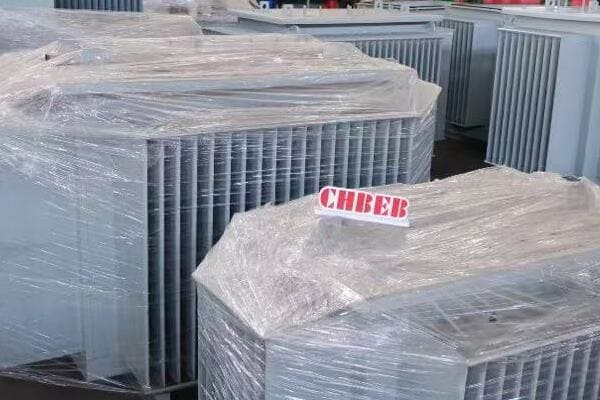
Analyzing the Total Cost of Ownership for Oil and Cast Resin Transformers
Let’s break down the cost factors for both transformer types:
Initial Purchase and Installation Costs
Key considerations:
- Equipment price
- Installation complexity and associated costs
- Additional systems required (e.g., fire suppression for oil types)
I once worked on a project where the client initially opted for oil-filled transformers due to their lower purchase price. However, when we factored in the cost of required oil containment systems and fire suppression equipment, the total installation cost ended up being higher than equivalent cast resin units.
Operational and Maintenance Expenses
Ongoing costs to consider:
- Routine maintenance requirements
- Energy efficiency and losses
- Potential for unexpected repairs or replacements
Long-Term Cost Analysis
Here’s a detailed comparison of costs over a 20-year lifespan:
| Cost Factor | Oil-Immersed | Cast Resin |
|---|---|---|
| Initial Purchase | Lower (70-80% of cast resin) | Higher |
| Installation | Higher (fire safety systems) | Lower |
| Annual Maintenance | $1000-$2000 | $200-$500 |
| Energy Losses | Slightly lower | Slightly higher |
| Lifespan | 25-35 years | 20-25 years |
| End-of-Life Disposal | Complex (oil disposal) | Simpler |
In my experience, the true cost difference often becomes apparent several years into operation. I recall a large industrial client who switched from oil to cast resin transformers for their new facilities. After five years, they reported significant savings in maintenance costs and downtime reduction, which more than offset the higher initial investment.
The impact of installation environment on long-term costs can be substantial. In a recent project for a coastal facility, we found that the corrosion-resistant properties of cast resin transformers led to lower maintenance costs and longer service life compared to oil units, despite the higher upfront cost.
Energy efficiency is an increasingly important factor in total cost calculations. Through various efficiency studies, I’ve observed that while oil transformers generally have slightly lower losses, the difference is often negligible in modern designs. In some cases, the reduced ventilation needs of cast resin units can lead to overall energy savings in climate-controlled environments.
The cost implications of safety requirements are often underestimated. In a recent urban substation upgrade project, the stringent fire safety regulations for oil-filled transformers significantly increased the overall project cost. The simpler safety requirements for cast resin units made them more economical despite their higher unit price.
Maintenance costs can vary greatly depending on the installation environment. I’ve seen cases where oil-filled transformers in harsh industrial environments required frequent oil changes and filtration, substantially increasing their operational costs. In contrast, cast resin units in similar settings needed only periodic cleaning, resulting in lower long-term expenses.
The impact of potential failures on total cost should not be overlooked. In a comparative study I conducted for a utility company, we found that while oil transformers had a slightly lower failure rate, the cost and downtime associated with oil-related failures were significantly higher than those for cast resin units. This risk factor played a crucial role in their decision-making process for future installations.
Environmental regulations are increasingly influencing the total cost of ownership. I’m currently advising on a project where stricter regulations on oil handling and disposal are substantially increasing the operational costs of oil-filled transformers. This trend is making cast resin units more attractive from a long-term cost perspective, especially in environmentally sensitive areas.
The scalability and future expansion costs are another important consideration. In a recent data center project, the modular nature of cast resin transformers allowed for easier and more cost-effective capacity expansions compared to oil-filled units, which would have required significant infrastructure changes to accommodate larger units.
Lastly, the end-of-life costs are becoming an important part of the total cost equation. Through lifecycle analyses, I’ve found that the simpler disposal process for cast resin transformers often results in lower end-of-life costs compared to the complex and regulated disposal procedures for oil-filled units.
Calculating the total cost of ownership for transformers requires a comprehensive approach that goes beyond the initial purchase price. While oil-filled transformers often have a lower upfront cost, cast resin units can prove more economical in the long run, especially in environments where maintenance is challenging or where safety and environmental factors are paramount. The right choice depends on a careful analysis of your specific operational context, including installation environment, maintenance capabilities, energy costs, and regulatory landscape. Remember, the cheapest option at purchase is often not the most cost-effective over the transformer’s lifetime. By considering all these factors, you can make an informed decision that optimizes both performance and long-term economics for your specific needs.
5. Lifespan & Long-Term Performance?
Are you wondering which transformer type will serve you best in the long run? It’s a crucial question, as the lifespan and long-term performance of your transformer can significantly impact your power distribution system’s reliability and cost-effectiveness. But what makes oil and cast resin transformers different in terms of longevity and sustained performance?
Oil-immersed transformers typically last 25–35 years with proper maintenance, while cast resin units have a lifespan of 20–25 years. Oil types generally offer better long-term performance for grid applications, but cast resin models are ideal for mid-range lifecycles in commercial and industrial settings.
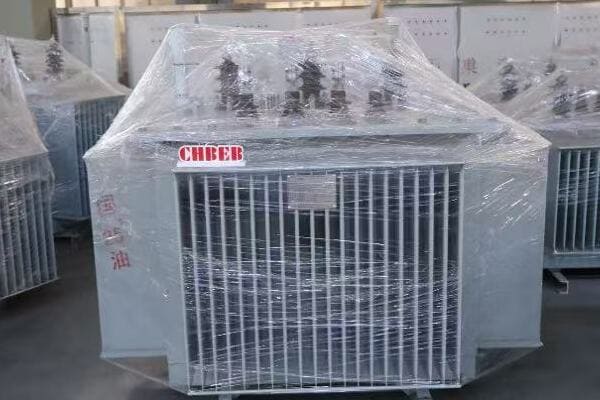
Analyzing Lifespan and Long-Term Performance of Oil and Cast Resin Transformers
Let’s explore the factors affecting the longevity and performance of both transformer types:
Oil-Immersed Transformers: Longevity Factors
Key considerations:
- Oil quality and regular maintenance
- Overload capacity and cooling efficiency
- Environmental factors affecting oil degradation
I once conducted a long-term study of transformer performance in a large utility network. We found that well-maintained oil-filled transformers consistently outlasted their expected lifespan, with some units operating efficiently for over 40 years. This longevity was largely attributed to rigorous maintenance schedules and oil quality management.
Cast Resin Transformers: Long-Term Performance Aspects
Factors affecting lifespan:
- Insulation degradation over time
- Environmental stressors (humidity, pollution)
- Load profile and thermal cycling
Comparative Long-Term Analysis
Here’s a detailed comparison of long-term performance factors:
| Aspect | Oil-Immersed | Cast Resin |
|---|---|---|
| Average Lifespan | 25-35 years | 20-25 years |
| Overload Capacity | Higher | Lower |
| Performance in Varying Loads | Excellent | Good |
| Aging Factors | Oil degradation, moisture | Insulation breakdown, environmental stress |
| Long-Term Efficiency | Maintains well | Slight decrease over time |
| End-of-Life Options | Refurbishment possible | Typically full replacement |
In my experience, the long-term performance of transformers often depends on their application and environment. I recall a project for a chemical plant where cast resin transformers were chosen despite their shorter theoretical lifespan. The corrosive atmosphere would have degraded oil-filled units faster, making the sealed nature of cast resin transformers more suitable for maintaining long-term performance in this specific environment.
The impact of load profile on transformer lifespan is significant. Through various industrial projects, I’ve observed that oil-filled transformers generally handle fluctuating loads and overloads better over time. This characteristic makes them particularly suitable for applications with variable power demands or potential for future load growth.
Environmental factors play a crucial role in long-term performance. In a coastal project I consulted on, we found that cast resin transformers maintained their performance better in the salt-laden air compared to oil-filled units, which required more frequent maintenance to prevent corrosion-related issues.
The ability to refurbish and extend the life of transformers is an important consideration. I’ve been involved in several projects where aging oil-filled transformers were successfully refurbished, extending their operational life by 10-15 years. This option is generally not available for cast resin units, which typically require full replacement at the end of their life.
Thermal cycling and its impact on insulation life is a critical factor, especially for cast resin transformers. In a recent data center project, we implemented advanced thermal management systems for cast resin units to minimize the effects of load-induced thermal cycling, thereby extending their effective lifespan closer to that of oil-filled alternatives.
The trend towards smart grid technologies is influencing how we evaluate long-term performance. I’m currently working on a project integrating IoT sensors in both oil and cast resin transformers. This real-time monitoring allows for more accurate prediction of remaining life and optimization of maintenance schedules, potentially extending the operational life of both types.
Lastly, the evolving regulatory landscape regarding environmental and safety standards is impacting long-term planning for transformer installations. In some regions, stricter regulations on oil handling are making the shorter lifespan of cast resin transformers more acceptable when balanced against reduced environmental risks and simpler compliance requirements.
When considering the lifespan and long-term performance of transformers, it’s clear that both oil-immersed and cast resin types have their strengths. Oil-filled transformers generally offer longer lifespans and better long-term performance, especially in grid applications and environments with varying loads. Cast resin transformers, while typically having a shorter lifespan, can be the better choice for specific environments where their sealed nature provides an advantage. The key to maximizing the lifespan and performance of either type lies in proper selection based on the specific application, environment, and load profile, coupled with appropriate maintenance practices. Remember, the transformer with the longest theoretical lifespan isn’t always the best choice – it’s about finding the right balance between longevity, performance, and suitability for your specific operational context.
Frequently Asked Questions
Q1: Which is better for indoor use—oil or cast resin?
A: Cast resin is safer and cleaner for indoor or public spaces due to its non-flammable, sealed design.
Q2: Do oil transformers last longer than cast resin?
A: Yes, oil transformers generally last longer when well-maintained, but require more routine care.
Q3: Which type is more eco-friendly?
A: Cast resin has no oil leakage risk, but oil units are easier to recycle. Both can meet RoHS and REACH standards if properly designed.
Conclusion
Choosing between oil and cast resin transformers involves balancing factors like cooling efficiency, environmental reliability, safety, total cost, and lifespan. Oil types excel in cooling and longevity, while cast resin offers better safety and simpler maintenance. The best choice depends on your specific application, environment, and long-term operational needs.
💬 Still not sure which type fits your project?
📩 Contact our technical team for a free transformer recommendation or customized quotation.
Are you worried about potential issues with your dry type transformer installation? You’re not alone. Many engineers and facility managers struggle with the complexities of proper transformer setup. But what if you could avoid the most common pitfalls and ensure a safe, efficient installation from the start?
Improper installation of dry type transformers can lead to overheating, insulation damage, electrical faults, and even equipment failure. Understanding the most common installation mistakes—and how to prevent them—helps ensure long-term safety, reliability, and compliance for your power distribution system.

In this comprehensive guide, I’ll walk you through the top 7 installation mistakes I’ve encountered with dry type transformers and provide practical tips on how to avoid them. Whether you’re planning a new installation or troubleshooting an existing one, this article will help you ensure your transformer operates safely and efficiently for years to come.
Why Proper Installation Matters for Dry Type Transformers?
Have you ever wondered why some transformers fail prematurely while others last for decades? The answer often lies in the quality of the installation. But why exactly is proper installation so crucial for dry type transformers, and what risks do you face if it’s done incorrectly?
Proper installation of dry type transformers is critical because it directly impacts safety, efficiency, and lifespan. Incorrect installation can lead to overheating, electrical faults, increased energy losses, and premature failure. A well-installed transformer ensures optimal performance, minimizes downtime, and complies with safety regulations.
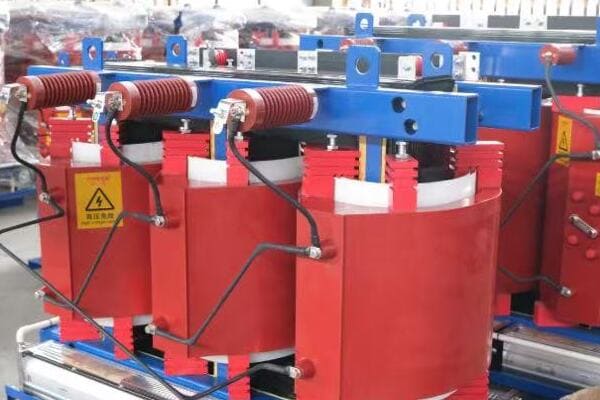
The Importance of Correct Transformer Installation
Let’s delve deeper into why proper installation is so vital:
1. Safety Considerations
Key safety aspects:
- Prevention of electrical shock hazards
- Minimization of fire risks
- Protection against environmental factors
I once investigated a transformer failure that resulted in a small fire. The root cause was traced back to improper cable terminations during installation, highlighting how seemingly minor installation errors can have serious safety consequences.
2. Performance and Efficiency
Factors affecting performance:
- Optimal heat dissipation
- Minimized electrical losses
- Proper load handling capacity
3. Longevity and Reliability
Installation impacts on lifespan:
- Prevention of premature insulation breakdown
- Reduction of mechanical stress on components
- Avoidance of environmental damage
4. Regulatory Compliance
Compliance considerations:
- Adherence to local electrical codes
- Meeting insurance requirements
- Fulfillment of warranty conditions
Here’s a comparison table of the impacts of proper vs. improper installation:
| Aspect | Proper Installation | Improper Installation |
|---|---|---|
| Safety | High level of protection | Increased risk of accidents |
| Efficiency | Optimal performance | Higher losses, increased costs |
| Lifespan | Extended service life | Premature failure |
| Maintenance | Reduced need for repairs | Frequent issues and downtime |
| Compliance | Meets all regulations | Potential code violations |
In my experience, the long-term benefits of proper installation far outweigh the initial time and effort invested. I recall a project where we meticulously followed installation best practices for a series of dry type transformers in a data center. Years later, these units were still operating at peak efficiency, while a neighboring facility that had cut corners during installation was already replacing their transformers due to recurring issues.
The impact on energy efficiency is often underestimated. In a recent industrial installation, we paid careful attention to ventilation and cooling during the setup. The result was a measurable reduction in energy losses compared to similar installations, translating to significant cost savings for the client over time.
Proper installation also plays a crucial role in maintenance requirements. I’ve seen cases where poorly installed transformers required frequent maintenance interventions, leading to increased downtime and operational costs. In contrast, well-installed units often need only routine checks, minimizing disruptions to operations.
The environmental impact of installation quality shouldn’t be overlooked. In a project for an environmentally conscious client, we emphasized proper installation techniques to maximize the transformer’s efficiency and lifespan. This approach not only reduced the client’s carbon footprint through improved energy efficiency but also minimized the environmental impact associated with premature equipment replacement.
Compliance with evolving regulations is another critical aspect. I’m currently advising on a project where we’re not only meeting current installation standards but also anticipating future regulatory changes. This forward-thinking approach ensures long-term compliance and avoids costly retrofits down the line.
Lastly, the role of proper installation in system reliability cannot be overstated. In a recent upgrade of a critical power system, the meticulous installation process we followed resulted in a significant improvement in overall system reliability. This was particularly crucial for the client’s operations, where even brief power interruptions could result in substantial financial losses.
Understanding the importance of proper dry type transformer installation is crucial for anyone involved in electrical system design or facility management. It’s not just about following a set of rules; it’s about ensuring safety, maximizing efficiency, extending equipment life, and maintaining regulatory compliance. By prioritizing installation quality, you’re not only protecting your investment in the transformer itself but also safeguarding your entire electrical system’s reliability and performance. Remember, the extra effort put into a correct installation pays dividends throughout the transformer’s entire operational life.
Mistake #1: Inadequate Ventilation Around the Transformer?
Have you ever wondered why some dry type transformers seem to run hotter than others, even under similar loads? The answer often lies in a common installation mistake: inadequate ventilation. But why is proper airflow so crucial, and what happens when transformers don’t get enough breathing room?
**Inadequate ventilation around dry type transformers can lead to overheating, reduced efficiency, and premature failure. Proper airflow is essential for heat dissipation. To avoid this:
- Leave at least 1 meter of clearance on all sides
- Avoid installing near heat sources
- Use forced air (AF) units for poorly ventilated rooms
- Ensure no obstructions to airflow through vents**
Understanding the Importance of Proper Ventilation
Let’s explore why ventilation is critical and how to ensure it’s adequate:
1. Heat Dissipation Basics
Key points:
- Transformers generate heat during operation
- Air circulation is crucial for cooling
- Inadequate airflow leads to heat buildup
I once encountered a case where a dry type transformer was installed in a cramped electrical room with minimal clearance. Within months, the client reported frequent overheating issues and reduced efficiency. Upon inspection, we found that the lack of proper airflow was causing the transformer to operate well above its designed temperature range.
2. Clearance Requirements
Recommended clearances:
- Minimum 1 meter on all sides
- Additional space above for rising hot air
- Clear path for cool air intake at the bottom
3. Environmental Considerations
Factors to consider:
- Ambient temperature of the installation area
- Presence of other heat-generating equipment
- Potential for dust or debris accumulation
4. Cooling Method Compatibility
Ventilation needs based on cooling type:
- AN (Air Natural) units require more open space
- AF (Air Forced) can manage with less space but need unobstructed fan operation
Here’s a comparison table of ventilation requirements for different transformer types:
| Aspect | AN Cooling | AF Cooling |
|---|---|---|
| Minimum Side Clearance | 1 meter | 0.75 meter |
| Top Clearance | 1.5 meters | 1 meter |
| Airflow Path | Unobstructed natural convection | Clear path for fan-driven air |
| Heat Sensitivity | Higher | Lower |
| Suitable Environments | Open, well-ventilated areas | Can adapt to more confined spaces |
In my experience, the impact of proper ventilation on transformer performance and lifespan is often underestimated. I recall a project where we retrofitted an existing installation by simply improving the ventilation around the transformers. The result was a noticeable decrease in operating temperatures and a significant improvement in efficiency, extending the expected life of the units.
The choice of location within a facility can greatly affect ventilation. In a recent data center project, we carefully planned the transformer locations to take advantage of the building’s overall airflow patterns. This strategic placement not only ensured adequate cooling for the transformers but also contributed to the facility’s overall thermal management efficiency.
For installations in challenging environments, creative solutions are sometimes necessary. I worked on a project in a dusty industrial setting where standard ventilation methods were insufficient. We implemented a custom filtered air intake system that maintained proper airflow while preventing dust accumulation on the transformer components.
The interaction between transformer ventilation and a building’s HVAC system is an often-overlooked aspect. In a recent office building renovation, we collaborated closely with the HVAC engineers to integrate the transformer cooling requirements into the overall building climate control strategy. This holistic approach resulted in improved energy efficiency for both the transformers and the building as a whole.
Monitoring and maintenance of ventilation systems are crucial for long-term performance. I’ve implemented remote monitoring solutions for transformer installations that continuously track temperature and airflow. This proactive approach allows for early detection of ventilation issues before they can impact transformer performance or lifespan.
Lastly, the trend towards more compact and efficient transformers is changing ventilation requirements. I’m currently working on a project utilizing the latest high-efficiency dry type transformers. While these units generate less heat, they still require careful attention to ventilation to ensure optimal performance, especially in high-density power applications.
Ensuring adequate ventilation for dry type transformers is not just about following a set of clearance guidelines; it’s about understanding the specific needs of your installation and environment. Proper ventilation is crucial for maintaining transformer efficiency, extending its lifespan, and ensuring safe operation. By carefully considering factors like clearance, environmental conditions, and cooling method compatibility, you can create an installation that allows your transformer to operate at peak performance for years to come. Remember, the small effort of planning proper ventilation during installation can prevent major headaches and costs down the line.
Mistake #2: Incorrect Mounting or Uneven Foundation?
Have you ever noticed excessive vibration or unusual noise coming from your dry type transformer? These symptoms often point to a common but serious installation mistake: incorrect mounting or an uneven foundation. But why is a stable base so crucial for transformer performance, and what risks do you face with improper mounting?
**Incorrect mounting or uneven foundation can lead to vibration, noise, and mechanical stress on transformer windings. This can result in reduced efficiency, premature wear, and even catastrophic failure. To avoid this:
- Install on a level concrete pad or vibration-damped base
- Use appropriate mounting hardware and torque settings
- Check alignment and flatness during commissioning**
The Importance of Proper Mounting and Foundation
Let’s explore why correct mounting is critical and how to ensure it:
1. Stability and Vibration Control
Key points:
- Transformers generate vibrations during operation
- Stable mounting minimizes vibration transfer
- Reduced vibration extends component lifespan
I once investigated a case where a client complained of excessive noise from their newly installed transformer. Upon inspection, we discovered that the transformer was mounted on an uneven surface, causing misalignment and amplifying operational vibrations. Correcting the foundation resolved the issue and significantly improved the transformer’s performance.
2. Alignment and Stress Distribution
Critical factors:
- Even weight distribution across the base
- Proper alignment of core and windings
- Prevention of mechanical stress on internal components
3. Foundation Requirements
Essential elements:
- Level concrete pad of sufficient thickness
- Vibration isolation pads or springs when needed
- Proper anchoring to prevent movement
4. Installation Process
Key steps:
- Accurate leveling before final placement
- Use of appropriate mounting hardware
- Torque application as per manufacturer specifications
Here’s a comparison table of mounting methods and their impacts:
| Aspect | Direct Floor Mounting | Raised Platform | Vibration-Isolated Base |
|---|---|---|---|
| Vibration Control | Limited | Moderate | Excellent |
| Cost | Low | Medium | High |
| Flexibility | Low | Moderate | High |
| Maintenance Access | Limited | Good | Excellent |
| Suitability | Stable environments | General use | Sensitive or high-vibration areas |
In my experience, the long-term benefits of proper mounting far outweigh the initial extra effort and cost. I recall a project where we insisted on a custom-designed vibration-isolated base for a transformer installed near sensitive laboratory equipment. The client initially questioned the additional expense, but the result was flawless operation with no interference to nearby instruments, ultimately saving costs on potential relocations or equipment damage.
The choice of mounting method can significantly impact maintenance accessibility. In a recent industrial installation, we opted for a slightly raised platform design. This not only provided better vibration control but also greatly improved access for maintenance and inspections, reducing downtime during routine checks and repairs.
For installations in seismic zones, mounting considerations become even more critical. I worked on a project in an earthquake-prone area where we implemented an advanced seismic mounting system for the transformers. This involved not just a reinforced foundation but also specially designed flexible connections to allow for movement during seismic events, ensuring continuity of power even under extreme conditions.
The interaction between transformer mounting and building structures is an often-overlooked aspect. In a multi-story building project, we collaborated closely with structural engineers to design mounting solutions that not only stabilized the transformers but also minimized vibration transfer to the building structure. This holistic approach improved overall building performance and occupant comfort.
Monitoring and periodic checks of mounting integrity are crucial for long-term performance. I’ve implemented maintenance programs that include regular inspections of mounting hardware, foundation integrity, and vibration levels. This proactive approach has helped catch and address potential issues before they could develop into serious problems.
Lastly, the trend towards more compact and efficient transformers is changing mounting requirements. I’m currently working on a project utilizing high-density power transformers that generate more heat and vibration in a smaller footprint. This has led us to develop innovative mounting solutions that combine advanced vibration isolation with enhanced cooling capabilities.
Ensuring correct mounting and a stable foundation for dry type transformers is crucial for their long-term performance and reliability. It’s not just about placing the transformer on a flat surface; it’s about creating a stable, well-designed base that can support the unit throughout its operational life. By carefully considering factors like vibration control, alignment, and environmental conditions, you can create an installation that maximizes transformer efficiency and lifespan while minimizing noise and potential damage. Remember, the extra attention paid to proper mounting during installation can prevent costly issues and ensure smooth operation for years to come.
Mistake #3: Choosing the Wrong IP Rating for the Environment?
Have you ever encountered a transformer that failed prematurely due to environmental factors? This common issue often stems from a critical installation mistake: selecting the wrong IP (Ingress Protection) rating for the transformer’s environment. But why is the right IP rating so important, and what happens when you get it wrong?
**Choosing the wrong IP rating for dry type transformers can lead to insulation failure, corrosion, and equipment breakdown. The IP rating must match the installation environment to ensure proper protection. To avoid this:
- Use IP23 or IP54 models for industrial, wet, or outdoor use
- Avoid exposed installations in basements or near water pipes
- Follow IEC/UL guidelines based on site environment**
Understanding IP Ratings and Their Importance
Let’s explore why the right IP rating is crucial and how to select it correctly:
1. IP Rating Basics
Key points:
- IP ratings define protection against solid objects and water
- First digit indicates solid particle protection (0-6)
- Second digit indicates liquid ingress protection (0-8)
I once investigated a transformer failure in a coastal industrial facility. The unit, rated only IP21, had been installed in an area exposed to salt spray. The resulting corrosion and insulation degradation led to a complete failure within two years, a situation that could have been avoided with a properly rated IP54 or higher unit.
2. Common IP Ratings for Transformers
Typical ratings and their applications:
- IP00: Open type, for use in controlled environments only
- IP21: Basic protection, suitable for clean, dry indoor locations
- IP23: Limited water protection, good for most indoor industrial use
- IP54: Dust and splash-proof, suitable for outdoor or wet environments
3. Environmental Considerations
Factors to consider:
- Presence of dust, dirt, or airborne particles
- Exposure to water (drips, splashes, or jets)
- Humidity levels and condensation risk
- Presence of corrosive atmospheres
4. Installation Location Impact
How location affects IP rating choice:
- Indoor vs. outdoor placement
- Proximity to water sources or high humidity areas
- Exposure to industrial processes or contaminants
Here’s a comparison table of IP ratings and their suitability:
| IP Rating | Solid Protection | Liquid Protection | Suitable Environments |
|---|---|---|---|
| IP21 | Protected against objects >12.5mm | Protected against vertically falling drops | Clean, dry indoor areas |
| IP23 | Protected against objects >12.5mm | Protected against spraying water | Most indoor industrial settings |
| IP54 | Dust protected | Protected against splashing water | Outdoor or wet industrial areas |
| IP65 | Dust tight | Protected against water jets | Harsh outdoor or washdown areas |
In my experience, the impact of choosing the correct IP rating extends far beyond just preventing immediate failures. I recall a project where we upgraded the transformers in a food processing plant from IP23 to IP54 units. This not only eliminated the frequent maintenance issues they were experiencing due to moisture ingress but also allowed for more thorough cleaning procedures, improving overall plant hygiene and regulatory compliance.
The choice of IP rating can significantly affect installation flexibility. In a recent project for a chemical manufacturing facility, we opted for IP65-rated transformers. This high level of protection allowed us to install the units closer to the production areas, reducing power distribution losses and improving overall plant efficiency. The initial higher cost of the IP65 units was quickly offset by the savings in installation and operational efficiency.
For installations in varying environments, creative solutions are sometimes necessary. I worked on a project for a large warehouse with both indoor and semi-outdoor areas. We implemented a hybrid approach, using IP23 units for the fully enclosed sections and IP54 units for the loading dock areas. This tailored solution provided appropriate protection while optimizing costs.
The interaction between IP rating and cooling efficiency is an often-overlooked aspect. In a recent data center project, we had to balance the need for high IP ratings to protect against dust with the requirement for efficient cooling. We ended up designing a custom enclosure that maintained an IP54 rating while incorporating filtered ventilation to ensure adequate cooling, demonstrating that with proper design, you don’t have to sacrifice cooling for protection.
Climate change considerations are increasingly influencing IP rating selections. I’m currently advising on a long-term infrastructure project where we’re factoring in projected increases in extreme weather events. This has led us to choose higher IP ratings than currently required, ensuring the transformers will be protected even as environmental conditions become more challenging over their operational lifespan.
Maintenance implications of different IP ratings should not be underestimated. I’ve seen cases where lower-rated transformers in borderline environments required frequent, costly maintenance interventions. In contrast, properly rated units often need only routine checks, significantly reducing lifetime operational costs.
Lastly, the trend towards smart grid technologies is influencing IP rating considerations. In a recent smart city project, we needed to ensure that the transformers’ IP ratings were sufficient not just for environmental protection but also for safeguarding the integrated monitoring and communication equipment. This dual requirement led to some innovative enclosure designs that protected both the transformer and its smart components.
Selecting the correct IP rating for dry type transformers is crucial for ensuring their longevity, reliability, and performance in various environments. It’s not just about meeting minimum standards; it’s about understanding the specific challenges of your installation site and choosing a rating that provides adequate protection against all potential threats. By carefully considering factors like dust, moisture, temperature fluctuations, and even future environmental changes, you can select an IP rating that will protect your transformer investment for years to come. Remember, while a higher IP rating might seem like an unnecessary expense initially, it often proves to be a wise investment in the long run, preventing costly failures and downtime.
Mistake #4: Poor Cable Terminations and Loose Connections?
Have you ever experienced unexplained power quality issues or intermittent faults in your electrical system? These problems often trace back to a common but critical installation error: poor cable terminations and loose connections in transformers. But why are proper connections so vital, and what risks do you face when they’re not done correctly?
**Poor cable terminations and loose connections in dry type transformers can lead to overheating, energy losses, and even electrical fires. These issues are a major cause of transformer damage and system unreliability. To avoid this:
- Use properly sized lugs and compression tools
- Follow torque specifications for all connections
- Inspect and tighten all terminals before energizing
- Avoid routing cables in tension or with sharp bends**
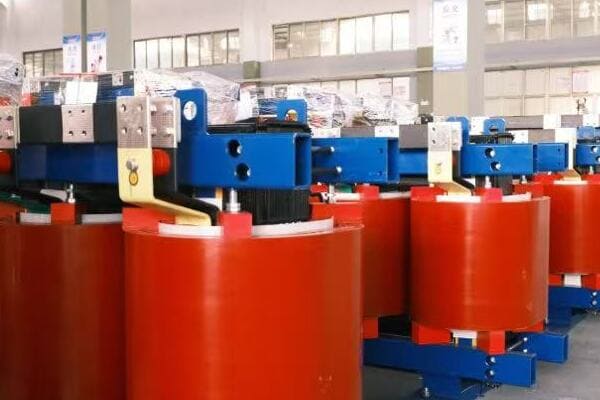
The Importance of Proper Cable Terminations and Connections
Let’s explore why correct cable terminations are crucial and how to ensure they’re done right:
1. Heat Generation and Energy Loss
Key points:
- Loose connections create resistance
- Increased resistance leads to localized heating
- Heat can damage insulation and surrounding components
I once investigated a case where a client reported frequent tripping of their main circuit breaker. Upon inspection, we found severely overheated terminals at the transformer connections. The root cause was improperly torqued bolts that had loosened over time, creating high-resistance points. Correcting these connections resolved the issue and prevented potential equipment damage.
2. Electrical Safety Risks
Critical safety concerns:
- Arcing potential at loose connections
- Fire hazard from overheating
- Risk of electric shock from exposed conductors
3. Power Quality Issues
Impact on system performance:
- Voltage fluctuations due to inconsistent connections
- Harmonic distortion from poor contact
- Potential for single-phasing in three-phase systems
4. Long-term Reliability
Factors affecting longevity:
- Gradual degradation of loose connections over time
- Accelerated aging of insulation due to heat stress
- Increased maintenance requirements and downtime
Here’s a comparison table of proper vs. improper termination practices:
| Aspect | Proper Termination | Improper Termination |
|---|---|---|
| Heat Generation | Minimal | Significant |
| Contact Resistance | Low and stable | High and variable |
| Insulation Stress | Normal aging | Accelerated degradation |
| Maintenance Needs | Routine checks | Frequent interventions |
| System Reliability | High | Compromised |
In my experience, the long-term benefits of proper cable terminations far outweigh the initial time investment. I recall a large industrial project where we implemented a rigorous termination protocol, including precise torque specifications and third-party inspections. Years later, during a routine maintenance check, we found that these connections were still in excellent condition, with no signs of overheating or loosening, demonstrating the lasting value of proper installation practices.
The choice of termination hardware can significantly impact long-term reliability. In a recent high-vibration environment installation, we opted for specialized vibration-resistant connectors. While more expensive initially, these connectors have maintained solid connections despite constant vibration, preventing the frequent maintenance issues the client had experienced with standard connectors in the past.
For installations in corrosive or high-humidity environments, additional considerations are necessary. I worked on a project in a coastal chemical plant where we implemented a comprehensive anti-corrosion strategy for all terminations. This included using corrosion-resistant materials, applying protective coatings, and implementing a regular inspection schedule. The result was a significant improvement in connection reliability and a reduction in corrosion-related failures.
The impact of proper cable routing on termination integrity is often underestimated. In a recent data center upgrade, we paid special attention to cable management, ensuring that cables were routed with proper support and without sharp bends or tension at the termination points. This approach not only improved the reliability of the connections but also facilitated easier maintenance and future modifications.
Thermal imaging has become an invaluable tool in assessing termination quality. I’ve implemented regular thermal scanning programs for critical transformer installations. This proactive approach has allowed us to identify and address potential connection issues before they develop into failures, significantly improving overall system reliability.
Lastly, the trend towards higher power densities in modern electrical systems is placing even greater importance on proper terminations. I’m currently working on a project involving high-capacity transformers where the termination points are handling unprecedented current levels. This has led us to develop new termination techniques and materials to ensure long-term reliability under these demanding conditions.
Ensuring proper cable terminations and connections in dry type transformers is crucial for system reliability, safety, and efficiency. It’s not just about tightening bolts; it’s about creating a stable, low-resistance electrical path that will maintain its integrity over the transformer’s entire operational life. By carefully considering factors like proper sizing, torque specifications, environmental conditions, and long-term stress factors, you can create terminations that will provide years of trouble-free operation. Remember, the extra time and attention paid to proper terminations during installation can prevent costly failures, improve system efficiency, and ensure the safety of your electrical infrastructure.
Mistake #5: Skipping Pre-Commissioning Tests?
Have you ever been tempted to rush a transformer installation, skipping some of the pre-commissioning tests to save time? This shortcut can lead to serious consequences down the line. But why are these tests so crucial, and what risks do you face by omitting them?
**Skipping pre-commissioning tests on dry type transformers can mask dangerous installation flaws, leading to early failures or safety hazards. These tests are crucial for verifying proper installation and transformer health. To avoid issues:
- Conduct insulation resistance testing (Megger)
- Check for short circuits or open phases
- Verify temperature sensor functionality
- Record results for documentation and warranty**
The Importance of Pre-Commissioning Tests
Let’s explore why these tests are vital and what they involve:
1. Insulation Resistance Testing
Key points:
- Verifies insulation integrity
- Detects moisture or contamination issues
- Establishes baseline for future comparisons
I once encountered a case where a client insisted on energizing a new transformer immediately after installation, without proper testing. Within weeks, they experienced a major failure due to insulation breakdown. Our subsequent investigation revealed moisture ingress during transport that could have been easily detected and addressed through proper pre-commissioning tests.
2. Winding Resistance Measurements
Critical checks:
- Ensures proper internal connections
- Detects any winding damage
- Verifies tap changer functionality
3. Turns Ratio Test
Important verifications:
- Confirms correct transformer ratio
- Checks for shorted turns or incorrect winding connections
- Essential for proper voltage transformation
4. Functional Checks of Accessories
Necessary verifications:
- Temperature monitoring systems
- Cooling fans (for AF units)
- Tap changer mechanisms (if applicable)
Here’s a comparison table of outcomes with and without pre-commissioning tests:
| Aspect | With Pre-Commissioning Tests | Without Pre-Commissioning Tests |
|---|---|---|
| Initial Issues Detection | High | Low |
| Operational Reliability | Verified | Uncertain |
| Warranty Validity | Ensured | Potentially Compromised |
| Baseline Data for Future | Available | Absent |
| Safety Assurance | Confirmed | Assumed |
In my experience, the value of thorough pre-commissioning tests becomes most apparent in the long run. I recall a large-scale industrial project where we insisted on comprehensive testing despite tight deadlines. This process uncovered a minor manufacturing defect in one unit that could have led to a major failure if left undetected. The slight delay in commissioning was insignificant compared to the potential downtime and replacement costs we avoided.
The data gathered during pre-commissioning tests is invaluable for future maintenance. In a recent power distribution upgrade project, we conducted extensive baseline tests on all new transformers. This data has since proven crucial in identifying subtle changes in transformer condition during routine maintenance, allowing for proactive interventions before issues become critical.
For installations in harsh environments, pre-commissioning tests can be particularly revealing. I worked on a project in a high-humidity coastal area where insulation resistance tests indicated potential moisture issues in several units. This led to additional drying procedures before installation, likely preventing premature insulation failures.
The integration of advanced diagnostic tools in pre-commissioning has revolutionized the process. In a recent smart grid project, we utilized online partial discharge testing as part of the commissioning process. This advanced technique allowed us to detect subtle insulation weaknesses that traditional tests might have missed, ensuring an even higher level of reliability for these critical components.
Pre-commissioning tests also play a crucial role in warranty validation. I’ve seen cases where transformer failures were initially disputed by manufacturers due to a lack of proper commissioning data. Now, I always advise clients to maintain detailed records of all pre-commissioning tests, as this documentation can be invaluable in the event of warranty claims.
Lastly, the trend towards more compact and efficient transformers is changing the landscape of pre-commissioning tests. I’m currently working on a project involving high-efficiency amorphous core transformers. These units require specialized testing procedures to verify their unique performance characteristics, highlighting the need for continual adaptation of testing protocols to keep pace with evolving technology.
Conducting thorough pre-commissioning tests on dry type transformers is not just a procedural formality; it’s a critical step in ensuring the safety, reliability, and longevity of your electrical system. These tests provide vital information about the condition of the transformer at installation, establish important baselines for future comparisons, and can uncover hidden issues before they become major problems. By investing time in proper testing, you’re not just verifying the current state of the transformer; you’re laying the groundwork for its entire operational life. Remember, the relatively small investment in time and resources for pre-commissioning tests can prevent major headaches, costly failures, and potential safety hazards down the line.
Mistake #6: Ignoring Load Profile and Cooling Method Match?
Have you ever encountered a transformer that consistently runs hot or trips unexpectedly under load? This common issue often stems from a critical mismatch between the transformer’s cooling method and its actual load profile. But why is this match so important, and what happens when you get it wrong?
**Ignoring the match between load profile and cooling method in dry type transformers can lead to overheating, reduced efficiency, and premature failure. The cooling system must be adequate for the actual load conditions. To avoid this:
- Match cooling type (AN or AF) to load conditions
- Use AF units for high ambient temperatures or cyclic loads
- Consider thermal sensors for continuous monitoring**
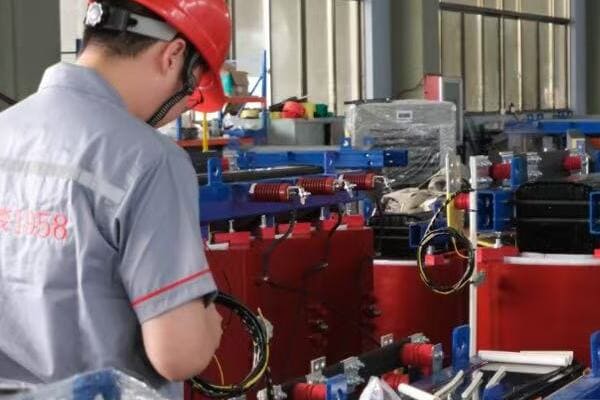
Understanding the Importance of Load Profile and Cooling Method Compatibility
Let’s explore why this match is crucial and how to ensure it’s correct:
1. Load Profile Basics
Key considerations:
- Steady-state vs. variable loads
- Peak load durations and frequencies
- Daily and seasonal load variations
I once investigated a case where a data center experienced frequent transformer overheating alarms. The root cause was an AN (Air Natural) cooled transformer being used in an environment with highly variable loads. Replacing it with an AF (Air Forced) unit resolved the issue, highlighting the importance of matching cooling method to actual load patterns.
2. Cooling Method Characteristics
Comparison of cooling types:
- AN: Suitable for steady, lower loads
- AF: Better for variable or higher loads
- Hybrid systems for flexible load handling
3. Environmental Factors
Impact on cooling efficiency:
- Ambient temperature fluctuations
- Installation location (indoor vs. outdoor)
- Air quality and potential for contamination
4. Energy Efficiency Considerations
Balancing cooling and efficiency:
- Over-cooling can lead to energy waste
- Under-cooling risks equipment damage
- Optimal matching improves overall system efficiency
Here’s a comparison table of cooling methods and their suitability for different load profiles:
| Load Profile | AN Cooling | AF Cooling | Hybrid System |
|---|---|---|---|
| Steady, Low Load | Excellent | Good (may be overkill) | Good |
| Variable Load | Poor | Excellent | Very Good |
| High Ambient Temp | Poor | Good | Very Good |
| Frequent Overloads | Poor | Good | Excellent |
| Energy Efficiency | High (for suitable loads) | Moderate | High (with smart control) |
In my experience, the long-term benefits of properly matching cooling methods to load profiles far outweigh the initial planning effort. I recall a project for a manufacturing plant where we implemented a hybrid cooling system – AN base with AF boost for peak loads. This approach not only handled the variable load profile effectively but also optimized energy consumption, leading to significant operational cost savings over time.
The impact of environmental conditions on cooling method selection is often underestimated. In a recent project in a hot, arid climate, we opted for AF cooling even for relatively steady loads. The high ambient temperatures made AN cooling insufficient, and the AF system ensured reliable operation even during the hottest parts of the day.
For installations with highly variable or unpredictable loads, advanced monitoring can be crucial. I worked on a renewable energy integration project where the transformer load varied significantly based on solar and wind generation. We implemented a smart cooling system with real-time load monitoring and adaptive fan control. This approach ensured optimal cooling under all conditions while minimizing energy consumption.
The trend towards more energy-efficient transformers is changing the landscape of cooling requirements. I’m currently involved in a project using high-efficiency amorphous core transformers. These units generate less heat overall, but still require careful cooling consideration, especially for peak load handling. We’re implementing a sophisticated thermal management system that balances the transformer’s improved efficiency with appropriate cooling for various load scenarios.
Retrofitting existing installations to better match cooling methods to actual load profiles can be challenging but rewarding. In a recent industrial upgrade project, we modified several AN-cooled transformers to AF systems based on years of load data. This retrofit not only improved reliability but also allowed for increased power throughput without replacing the entire transformer.
Lastly, the integration of transformers into smart grid systems is introducing new dynamics in load profile management. I’m currently advising on a smart grid project where transformer cooling systems are being integrated with grid-level load management. This allows for predictive cooling adjustments based on anticipated load changes, further optimizing the balance between cooling effectiveness and energy efficiency.
The importance of matching load profiles to cooling methods in dry type transformers cannot be overstated. It’s not just about preventing overheating; it’s about ensuring optimal performance, energy efficiency, and longevity of the transformer. By carefully analyzing load patterns, considering environmental factors, and selecting the appropriate cooling method, you can create a transformer installation that operates reliably and efficiently under all conditions. Remember, the extra effort spent on proper cooling method selection during the planning phase can prevent costly operational issues and extend the life of your transformer significantly.
Mistake #7: No Grounding or Improper Grounding?
Have you ever experienced unexplained electrical disturbances or safety concerns with your transformer installation? These issues often trace back to a critical but sometimes overlooked aspect: proper grounding. But why is grounding so crucial, and what risks do you face when it’s done incorrectly or neglected entirely?
**Lack of grounding or improper grounding in dry type transformers can lead to safety hazards, equipment damage, and power quality issues. Proper grounding is essential for personnel safety and equipment protection. To ensure correct grounding:
- Ensure both core and enclosure grounding
- Use conductors sized per NEC/IEC standards
- Verify continuity with multimeter during commissioning**
Understanding the Importance of Proper Grounding
Let’s explore why correct grounding is vital and how to implement it effectively:
1. Safety Considerations
Key safety aspects:
- Protection against electric shock
- Fault current diversion
- Mitigation of step and touch potentials
I once investigated a case where maintenance personnel reported receiving mild shocks when touching the transformer enclosure. Our inspection revealed that the equipment grounding conductor had been improperly terminated, creating a potentially dangerous situation. Correcting the grounding immediately resolved the safety issue.
2. Equipment Protection
Grounding benefits for equipment:
- Overvoltage protection
- Reduction of electromagnetic interference
- Stabilization of voltage levels
3. Power Quality Improvement
Impact on system performance:
- Reduction of common-mode noise
- Minimization of ground loops
- Enhanced overall system stability
4. Regulatory Compliance
Adherence to standards:
- National Electrical Code (NEC) requirements
- IEC standards for international installations
- Local electrical safety regulations
Here’s a comparison table of proper vs. improper grounding practices:
| Aspect | Proper Grounding | Improper or No Grounding |
|---|---|---|
| Personnel Safety | High | Compromised |
| Equipment Protection | Effective | Limited or None |
| Power Quality | Improved | Potentially Degraded |
| EMI/RFI Mitigation | Good | Poor |
| Regulatory Compliance | Assured | Non-Compliant |
In my experience, the importance of proper grounding often becomes most apparent in troubleshooting scenarios. I recall a project where a facility was experiencing persistent issues with sensitive electronic equipment. Our investigation revealed that improper transformer grounding was creating ground potential differences, leading to circulating currents and electromagnetic interference. Implementing a proper grounding system resolved these issues, highlighting the far-reaching impacts of correct grounding practices.
The choice of grounding method can significantly affect system performance. In a recent data center project, we implemented a carefully designed equipotential grounding system for all transformers and associated equipment. This approach not only enhanced safety but also dramatically reduced noise in the facility’s sensitive data processing equipment.
For installations in areas with poor soil conductivity, creative grounding solutions are sometimes necessary. I worked on a project in a rocky terrain where achieving low ground resistance was challenging. We implemented an extensive ground grid system combined with soil treatment to achieve the required grounding performance. This solution ensured both safety and proper equipment operation in a challenging environment.
The interaction between transformer grounding and lightning protection systems is an often-overlooked aspect. In a recent high-rise building project, we integrated the transformer grounding system with the building’s lightning protection. This comprehensive approach provided enhanced protection against both internal faults and external lightning strikes.
Monitoring and maintenance of grounding systems are crucial for long-term effectiveness. I’ve implemented programs for periodic testing of ground resistance and continuity in critical installations. This proactive approach has helped identify and address potential grounding issues before they could impact safety or equipment performance.
The trend towards more complex power systems with multiple sources, including renewable energy, is changing grounding requirements. I’m currently working on a microgrid project where the grounding system must accommodate bidirectional power flow and varying system configurations. This has led to the development of adaptive grounding strategies that can adjust to different operational modes.
Lastly, the increasing use of power electronics in and around transformers is placing new demands on grounding systems. In a recent industrial automation project, we had to design a grounding system that could effectively handle high-frequency noise from variable frequency drives while still providing traditional power frequency protection. This required a multi-layered approach combining traditional grounding techniques with high-frequency grounding strategies.
Proper grounding of dry type transformers is not just a regulatory requirement; it’s a fundamental aspect of safe and reliable electrical system operation. It protects personnel, safeguards equipment, improves power quality, and ensures regulatory compliance. By carefully considering factors like conductor sizing, connection methods, and system-wide grounding strategy, you can create a grounding system that provides comprehensive protection and optimal performance. Remember, while proper grounding might seem like a basic aspect of installation, its importance cannot be overstated – it’s often the difference between a safe, reliable system and one prone to hazards and operational issues.
Summary Checklist: Dry Type Transformer Installation Essentials?
Are you preparing for a dry type transformer installation and want to ensure you’ve covered all the critical bases? This comprehensive checklist will guide you through the essential steps to avoid common pitfalls and ensure a safe, efficient, and reliable installation. Let’s make sure you’ve got all your bases covered before powering up your transformer.
Essential checklist for dry type transformer installation:
✅ Allow proper ventilation (≥1m clearance)
✅ Use vibration-damped, level foundations
✅ Select correct IP rating based on environment
✅ Tighten and inspect all cable connections
✅ Perform insulation and functional tests
✅ Match cooling method to load profile
✅ Ground transformer body and core securely
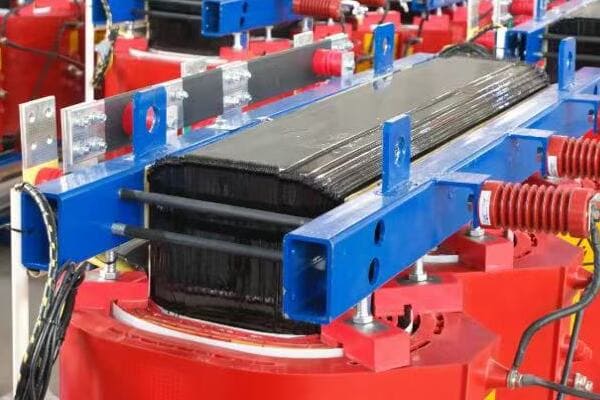
Comprehensive Dry Type Transformer Installation Checklist
Let’s break down each point in detail:
1. Ventilation and Clearance
Key requirements:
- Minimum 1 meter clearance on all sides
- Unobstructed airflow path
- No heat sources near the transformer
I once consulted on a project where inadequate clearance led to chronic overheating issues. Redesigning the installation layout to provide proper ventilation resolved the problem and significantly improved the transformer’s performance and lifespan.
2. Foundation and Mounting
Critical aspects:
- Level, reinforced concrete pad
- Vibration isolation if needed
- Proper anchoring and alignment
3. Environmental Protection (IP Rating)
Considerations:
- Indoor vs. outdoor installation
- Presence of dust, moisture, or corrosive elements
- Future environmental changes
4. Cable Connections
Important steps:
- Use properly sized and rated cables
- Apply correct torque to all connections
- Implement proper cable management
5. Pre-Commissioning Tests
Essential tests:
- Insulation resistance (Megger test)
- Winding resistance measurement
- Turns ratio test
- Functional checks of all accessories
6. Cooling System Verification
Key points:
- Match cooling type (AN/AF) to load profile
- Verify fan operation for AF units
- Ensure proper thermostat settings
7. Grounding
Critical elements:
- Core and enclosure grounding
- Properly sized grounding conductors
- Verification of ground continuity
Here’s a detailed checklist table for transformer installation:
| Category | Item | Completed | Notes |
|---|---|---|---|
| Ventilation | 1m clearance on all sides | ☐ | |
| Unobstructed air intake and exhaust | ☐ | ||
| Foundation | Level concrete pad installed | ☐ | |
| Vibration isolation implemented | ☐ | ||
| Environmental | Correct IP rating for location | ☐ | |
| Weather protection (if outdoor) | ☐ | ||
| Connections | Cables properly sized and terminated | ☐ | |
| All connections torqued to spec | ☐ | ||
| Testing | Insulation resistance test performed | ☐ | |
| Turns ratio test completed | ☐ | ||
| Cooling | Cooling method matches load profile | ☐ | |
| Fan operation verified (for AF units) | ☐ | ||
| Grounding | Core and enclosure properly grounded | ☐ | |
| Ground continuity verified | ☐ |
In my experience, this checklist has been invaluable in ensuring comprehensive and correct transformer installations. I recall a complex industrial project where we used a similar checklist. It helped us identify and address several potential issues before energizing the transformers, preventing costly downtime and ensuring a smooth startup.
The importance of thorough documentation during the installation process cannot be overstated. In a recent large-scale installation, we implemented a digital checklist system that allowed real-time tracking of each step. This not only ensured nothing was overlooked but also provided a valuable record for future maintenance and troubleshooting.
Environmental considerations often play a crucial role in installation decisions. I worked on a project in a coastal area where we had to carefully consider salt air exposure. Our checklist included additional steps for corrosion protection, which proved invaluable in extending the life of the installation in this harsh environment.
The integration of smart monitoring systems is becoming an important part of modern installations. In a recent data center project, our checklist included steps for setting up and verifying advanced monitoring equipment. This proactive approach has allowed for predictive maintenance, significantly reducing the risk of unexpected failures.
Compliance with evolving regulations is another critical aspect. I’m currently advising on a project where we’re not only meeting current installation standards but also anticipating future regulatory changes. Our expanded checklist includes considerations for potential upgrades, ensuring long-term compliance and avoiding costly retrofits.
Lastly, the importance of team training and communication in following the checklist cannot be overstated. In a recent multi-site rollout, we conducted comprehensive training sessions on the checklist usage. This ensured consistency across all installations and empowered the team to identify and address potential issues proactively.
This comprehensive checklist for dry type transformer installation serves as a powerful tool to ensure all critical aspects are considered and addressed. By methodically working through each point, you can significantly reduce the risk of installation errors, enhance safety, and optimize the long-term performance of your transformer. Remember, thorough preparation and attention to detail during installation pay dividends throughout the transformer’s entire operational life. Use this checklist as a guide, but also be prepared to adapt it to the specific needs of your installation environment and project requirements.
Conclusion
Proper installation of dry type transformers is crucial for safety, efficiency, and longevity. By avoiding common mistakes in ventilation, mounting, environmental protection, connections, testing, cooling, and grounding, you can ensure optimal performance and reliability. Always follow a comprehensive checklist and consult experts when in doubt.Need Help With Transformer Installation?🛠️ Want a smooth, safe, and compliant installation?📥 Download our free installation checklist or contact our engineers for on-site support and product recommendations.
Are you concerned about the environmental impact of your power distribution system? You’re not alone. Many engineers and facility managers are seeking safer, cleaner alternatives to traditional oil-filled transformers. But what if there was a solution that could eliminate oil leaks, reduce fire risks, and allow for safer indoor installations?
Dry type transformers offer key environmental benefits: they use no oil, generate minimal emissions, and eliminate fire and leakage risks. Their safe, low-maintenance design makes them ideal for indoor use in commercial, industrial, and public infrastructure projects.
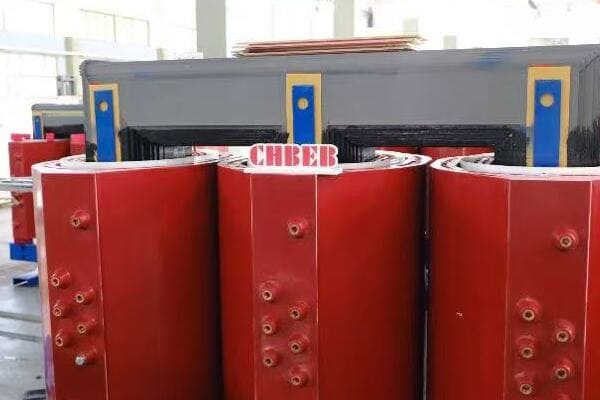
In this article, I’ll explore the significant environmental advantages of dry type transformers. We’ll dive into their oil-free design, enhanced fire safety, suitability for indoor use, and compliance with green energy standards. Whether you’re planning a new installation or upgrading an existing system, understanding these benefits will help you make an informed decision that’s both environmentally responsible and operationally sound.
Why Environmental Considerations Matter in Transformer Selection?
Have you ever wondered about the long-term environmental impact of your transformer choice? It’s a question that’s becoming increasingly important in our eco-conscious world. But why exactly should environmental factors play a crucial role in your transformer selection process?
**Environmental considerations in transformer selection are crucial for several reasons:
- Regulatory compliance with stricter environmental laws
- Reduced risk of soil and water contamination
- Enhanced safety for personnel and surrounding areas
- Lower long-term costs associated with environmental management
- Alignment with corporate sustainability goals and public image**
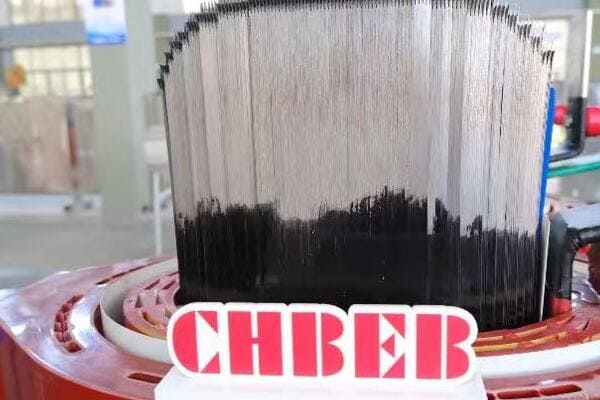
The Importance of Environmental Factors in Transformer Choice
Let’s delve deeper into why environmental considerations should be at the forefront of your transformer selection process:
1. Regulatory Compliance
Key points:
- Increasingly stringent environmental regulations
- Potential fines and legal issues for non-compliance
- Future-proofing against expected regulatory changes
I once worked on a project where a client had to replace their entire transformer fleet due to new environmental regulations. The cost and disruption could have been avoided if environmental factors had been considered in the initial selection.
2. Risk Mitigation
Environmental risks include:
- Soil and groundwater contamination from oil leaks
- Air pollution from potential fires
- Long-term health impacts on surrounding communities
3. Safety Enhancements
Safety benefits of environmentally friendly transformers:
- Reduced fire hazards
- Elimination of oil spill risks
- Safer handling and maintenance procedures
4. Cost Implications
Long-term cost factors:
- Lower insurance premiums for safer installations
- Reduced environmental management and monitoring costs
- Avoidance of potential cleanup and remediation expenses
Here’s a comparison table of environmental considerations for different transformer types:
| Aspect | Oil-Filled Transformer | Dry Type Transformer |
|---|---|---|
| Risk of Oil Leaks | High | None |
| Fire Hazard | Significant | Minimal |
| Indoor Use Safety | Limited | Excellent |
| Environmental Monitoring | Extensive | Minimal |
| End-of-Life Disposal | Complex | Simpler |
In my experience, the importance of environmental factors in transformer selection often becomes apparent long after the initial installation. I recall a project where a company chose standard oil-filled transformers to save on upfront costs. Years later, they faced significant expenses and reputational damage due to a minor oil leak that contaminated the surrounding soil. This incident highlighted the long-term value of environmentally friendly options like dry type transformers.
The impact on corporate sustainability goals is another crucial factor. I recently consulted for a company aiming to achieve carbon neutrality. By selecting eco-friendly dry type transformers, they not only reduced their environmental footprint but also improved their sustainability ratings, which had a positive impact on their brand image and stakeholder relations.
Public perception and community relations can be significantly influenced by transformer choices. In a project for a substation near a residential area, the selection of dry type transformers helped alleviate community concerns about safety and environmental impact. This choice facilitated a smoother approval process and better long-term community acceptance of the installation.
The adaptability to future environmental standards is an often-overlooked aspect. I’m currently working on a project where we’re implementing transformers that not only meet current standards but are also designed to comply with anticipated future regulations. This forward-thinking approach protects the client from potential costly upgrades or replacements due to regulatory changes.
Lastly, the role of transformers in achieving broader environmental goals shouldn’t be underestimated. In a recent smart grid project, the selection of environmentally friendly transformers was a key component in the overall strategy to create a more sustainable and efficient power distribution system. This holistic approach demonstrated how individual component choices can contribute to larger environmental initiatives.
Considering environmental factors in transformer selection is not just about compliance or risk mitigation; it’s about making a responsible choice that aligns with broader sustainability goals. By prioritizing these considerations, you’re not only protecting the environment but also making a decision that often proves to be more cost-effective and operationally sound in the long run. As we continue to face growing environmental challenges, the choice of eco-friendly transformer solutions like dry type units becomes increasingly important in building a sustainable and resilient power infrastructure.
No Oil, No Risk – The Pollution-Free Design Advantage?
Are you tired of worrying about potential oil leaks and environmental contamination from your transformers? You’re not alone. Many facility managers and environmental officers grapple with the risks associated with oil-filled transformers. But what if there was a solution that eliminated these concerns entirely?
**Dry type transformers offer a pollution-free design advantage:
- No oil means zero risk of leaks or spills
- Eliminates the need for containment systems
- Reduces environmental monitoring and reporting requirements
- Simplifies maintenance and disposal procedures
- Ideal for environmentally sensitive locations**

Exploring the Benefits of Oil-Free Transformer Design
Let’s delve into the advantages of the oil-free design in dry type transformers:
1. Elimination of Oil Leaks
Key benefits:
- No risk of soil or water contamination
- Avoidance of costly cleanup operations
- Protection of surrounding ecosystems
I once worked on a project replacing oil-filled transformers in a water treatment facility. The switch to dry type units eliminated the constant worry about potential oil contamination of the water supply, providing peace of mind to both operators and the community.
2. Simplified Environmental Compliance
Advantages in regulatory compliance:
- Reduced reporting requirements
- Elimination of oil handling and disposal regulations
- Easier permitting process for sensitive locations
3. Lower Maintenance and Operational Costs
Cost-saving aspects:
- No need for regular oil testing and replacement
- Elimination of oil filtration systems
- Reduced need for specialized handling equipment
4. Enhanced Safety for Personnel
Safety improvements:
- No exposure to potentially harmful transformer oils
- Reduced risk of slips and falls from oil leaks
- Simplified emergency response procedures
Here’s a comparison table of environmental risks between oil-filled and dry type transformers:
| Environmental Risk | Oil-Filled Transformer | Dry Type Transformer |
|---|---|---|
| Soil Contamination | High | None |
| Water Pollution | Significant | None |
| Hazardous Waste Generation | Regular (oil disposal) | Minimal |
| Wildlife Impact | Potential | Negligible |
| Long-term Environmental Liability | Substantial | Minimal |
In my experience, the pollution-free design of dry type transformers often leads to significant long-term benefits. I recall a project for a manufacturing plant located near a protected wetland. The choice of dry type transformers not only simplified the environmental impact assessment process but also provided ongoing assurance against potential ecological damage. This decision proved invaluable when the local environmental regulations became more stringent years later.
The simplification of maintenance procedures is another major advantage. In a recent industrial project, we replaced several aging oil-filled units with dry type transformers. The maintenance team reported a dramatic reduction in routine tasks and associated costs. They no longer needed to perform regular oil tests, manage oil inventories, or worry about disposal of contaminated oil.
The impact on emergency preparedness is often underappreciated. I worked with a facility that transitioned to dry type transformers as part of a comprehensive safety upgrade. The elimination of oil significantly simplified their emergency response plans and reduced the potential severity of incidents. This not only enhanced safety but also led to reduced insurance premiums.
For installations in environmentally sensitive areas, dry type transformers can be a game-changer. In a recent project near a national park, the use of oil-free transformers was crucial in obtaining permits. The absence of potential oil contamination risks made it much easier to demonstrate environmental responsibility and gain approval from conservation authorities.
The end-of-life considerations also favor dry type transformers. I’m currently advising on a large-scale transformer replacement program where the simplified disposal process of dry type units is a key factor. Unlike oil-filled transformers, which require careful handling and disposal of potentially contaminated oil, dry type units can be more easily recycled, aligning better with circular economy principles.
Lastly, the adaptability to changing environmental standards is a significant advantage. In an ongoing smart grid project, we’re implementing dry type transformers as part of a future-proof design. Their oil-free nature provides flexibility in meeting potential future regulations on hazardous materials and environmental protection.
The pollution-free design of dry type transformers offers a compelling advantage in today’s environmentally conscious world. By eliminating the risks associated with oil leaks and spills, these transformers provide a safer, more environmentally friendly option for power distribution. The benefits extend beyond just environmental protection to include simplified maintenance, enhanced safety, and easier regulatory compliance. As we continue to prioritize sustainability and environmental responsibility in our infrastructure, the oil-free design of dry type transformers represents a significant step forward in creating cleaner, safer electrical systems.
Fire Safety Benefits of Dry Type Transformers?
Are you concerned about fire risks in your electrical infrastructure? You should be. Transformer fires can be catastrophic, leading to extensive damage, costly downtime, and potential loss of life. But what if there was a transformer option that significantly reduced these fire risks?
**Dry type transformers offer superior fire safety benefits:
- Non-flammable materials eliminate the risk of oil fires
- Higher fire resistance ratings (up to class F1)
- Reduced need for extensive fire suppression systems
- Safer for indoor and populated areas
- Lower insurance premiums due to reduced fire risk**
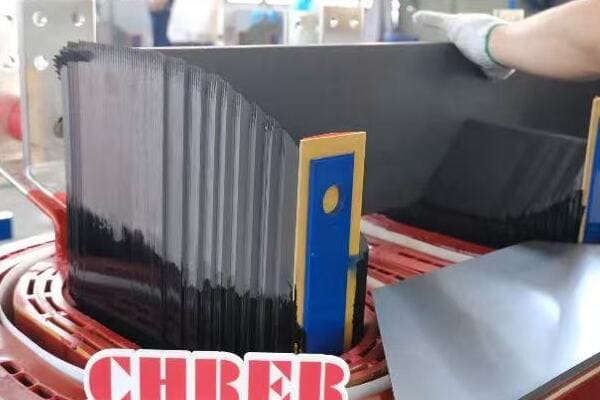
Exploring the Fire Safety Advantages of Dry Type Transformers
Let’s delve into the specific fire safety benefits that make dry type transformers a superior choice:
1. Non-Flammable Construction
Key features:
- Use of fire-resistant insulation materials
- Absence of combustible oil
- Reduced fire propagation potential
I once consulted on a project retrofitting an old urban substation. The switch to dry type transformers allowed us to significantly reduce the fire risk in a densely populated area, easing both regulatory approvals and community concerns.
2. Enhanced Fire Resistance Ratings
Fire safety classifications:
- F0: No specific fire behavior requirements
- F1: Limited flammability and self-extinguishing properties
- F2: Highest level of fire resistance (rare in transformers)
3. Simplified Fire Protection Systems
Advantages in fire safety infrastructure:
- Reduced need for extensive fire walls
- Minimized requirements for oil containment and drainage
- Potential elimination of dedicated fire suppression systems
4. Improved Safety in Populated Areas
Benefits for public safety:
- Safer for installation near residential or commercial areas
- Reduced evacuation zone requirements
- Lower risk to surrounding structures in case of failure
Here’s a comparison table of fire safety aspects between oil-filled and dry type transformers:
| Fire Safety Aspect | Oil-Filled Transformer | Dry Type Transformer |
|---|---|---|
| Flammable Materials | Yes (oil) | No |
| Fire Initiation Risk | Higher | Lower |
| Fire Spread Potential | Significant | Minimal |
| Smoke Generation | Heavy, toxic | Limited |
| Required Fire Suppression | Extensive | Minimal |
In my experience, the fire safety benefits of dry type transformers often become most apparent in retrofit projects. I recall a case where we replaced oil-filled transformers in the basement of a high-rise office building. The switch to dry type units not only enhanced fire safety but also allowed for the repurposing of space previously dedicated to fire containment, adding valuable real estate to the building.
The impact on insurance costs can be substantial. In a recent industrial project, the client saw a significant reduction in their insurance premiums after switching to dry type transformers. The insurance company recognized the reduced fire risk, translating to immediate cost savings for the facility.
For critical infrastructure, the fire safety of dry type transformers can be crucial. I worked on a project for a data center where minimizing fire risk was paramount. The use of F1-rated dry type transformers was a key factor in achieving the stringent fire safety standards required for this high-reliability environment.
The simplified emergency response planning is another significant advantage. In a hospital upgrade project, the adoption of dry type transformers allowed for a streamlined fire safety strategy. The reduced fire risk simplified evacuation procedures and minimized potential disruptions to critical care areas in case of electrical system issues.
Environmental considerations often intersect with fire safety. In a recent project near a protected forest area, the use of dry type transformers was crucial in obtaining environmental permits. The elimination of oil fire risks was a key factor in demonstrating the project’s commitment to environmental protection and fire safety.
Lastly, the evolving landscape of urban development is making the fire safety benefits of dry type transformers increasingly relevant. I’m currently advising on a smart city project where the compact, fire-safe nature of dry type transformers is enabling more flexible and integrated electrical infrastructure design in densely populated areas.
The fire safety benefits of dry type transformers represent a significant advancement in electrical system safety. By eliminating flammable materials and offering superior fire resistance, these transformers provide a safer option for a wide range of applications, from urban environments to critical facilities. The reduced fire risk not only enhances safety for personnel and the public but also offers tangible benefits in terms of simplified fire protection systems and potential cost savings. As we continue to prioritize safety in our infrastructure, the fire-resistant properties of dry type transformers make them an increasingly attractive choice for modern electrical systems.
Ideal for Indoor and Public Space Installations?
Are you struggling to find a safe and efficient transformer solution for indoor or public space installations? You’re not alone. Many engineers and facility managers face challenges when it comes to placing transformers in areas with high foot traffic or limited ventilation. But what if there was a transformer type specifically designed to excel in these environments?
**Dry type transformers are ideal for indoor and public space installations:
- Compact design fits in space-constrained areas
- No oil leaks or fumes, ensuring clean and safe environments
- Quiet operation suitable for noise-sensitive locations
- Minimal ventilation requirements
- Enhanced safety for high-traffic areas
- Compliance with stringent indoor installation codes**
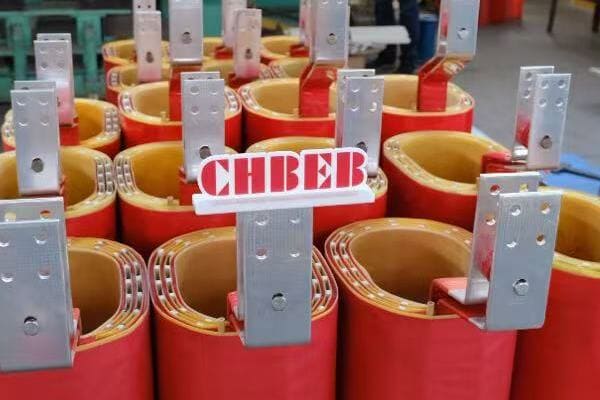
Exploring the Advantages of Dry Type Transformers in Indoor and Public Spaces
Let’s delve into why dry type transformers are the superior choice for indoor and public installations:
1. Space Efficiency
Key benefits:
- Smaller footprint compared to oil-filled units
- Flexible installation options (floor, wall-mounted)
- Easier integration into building designs
I once worked on a project retrofitting an old office building with a new electrical system. The compact size of dry type transformers allowed us to install them in the basement, close to the main distribution panel, without sacrificing valuable floor space.
2. Enhanced Safety for Occupants
Safety advantages:
- No risk of oil leaks or spills in public areas
- Reduced fire hazard
- Minimal exposure to electromagnetic fields
3. Quiet Operation
Noise reduction features:
- Low sound levels suitable for offices, hospitals, and schools
- Elimination of cooling fan noise in many models
- Compliance with strict noise regulations in urban areas
4. Simplified Ventilation Requirements
Ventilation benefits:
- Reduced need for extensive cooling systems
- Lower heat generation compared to oil-filled units
- Easier compliance with indoor air quality standards
Here’s a comparison table of indoor installation aspects between oil-filled and dry type transformers:
| Aspect | Oil-Filled Transformer | Dry Type Transformer |
|---|---|---|
| Space Requirement | Larger (oil tank, cooling) | Compact |
| Safety in Public Areas | Limited | Excellent |
| Noise Level | Higher | Lower |
| Ventilation Needs | Extensive | Minimal |
| Installation Flexibility | Limited | High |
In my experience, the suitability of dry type transformers for indoor installations often leads to creative design solutions. I recall a project for a modern art museum where we integrated compact dry type transformers into the building’s architecture. Their silent operation and absence of oil allowed for installations near gallery spaces without compromising the visitor experience or artwork safety.
The impact on building safety systems can be significant. In a recent high-rise residential project, the use of dry type transformers simplified the building’s fire safety design. We were able to place transformers on various floors without the need for extensive fire suppression systems or oil containment measures, enhancing overall building efficiency and safety.
Ventilation requirements are a crucial factor in indoor installations. I worked on a data center project where the reduced heat generation and minimal ventilation needs of dry type transformers were key advantages. This allowed for a more efficient cooling system design, contributing to the facility’s overall energy efficiency goals.
The flexibility in placement is another significant benefit. In a recent university library renovation, we were able to install dry type transformers in the basement, freeing up valuable space on upper floors for student areas. The quiet operation and minimal electromagnetic interference ensured no disruption to study spaces above.
For public transit projects, dry type transformers offer unique advantages. I consulted on a subway station upgrade where the compact, oil-free design of dry type units was crucial. We installed them in confined spaces within the station, improving power distribution without compromising passenger safety or comfort.
The impact on indoor air quality is often overlooked. In a hospital expansion project, the choice of dry type transformers eliminated concerns about oil fumes or potential contamination. This was particularly important in areas near patient rooms and operating theaters, where air quality is paramount.
Lastly, the adaptability to smart building technologies is becoming increasingly relevant. I’m currently involved in a smart office complex project where dry type transformers are being integrated with building management systems. Their compatibility with advanced monitoring and control systems is enabling more efficient energy management and predictive maintenance strategies.
The suitability of dry type transformers for indoor and public space installations represents a significant advancement in urban and commercial power distribution. Their compact size, enhanced safety features, quiet operation, and minimal ventilation requirements make them an ideal choice for a wide range of applications, from office buildings to hospitals and educational institutions. As our built environments become more complex and space-constrained, the versatility and safety of dry type transformers will likely make them an increasingly popular choice for indoor and public space power solutions.
Green Energy Compliance: RoHS, REACH, and Sustainable Materials?
Are you concerned about meeting increasingly stringent environmental regulations in your power distribution projects? You’re not alone. Many engineers and project managers struggle to navigate the complex landscape of green energy compliance. But what if there was a transformer solution that not only met these standards but exceeded them?
**Dry type transformers offer excellent green energy compliance:
- Meet or exceed RoHS and REACH standards
- Use of sustainable and recyclable materials
- Lower environmental impact throughout lifecycle
- Easier compliance with green building certifications
- Reduced carbon footprint in manufacturing and operation**
Exploring Green Energy Compliance in Dry Type Transformers
Let’s delve into how dry type transformers align with key environmental standards and sustainable practices:
1. RoHS Compliance
Key aspects of RoHS (Restriction of Hazardous Substances) compliance:
- Elimination of lead, mercury, and other hazardous materials
- Use of alternative, environmentally friendly substances
- Reduced environmental impact at end-of-life disposal
I once worked on a project upgrading a manufacturing facility’s electrical system to meet RoHS standards. The switch to dry type transformers was crucial in achieving compliance, particularly in eliminating the use of certain restricted flame retardants common in older transformer designs.
2. REACH Adherence
REACH (Registration, Evaluation, Authorization and Restriction of Chemicals) considerations:
- Careful selection of chemicals and materials
- Transparency in material composition
- Reduced risk of harmful substance exposure
3. Sustainable Material Usage
Eco-friendly material choices:
- Recyclable metals and plastics
- Bio-based insulation materials
- Reduction in use of scarce or environmentally harmful resources
4. Lifecycle Environmental Impact
Factors contributing to reduced environmental footprint:
- Energy-efficient operation
- Longer lifespan reducing replacement frequency
- Easier and cleaner disposal at end-of-life
Here’s a comparison table of environmental compliance aspects between traditional and dry type transformers:
| Aspect | Traditional Transformer | Dry Type Transformer |
|---|---|---|
| RoHS Compliance | Often challenging | Typically compliant |
| REACH Adherence | Varies | Generally adherent |
| Recyclable Materials | Limited | Extensive use |
| Lifecycle Impact | Higher | Lower |
| Green Building Certification | More difficult | Easier to achieve |
In my experience, the green compliance of dry type transformers often becomes a decisive factor in modern construction projects. I recall a LEED-certified office building project where the use of environmentally compliant dry type transformers contributed significantly to achieving the desired green building rating. Their low environmental impact and use of sustainable materials aligned perfectly with the project’s sustainability goals.
The impact on corporate sustainability initiatives can be substantial. In a recent project for a multinational company, the selection of REACH-compliant dry type transformers was a key component of their broader environmental responsibility program. This choice not only ensured regulatory compliance but also supported the company’s public commitment to sustainable practices.
For projects in environmentally sensitive areas, the green credentials of dry type transformers can be crucial. I worked on an installation near a protected watershed where the use of RoHS-compliant transformers was essential in obtaining environmental permits. The absence of hazardous substances provided assurance against potential ecological impacts.
The recyclability aspect of dry type transformers is becoming increasingly important. In a recent large-scale urban development project, we emphasized the use of transformers with highly recyclable components. This approach not only aligned with circular economy principles but also simplified end-of-life planning for the electrical infrastructure.
Energy efficiency is a critical component of green compliance. I’m currently advising on a smart grid project where the energy-efficient operation of dry type transformers is contributing to overall system sustainability. Their lower losses and optimized performance are key factors in reducing the grid’s carbon footprint.
Lastly, the trend towards more transparent supply chains is influencing transformer selection. In an ongoing project for a sustainability-focused tech company, we’re implementing dry type transformers with fully traceable material sourcing. This level of transparency in the supply chain is becoming increasingly important for companies committed to comprehensive environmental and ethical standards.
The green energy compliance of dry type transformers represents a significant step forward in creating more sustainable electrical infrastructure. By meeting and often exceeding standards like RoHS and REACH, and incorporating sustainable materials and practices, these transformers offer a solution that aligns with the growing emphasis on environmental responsibility. As regulations continue to evolve and sustainability becomes increasingly central to project planning, the environmental benefits of dry type transformers will likely make them an even more attractive choice for forward-thinking engineers and project managers.
Summary: Top 5 Environmental Advantages of Dry Type Transformers?
Are you looking for a quick overview of why dry type transformers are the environmentally superior choice? You’re in the right place. After exploring the various aspects of their eco-friendly design, let’s summarize the key environmental benefits that make dry type transformers stand out in today’s green-conscious world.
**Top 5 environmental advantages of dry type transformers:
- Oil-free design eliminates risk of soil and water contamination
- Enhanced fire safety reduces environmental hazards
- Ideal for indoor use, minimizing impact on surroundings
- Compliance with RoHS and REACH for reduced chemical risks
- Lower lifecycle environmental impact and easier recycling**

Detailed Look at the Top Environmental Advantages
Let’s explore each of these advantages in more detail:
1. Oil-Free Design: Environmental Protection
Key benefits:
- Zero risk of oil leaks or spills
- No soil or groundwater contamination
- Simplified environmental management
Throughout my career, I’ve seen numerous cases where oil leaks from traditional transformers caused significant environmental damage. In one memorable project, replacing oil-filled units with dry type transformers in a water treatment facility eliminated the constant risk of water supply contamination, providing peace of mind to both operators and the community.
2. Enhanced Fire Safety: Reduced Environmental Hazards
Safety advantages:
- Minimal fire risk due to non-flammable materials
- Reduced need for fire suppression systems
- Lower risk of releasing toxic fumes in case of failure
3. Indoor Use Suitability: Minimized Environmental Footprint
Benefits for indoor installations:
- Compact design reduces space requirements
- Lower noise and heat emissions
- Reduced need for extensive ventilation systems
4. RoHS and REACH Compliance: Chemical Risk Reduction
Regulatory compliance benefits:
- Elimination of hazardous substances
- Safer for both environment and human health
- Easier adherence to global environmental standards
5. Lifecycle Environmental Impact: Sustainability from Start to Finish
Long-term environmental advantages:
- Energy-efficient operation reduces carbon footprint
- Longer lifespan means less frequent replacements
- Easier and cleaner disposal and recycling at end-of-life
Here’s a summary table of these environmental advantages:
| Advantage | Environmental Benefit | Impact on Operations |
|---|---|---|
| Oil-Free Design | Eliminates contamination risk | Simplified maintenance |
| Fire Safety | Reduces hazardous emissions | Enhanced overall safety |
| Indoor Suitability | Minimizes spatial impact | Flexible installation options |
| Chemical Compliance | Reduces harmful substances | Easier global market access |
| Lifecycle Impact | Lower carbon footprint | Long-term cost savings |
In my experience, these environmental advantages often translate into tangible benefits for projects and organizations. I recall a university campus renovation where the switch to dry type transformers addressed multiple environmental concerns simultaneously. The oil-free design eased worries about potential spills on campus grounds, while the fire-safe nature allowed for installations closer to student areas, improving power distribution efficiency.
The impact on corporate sustainability goals can be significant. In a recent project for an environmentally conscious tech company, the use of RoHS and REACH compliant dry type transformers was a key factor in achieving their green certification goals. This not only improved their environmental scorecard but also enhanced their brand image as a responsible corporate citizen.
For urban development projects, the indoor suitability of dry type transformers offers unique advantages. I worked on a high-rise mixed-use development where the compact, clean, and quiet operation of dry type units allowed for more flexible power distribution design. This resulted in better space utilization and reduced the building’s overall environmental footprint.
The lifecycle environmental impact is becoming an increasingly important consideration. In an ongoing infrastructure upgrade project, we’re implementing dry type transformers specifically chosen for their energy efficiency and long lifespan. The reduced operational carbon footprint and less frequent replacement needs align perfectly with the client’s long-term sustainability objectives.
Lastly, the ease of recycling at end-of-life is a often overlooked but crucial advantage. I’m currently advising on a large-scale transformer replacement program where the simplified disposal process of dry type units is a key factor. Unlike oil-filled transformers, which require careful handling of potentially hazardous materials, dry type units can be more easily recycled, supporting circular economy principles.
The environmental advantages of dry type transformers make them a compelling choice for a wide range of applications, from urban developments to industrial facilities and critical infrastructure. Their oil-free design, enhanced safety, indoor suitability, regulatory compliance, and reduced lifecycle impact collectively contribute to a significantly lower environmental footprint. As we continue to prioritize sustainability and environmental responsibility in our infrastructure projects, the multiple ecological benefits of dry type transformers position them as a future-forward solution in the evolving landscape of power distribution.
Conclusion
Dry type transformers offer significant environmental benefits including oil-free operation, enhanced fire safety, suitability for indoor use, compliance with green standards, and reduced lifecycle impact. These advantages make them an ideal choice for environmentally conscious projects across various sectors.
♻️ Looking for an eco-safe and fire-resistant transformer for your next project?
📩 Contact us today to explore compliant dry type transformer options for your commercial, industrial, or renewable application.
Are you struggling to choose the perfect dry type transformer for your project? You’re not alone. Many engineers and project managers find themselves overwhelmed by the myriad of options and technical specifications. But what if you could navigate this complex decision with confidence and ease?
Selecting the right dry type transformer requires evaluating factors like capacity, voltage, cooling method, and environmental conditions. For commercial projects, focus on noise and size. Industrial applications need robust designs for heavy loads. Renewable energy installations require weather resistance and bi-directional power flow capabilities.
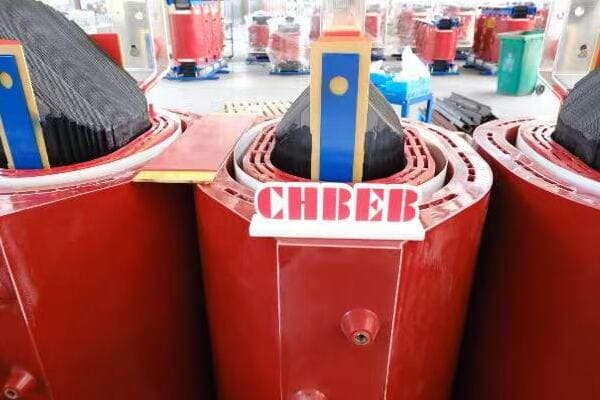
In this comprehensive guide, I’ll walk you through the key factors to consider when selecting a dry type transformer. Whether you’re working on a commercial building, an industrial facility, or a renewable energy installation, you’ll learn how to identify the right transformer that meets your specific needs. Let’s dive in and demystify the selection process together.
Why Choose Dry Type Transformers for Modern Projects?
Have you ever wondered why dry type transformers are becoming increasingly popular in modern projects? From office buildings to renewable energy installations, these transformers are often the go-to choice. But what makes them so appealing, and how do they compare to traditional oil-filled transformers?
**Dry type transformers offer several advantages for modern projects:
- No oil = safer for indoor/public spaces
- Lower fire risk & minimal maintenance
- Compact and quiet; ideal for confined environments
- Environmentally friendly (no oil leakage risk)**
Exploring the Benefits of Dry Type Transformers
Let’s delve deeper into why dry type transformers are an excellent choice for many applications:
1. Enhanced Safety
Dry type transformers:
- Eliminate the risk of oil fires or spills
- Are suitable for installation near populated areas
- Reduce the need for extensive fire suppression systems
I once worked on a project retrofitting an old office building with a new electrical system. The choice of dry type transformers allowed us to install them in the basement, close to the main distribution panel, without concerns about oil leaks or fire hazards. This significantly simplified the installation and improved overall system efficiency.
2. Low Maintenance Requirements
Key maintenance benefits:
- No need for regular oil testing or replacement
- Reduced risk of coolant-related failures
- Simpler inspection and cleaning procedures
3. Compact and Quiet Operation
Advantages in space-constrained environments:
- Smaller footprint compared to oil-filled units
- Lower noise levels, ideal for urban settings
- Easier to integrate into building designs
4. Environmental Friendliness
Eco-friendly aspects:
- No risk of oil contamination to soil or water
- Often made with recyclable materials
- Lower end-of-life disposal costs and complexity
Here’s a comparison table of dry type vs. oil-filled transformers:
| Aspect | Dry Type Transformer | Oil-Filled Transformer |
|---|---|---|
| Safety | High (no flammable oil) | Moderate (fire risk) |
| Maintenance | Low | Higher (oil monitoring) |
| Environmental Risk | Minimal | Potential oil leaks |
| Size | Compact | Larger due to oil tank |
| Noise Level | Lower | Higher |
| Indoor Use | Ideal | Requires special precautions |
In my experience, the choice of dry type transformers often leads to significant long-term benefits. I recall a project for a data center where we initially considered oil-filled transformers due to their lower upfront cost. However, after a comprehensive risk assessment, we opted for dry type units. The reduced fire risk and simplified maintenance not only improved the facility’s safety profile but also resulted in lower insurance premiums and operational costs over time.
The environmental advantages of dry type transformers became particularly evident in a recent project near a sensitive ecological area. The absence of oil eliminated concerns about potential contamination, making it much easier to obtain environmental approvals and ensuring peace of mind for both the client and local authorities.
For urban installations, the compact size and quiet operation of dry type transformers are invaluable. In a recent high-rise development project, we were able to install dry type units on each floor, optimizing power distribution efficiency without compromising usable space or creating noise disturbances for residents.
The reliability of dry type transformers in harsh environments is another key advantage. I worked on an industrial project in a coastal area with high humidity and salt content in the air. The dry type transformers we installed have shown excellent resistance to these corrosive conditions, maintaining their performance without the need for special protective enclosures that would have been necessary for oil-filled units.
Lastly, the trend towards green building certifications is making dry type transformers increasingly attractive. In a recent LEED-certified office complex project, the use of dry type transformers contributed to higher scores in the materials and resources category, thanks to their recyclable components and lower environmental impact throughout their lifecycle.
Choosing dry type transformers for modern projects offers a combination of safety, reliability, environmental friendliness, and operational efficiency that is hard to match with traditional oil-filled units. While they may have a higher initial cost in some cases, the long-term benefits in terms of reduced maintenance, enhanced safety, and environmental compatibility often make them the most cost-effective and responsible choice for a wide range of applications. As we continue to prioritize safety, sustainability, and efficiency in our built environments, the role of dry type transformers is likely to become even more prominent in future projects.
Key Specs to Consider When Selecting?
Are you feeling overwhelmed by the technical specifications when choosing a dry type transformer? You’re not alone. Many professionals struggle to prioritize the numerous parameters involved. But what if you had a clear roadmap of the most critical factors to consider?
**Checklist of key specifications for selecting dry type transformers:
✅ Rated capacity (kVA)
✅ Primary & secondary voltage
✅ Cooling method: AN (Air Natural) or AF (Air Forced)
✅ Temperature rise & insulation class (Class F/H)
✅ Protection rating (IP20/IP23/IP54)
✅ Certification: IEC 60076-11, UL1562, etc.**
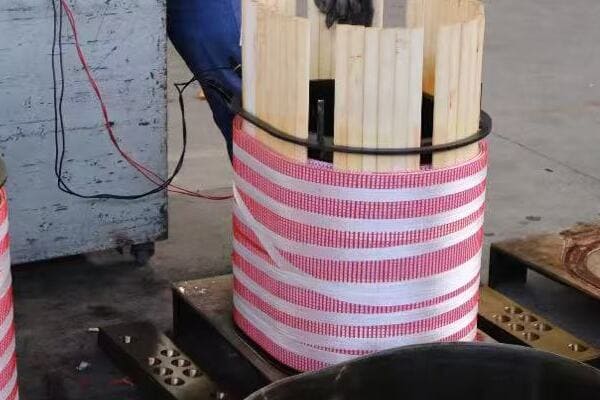
Diving Deeper into Transformer Selection Parameters
Let’s explore these critical specifications in more detail:
1. Rated Capacity (kVA)
Considerations for capacity selection:
- Current load requirements
- Future expansion plans
- Peak load handling capability
I once worked on a project where the client insisted on a transformer barely meeting their current needs. Within two years, they had to replace it due to expanded operations. Now, I always advise including at least a 20% capacity buffer for future growth.
2. Voltage Ratings
Key voltage considerations:
- Primary voltage matching grid supply
- Secondary voltage suitable for connected equipment
- Tap changer requirements for voltage regulation
3. Cooling Method
Factors influencing cooling choice:
- Load profile (steady vs variable)
- Environmental conditions
- Space constraints and noise limitations
4. Temperature Rise and Insulation Class
Important thermal considerations:
- Expected ambient temperature range
- Insulation life and performance requirements
- Overload capacity needs
Here’s a table summarizing common insulation classes and temperature rises:
| Insulation Class | Average Winding Temperature Rise | Hot Spot Temperature Rise |
|---|---|---|
| Class F | 115°C | 140°C |
| Class H | 140°C | 165°C |
In my experience, choosing the right insulation class is crucial for long-term reliability. I recall a project in a hot, industrial environment where we initially specified Class F insulation. After analyzing the actual operating conditions, we upgraded to Class H, which significantly extended the transformer’s expected lifespan under the harsh thermal conditions.
5. Protection Rating (IP Code)
Protection considerations:
- Indoor vs outdoor installation
- Presence of dust, moisture, or corrosive elements
- Accessibility and maintenance requirements
6. Certifications and Standards
Key standards to consider:
- IEC 60076-11 for general requirements
- UL 1562 for safety in North American markets
- Regional or industry-specific standards
The importance of proper certification cannot be overstated. In a recent international project, we had to ensure compliance with both IEC and UL standards. This dual certification, while challenging to achieve, opened up global market opportunities for our client.
Selecting the right protection rating is crucial for ensuring transformer longevity. I worked on a project for a coastal industrial facility where we specified IP54-rated transformers due to the corrosive, salt-laden environment. This decision, while increasing initial costs, has proven invaluable in maintaining reliable operation in the challenging conditions.
The choice of cooling method can significantly impact both performance and maintenance requirements. In a data center project, we opted for AF (Air Forced) cooling despite its higher complexity. The improved heat dissipation allowed for a more compact design and better handling of variable loads, crucial in the dynamic data center environment.
Voltage regulation capabilities are often overlooked but can be critical. In a recent renewable energy project, we incorporated transformers with on-load tap changers to manage the variable output from solar panels. This feature was essential for maintaining stable grid connection and optimizing energy transfer.
Lastly, the trend towards smart grids is influencing transformer specifications. I’m currently working on a project integrating dry type transformers with advanced monitoring capabilities. These units include sensors for temperature, partial discharge, and even gas analysis, providing real-time data for predictive maintenance and enhanced reliability.
Understanding and carefully considering these key specifications is crucial for selecting the right dry type transformer for your project. Each parameter plays a vital role in ensuring the transformer’s performance, efficiency, and longevity. By thoroughly evaluating these factors in the context of your specific application and future needs, you can make an informed decision that balances technical requirements, cost-effectiveness, and long-term reliability. Remember, the right choice often involves looking beyond immediate needs to consider future growth and changing operational demands.
Best Transformer Type for Commercial Use?
Are you planning a commercial project and wondering which dry type transformer is best suited for your needs? You’re not alone. Many architects and electrical engineers grapple with this decision. But what specific features should you prioritize for commercial applications, and how do they differ from other settings?
**Common needs for commercial dry type transformers:
- Quiet operation for hospitals, offices
- Compact size for space-constrained basements
- Prefer AN cooling for steady loads
- Fire-resistant designs (F1 class insulation)**
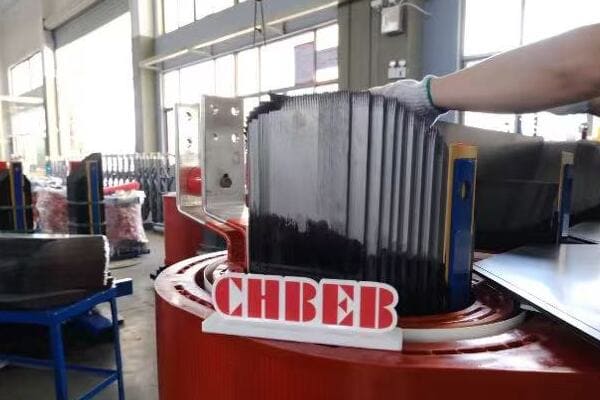
Selecting the Ideal Transformer for Commercial Projects
Let’s explore the key considerations for commercial transformer applications:
1. Noise Reduction
Critical in commercial settings:
- Low noise operation for office environments
- Special designs for hospitals and educational institutions
- Consideration of local noise regulations
I once worked on a project for a high-end office building where noise levels were a top priority. We implemented a specially designed low-noise transformer with additional sound dampening features. The result was a near-silent operation that met the client’s stringent requirements for their premium office space.
2. Compact Design
Space-saving considerations:
- Basement or utility room installations
- Integration with building aesthetics
- Vertical designs for minimal footprint
3. Cooling Method Selection
Factors influencing cooling choice:
- Steady load profiles typical in commercial settings
- Preference for AN (Air Natural) cooling when possible
- AF (Air Forced) for higher capacity needs
4. Fire Safety and Resistance
Critical safety features:
- F1 class insulation for enhanced fire resistance
- Compliance with building fire safety codes
- Integration with building fire suppression systems
Here’s a comparison table of transformer features for different commercial applications:
| Application | Noise Requirement | Size Constraint | Preferred Cooling | Special Features |
|---|---|---|---|---|
| Office Building | Very Low | High | AN | Low EMI emission |
| Hospital | Ultra Low | Moderate | AN/AF | Shielding for sensitive equipment |
| Shopping Mall | Moderate | High | AF | High overload capacity |
| School | Low | Moderate | AN | Enhanced safety features |
In my experience, the choice of transformer for commercial applications often involves balancing multiple factors. I recall a project for a mixed-use development where we needed to install transformers to serve both retail spaces and residential areas. We opted for a hybrid approach, using ultra-quiet AN-cooled units for residential floors and more robust AF-cooled transformers for the commercial sections. This strategy allowed us to optimize performance and noise levels for each area.
The importance of fire safety in commercial transformers cannot be overstated. In a recent project for a high-rise office building, we implemented F1 class insulated transformers with additional fire-resistant enclosures. This not only met stringent local fire codes but also provided peace of mind for the building owners and tenants.
Space constraints are a common challenge in commercial projects. I worked on a renovation of an historic building where we had to fit new transformers into an existing, cramped basement. By selecting compact, vertically oriented dry type units, we were able to significantly upgrade the building’s electrical capacity without major structural changes.
EMI (Electromagnetic Interference) is an often-overlooked consideration in commercial settings. In a project for a tech company’s headquarters, we had to carefully select and position transformers to minimize EMI that could affect sensitive electronic equipment. This involved using specially shielded units and strategic placement within the building.
Energy efficiency is becoming increasingly important in commercial transformer selection. In a recent LEED-certified office project, we conducted a detailed lifecycle cost analysis comparing standard and high-efficiency transformers. Despite a higher initial cost, the high-efficiency units were chosen due to significant long-term energy savings, aligning with the building’s sustainability goals.
The trend towards smart buildings is influencing commercial transformer requirements. I’m currently involved in a project integrating dry type transformers with building management systems. These smart transformers provide real-time data on power quality and usage, enabling more efficient energy management across the entire commercial complex.
Lastly, the importance of scalability in commercial projects cannot be underestimated. In a phased office park development, we implemented a modular transformer system that could be easily expanded as new buildings were added. This forward-thinking approach provided flexibility for future growth while optimizing initial costs.
Selecting the best transformer type for commercial use requires careful consideration of factors such as noise levels, size constraints, fire safety, and specific application needs. By prioritizing these aspects and understanding the unique requirements of commercial environments, you can choose a transformer that not only meets current needs but also provides the flexibility and performance required for long-term success. Remember, in commercial settings, the right transformer choice can significantly impact both operational efficiency and tenant satisfaction, making it a critical decision in the overall building design and management strategy.
Industrial Application Guide: What to Watch For?
Are you tasked with selecting transformers for an industrial project? The unique demands of industrial environments can make this choice challenging. But what specific factors should you prioritize to ensure your transformer can handle the rigors of industrial use?
**Industrial needs checklist:
- Support for heavy or motor-start loads
- AF cooling preferred in high-temp environments
- Higher mechanical strength & thermal endurance
- Dust-proof enclosures (IP54 or above)**
Key Considerations for Industrial Transformers
Let’s explore the critical aspects of transformers for industrial use:
1. Load Handling Capability
Industrial transformers must:
- Manage high inrush currents from motor starts
- Handle sustained overloads during peak production
- Adapt to rapidly changing load profiles
I once worked on a project for a large automotive plant where the transformer had to handle frequent welding machine operations. The high, short-duration current spikes required a transformer with exceptional overload capacity and rapid heat dissipation.
2. Cooling System Efficiency
Cooling considerations include:
- AF (Air Forced) systems for high-load applications
- Efficient heat dissipation in confined spaces
- Ability to operate in high ambient temperatures
3. Mechanical Robustness
Key features for industrial environments:
- Reinforced core and winding construction
- Vibration-resistant design
- Enhanced protection against physical impacts
4. Environmental Protection
Factors to consider:
- Dust and moisture resistance (high IP ratings)
- Corrosion protection for harsh environments
- Ability to withstand extreme temperatures
Here’s a table comparing transformer features for different industrial applications:
| Application | Key Feature | Cooling Method | Special Requirement |
|---|---|---|---|
| Heavy Manufacturing | High overload capacity | AF | Robust mechanical design |
| Chemical Plant | Corrosion resistance | AF | Sealed design (IP55+) |
| Food Processing | Hygienic design | AN/AF | Stainless steel enclosure |
| Mining Operations | Dust resistance | AF | IP65 rating, portable design |
In my experience, the choice of transformer for industrial applications often involves balancing multiple factors. I recall a project for a steel mill where we needed a transformer that could handle both the high continuous loads of the rolling mill and the periodic surges from the electric arc furnaces. We opted for an AF-cooled unit with enhanced short-circuit strength and an advanced thermal management system. This combination provided the necessary robustness and flexibility for the demanding application.
The importance of proper sizing cannot be overstated in industrial settings. In a recent expansion project for a chemical plant, we had to carefully consider not just the current load but also the planned future additions. We ended up selecting a transformer with 30% extra capacity, which proved invaluable when the plant expanded faster than initially projected.
Harmonic mitigation is a critical concern in many industrial applications. I worked on a project for a large printing facility where the numerous variable frequency drives were causing significant harmonic distortion. We implemented a transformer with a specialized winding design and additional filtering to manage these harmonics, greatly improving power quality and equipment longevity.
Environmental considerations can significantly impact transformer selection. In a project for a coastal industrial facility, we had to design a custom enclosure with enhanced corrosion resistance and specialized sealing to protect against salt-laden air and high humidity. This attention to environmental factors was crucial for ensuring long-term reliability in the harsh conditions.
The integration of transformers with industrial control systems is becoming increasingly important. I’m currently involved in a project implementing smart transformers in a large manufacturing complex. These units are equipped with advanced sensors and communication capabilities, allowing real-time monitoring and integration with the plant’s overall energy management system. This integration not only improves operational efficiency but also enables predictive maintenance, reducing downtime.
Energy efficiency is a growing concern in industrial transformer selection. In a recent project for an energy-intensive process industry, we conducted a detailed total cost of ownership analysis. Despite a higher initial cost, we chose a high-efficiency transformer with amorphous core technology. The energy savings over the transformer’s lifespan were projected to be substantial, aligning with the client’s sustainability goals and offering significant long-term cost benefits.
Noise considerations can be critical in certain industrial settings. I once worked on a project for a food processing plant where strict noise regulations applied. We had to carefully select a transformer with enhanced noise reduction features, including special core construction and enclosure design. Meeting these noise requirements while maintaining the necessary performance characteristics required close collaboration with the manufacturer.
Lastly, the trend towards modular and scalable industrial systems is influencing transformer design. In a recent project for a rapidly growing technology manufacturing facility, we implemented a modular transformer system. This approach allowed for easier capacity expansion and provided the flexibility to reconfigure the power distribution as the facility’s needs evolved.
Selecting the right transformer for industrial applications requires a thorough understanding of the specific operational demands and environmental conditions. By carefully considering factors such as load profile, mechanical stresses, cooling requirements, and power quality needs, you can choose a transformer that not only meets current demands but also provides the flexibility and reliability needed for future growth. Remember, in industrial settings, the cost of downtime often far outweighs the initial investment in a high-quality, well-specified transformer.
Renewable Energy Projects: Solar, Wind, Storage?
Are you venturing into the world of renewable energy and wondering about the specific transformer requirements for these projects? You’re not alone. Many engineers find themselves puzzled by the unique challenges posed by solar, wind, and energy storage systems. But what exactly makes transformers for renewable energy projects different, and how can you ensure you’re making the right choice?
**Typical requirements for renewable energy transformers:
- Bi-directional power flow support
- Weatherproof design for outdoor/pole-mounting
- Resistance to high humidity and heat
- ONAN/AF cooling depending on system load**

Key Considerations for Renewable Energy Transformers
Let’s explore the critical aspects of transformers for different renewable energy applications:
1. Solar Power Projects
Solar transformers need:
- Ability to handle variable DC input from inverters
- High efficiency at partial loads
- Thermal management for hot, dusty environments
I once worked on a large solar farm project where we implemented specially designed transformers with enhanced cooling systems. The units were optimized for the farm’s daytime-only generation profile, with efficient operation at varying loads as solar intensity changed throughout the day.
2. Wind Energy Systems
Wind power transformers require:
- Robust design for nacelle or base installation
- Ability to handle rapidly fluctuating inputs
- Compact size for offshore applications
3. Energy Storage Facilities
Transformers for storage systems need:
- Bidirectional power flow capability
- Fast response to charge/discharge cycles
- Integration with battery management systems
4. General Renewable Energy Requirements
Common features across renewable applications:
- Compliance with grid codes for renewable integration
- Remote monitoring and diagnostic capabilities
- Environmentally friendly designs (e.g., biodegradable fluids)
Here’s a comparison table of transformer requirements for different renewable energy applications:
| Application | Key Feature | Typical Size Range | Special Requirement |
|---|---|---|---|
| Solar Farm | High efficiency at partial loads | 500 kVA – 10 MVA | Inverter compatibility |
| Wind Farm | Robust, compact design | 2 MVA – 50 MVA | Nacelle or base mounting options |
| Energy Storage | Bidirectional power flow | 1 MVA – 100 MVA | Rapid response to load changes |
| Hybrid Systems | Flexible operation | Varies | Advanced control integration |
In my experience, the selection of transformers for renewable energy projects often involves unique challenges. I recall a project for a large-scale solar farm in a desert environment. The extreme heat and dust posed significant cooling challenges. We implemented a custom AF cooling system with specially designed filters to prevent dust ingress. The transformers were also equipped with advanced thermal monitoring to ensure optimal performance in the harsh conditions.
The variability of renewable energy sources necessitates careful consideration of transformer efficiency across a wide load range. In a recent wind farm project, we selected transformers with amorphous metal cores. While more expensive initially, these units provided superior efficiency at the variable loads typical of wind generation, resulting in significant energy savings over the project’s lifespan.
For offshore wind projects, the transformer’s size and weight are critical factors. I worked on an offshore wind farm where space in the nacelle was at a premium. We utilized a compact, dry-type transformer design that minimized size and weight while still meeting the stringent marine environment requirements. The use of biodegradable insulating fluids also mitigated environmental risks.
Energy storage projects present unique challenges due to their bidirectional power flow. In a recent large-scale battery storage facility, we implemented transformers with specialized winding designs to handle the frequent transitions between charging and discharging states. The units were also equipped with advanced cooling systems to manage the heat generated during high-power discharge cycles.
The integration of transformers with renewable energy control systems is becoming increasingly important. I’m currently involved in a project developing smart transformers for a hybrid solar-wind-storage facility. These units incorporate advanced sensors and communication interfaces, allowing real-time adjustment of power flow and voltage levels to optimize overall system performance.
Environmental considerations are paramount in renewable energy projects. In a recent solar farm installation in an environmentally sensitive area, we used transformers filled with natural ester fluids instead of traditional mineral oil. This biodegradable option reduced the environmental risk and aligned with the project’s overall sustainability goals.
Grid compliance is a critical factor in renewable energy transformer selection. I worked on a project where we had to carefully design the transformer’s impedance and tap range to meet stringent grid code requirements for fault ride-through capability and voltage support. This ensured that the renewable energy facility could contribute to grid stability rather than compromising it.
Lastly, the trend towards distributed energy resources is influencing transformer design for renewables. In a recent community solar project, we implemented multiple smaller transformers instead of a single large unit. This modular approach provided greater flexibility and reliability, allowing sections of the solar farm to remain operational even if one transformer required maintenance.
Selecting the right transformer for renewable energy projects requires a deep understanding of the unique challenges posed by these dynamic and often remote power generation systems. By focusing on key aspects such as efficiency across variable loads, robust design for harsh environments, and smart integration capabilities, you can choose a transformer that not only meets the immediate needs of your renewable energy project but also provides the flexibility and reliability required for long-term success. As the renewable energy sector continues to evolve, transformers play a crucial role in efficiently and safely integrating these clean energy sources into our power grids.
Compliance and Environmental Standards?
Are you finding it challenging to navigate the complex world of compliance and environmental standards for dry type transformers? You’re not alone. Many professionals struggle to keep up with the ever-evolving regulations. But what are the key standards you need to know, and how can you ensure your projects meet global environmental requirements?
**Recommended standards & safety focus:
- IEC 60076-11 for dry type transformers
- RoHS / REACH environmental requirements
- Fire behavior class F1 (per IEC 60695)
- Use halogen-free insulation and low-smoke materials**
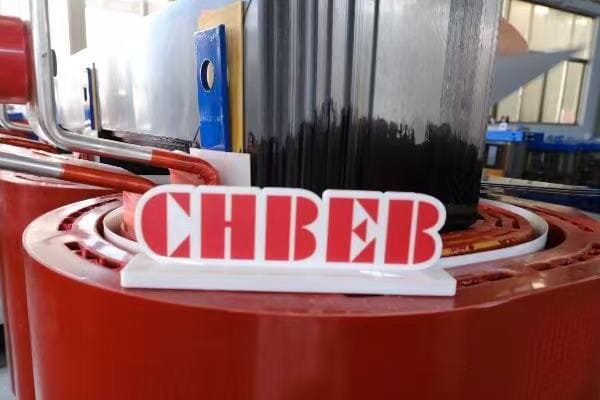
Navigating Compliance and Environmental Standards
Let’s explore these standards and compliance requirements in more detail:
1. International Electrotechnical Commission (IEC) Standards
Key IEC standards include:
- IEC 60076-11: Specific requirements for dry-type transformers
- IEC 60076-12: Loading guide for dry-type power transformers
- IEC 60076-16: Transformers for wind turbine applications
I once worked on a project exporting transformers to multiple countries. Ensuring compliance with IEC standards was crucial for gaining acceptance in diverse markets. We had to carefully review and test against each relevant IEC standard to ensure global compatibility.
2. Environmental Regulations
Critical environmental standards:
- RoHS (Restriction of Hazardous Substances)
- REACH (Registration, Evaluation, Authorization and Restriction of Chemicals)
- Various national environmental protection laws
3. Fire Safety Standards
Important fire safety considerations:
- IEC 60695: Fire hazard testing
- F1 class insulation for enhanced fire resistance
- Local building codes and fire safety regulations
4. Energy Efficiency Regulations
Key efficiency standards:
- EU Ecodesign Directive for transformers
- US Department of Energy (DOE) efficiency standards
- China Energy Label (CEL) requirements
Here’s a comparison table of key global standards:
| Standard | Region | Focus | Key Requirements |
|---|---|---|---|
| IEC 60076-11 | Global | Dry-Type Transformer Design | Comprehensive specifications for dry-type units |
| RoHS | Europe | Hazardous Substances | Limits on use of specific hazardous materials |
| REACH | Europe | Chemical Safety | Registration and restriction of chemicals |
| F1 Class (IEC 60695) | Global | Fire Safety | Specific fire behavior requirements |
| DOE 10 CFR Part 431 | USA | Energy Efficiency | Minimum efficiency levels for distribution transformers |
In my experience, navigating these standards requires a comprehensive approach. I recall a project where we were designing transformers for a multinational corporation with installations across three continents. We had to create a compliance matrix that cross-referenced IEC, regional, and local standards to ensure our designs met all relevant requirements in each location.
Environmental regulations like RoHS and REACH have significant implications for transformer design and material selection. I worked on a project where we had to completely redesign our insulation system to eliminate certain restricted substances. While challenging, this process led to the development of a more environmentally friendly transformer that actually performed better in several key areas.
Fire safety standards are becoming increasingly stringent, especially for indoor installations. In a recent high-rise project, we had to meet both IEC and local fire code requirements. This led us to implement F1 class insulation and additional fire-resistant barriers, significantly enhancing the safety profile of the installation.
Energy efficiency standards are driving innovation in transformer design. I’m currently involved in a large-scale grid modernization project where energy efficiency is a top priority. We’re implementing amorphous core technology and advanced winding designs to meet and exceed the latest efficiency regulations, resulting in significant long-term energy savings for the utility.
The trend towards eco-friendly materials is influencing compliance strategies. In a recent project, we used bio-based insulating fluids and recyclable materials in our transformer design. This not only helped meet environmental regulations but also aligned with the client’s corporate sustainability goals.
Smart grid compatibility is becoming an important aspect of compliance. I recently worked on a project where we had to ensure our transformers met both traditional standards and new requirements for data communication and cybersecurity. This dual compliance was essential for integration into a modern, intelligent power distribution system.
Lastly, the importance of lifecycle assessment in environmental compliance is growing. I’m seeing increased interest in standards that address the entire lifecycle of transformers, from raw material sourcing to end-of-life recycling. This holistic approach to environmental compliance is likely to become more prevalent in the coming years.
Navigating compliance and environmental standards for dry type transformers is a complex but crucial task. It requires a thorough understanding of international standards like IEC, as well as regional regulations on energy efficiency and environmental protection. By staying informed about these standards and proactively addressing compliance requirements, engineers and project managers can ensure their transformer projects meet global environmental standards while also optimizing performance and reliability. As regulations continue to evolve, particularly in response to climate change and sustainability concerns, maintaining up-to-date knowledge and adaptable design practices will be key to successful and compliant transformer projects worldwide.
Cost vs Value: What Matters in Total Ownership?
Are you struggling to balance the upfront costs of dry type transformers against their long-term value? You’re not alone. Many decision-makers find themselves torn between budget constraints and the desire for quality and efficiency. But what factors should you really consider when evaluating the total cost of ownership, and how can you make a choice that offers the best value over time?
**Evaluation dimensions for total ownership cost:
Factor | Initial Cost | Lifetime Value
Transformer with AF | Medium | High (overload tolerance)
Basic AN type | Low | Moderate (if stable loads)
Premium F1 class | High | High (for safety-driven environments)**
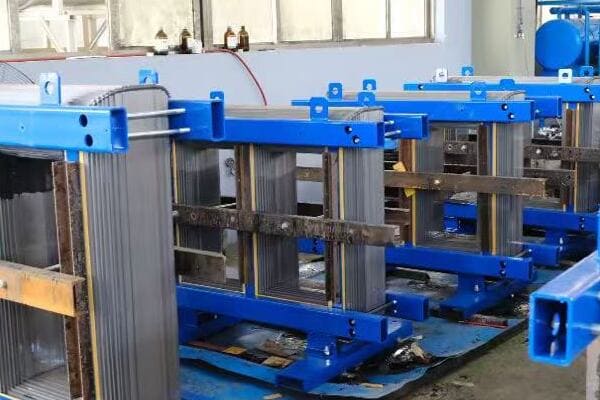
Understanding Total Cost of Ownership for Transformers
Let’s explore the key factors that influence the total cost of ownership:
1. Initial Purchase Price
Considerations include:
- Transformer capacity and specifications
- Cooling method (AN vs AF)
- Special features (e.g., F1 class insulation)
I once worked on a project where the client initially opted for the lowest-cost transformer option. Within three years, they faced efficiency issues and had to upgrade, ultimately spending more than if they had chosen a higher-quality unit from the start.
2. Energy Efficiency and Operational Costs
Factors affecting long-term costs:
- Core and winding losses
- Efficiency at various load levels
- Energy costs in the installation location
3. Maintenance and Reliability
Long-term considerations:
- Frequency and cost of required maintenance
- Expected lifespan of the transformer
- Reliability and potential downtime costs
4. Environmental and Safety Factors
Additional value considerations:
- Reduced environmental risks (e.g., no oil leaks)
- Enhanced fire safety (especially with F1 class)
- Potential insurance premium reductions
Here’s a detailed comparison table of different transformer types:
| Aspect | Basic AN Type | AF Cooling | Premium F1 Class |
|---|---|---|---|
| Initial Cost | Low | Medium | High |
| Energy Efficiency | Good | Better | Best |
| Maintenance Needs | Low | Moderate | Low |
| Overload Capacity | Limited | Good | Excellent |
| Safety Features | Standard | Enhanced | Superior |
| Typical Lifespan | 20-25 years | 25-30 years | 30+ years |
| Best For | Stable, low-load environments | Variable loads, industrial use | Critical installations, high-safety needs |
In my experience, the true value of a transformer often becomes apparent long after the initial purchase. I recall a project for a data center where we recommended a premium F1 class transformer despite its higher upfront cost. The enhanced safety features not only provided peace of mind but also resulted in significant insurance savings and avoided potential downtime costs, justifying the investment within the first few years of operation.
Energy efficiency is a critical factor in total ownership cost. In a recent industrial project, we conducted a detailed lifecycle cost analysis comparing standard and high-efficiency transformers. Despite a 20% higher initial cost, the high-efficiency unit was projected to save over $100,000 in energy costs over its 25-year lifespan. This analysis was crucial in convincing the client to invest in the more efficient option.
Maintenance costs can vary significantly between different transformer types. I’ve seen cases where the seemingly cost-effective choice of a basic AN transformer led to higher long-term expenses due to more frequent maintenance needs in a dusty environment. In contrast, an AF unit with better filtration required less frequent servicing, resulting in lower total maintenance costs over time.
The value of reliability cannot be overstated, especially in critical applications. In a hospital project I consulted on, we opted for a premium transformer with advanced monitoring capabilities. While more expensive initially, its ability to predict and prevent potential failures has proven invaluable, avoiding costly downtime and ensuring continuous power supply to critical medical equipment.
Environmental considerations are increasingly impacting total ownership costs. In a recent project near a sensitive ecological area, the use of a dry type transformer with eco-friendly materials not only met stringent environmental regulations but also simplified the permitting process, saving time and potential legal costs associated with more traditional options.
The flexibility to handle future load increases can significantly affect long-term value. I worked on an expansion project where we initially installed oversized AF-cooled transformers. This foresight allowed the facility to expand its operations without replacing the transformers, avoiding substantial future costs and disruptions.
Lastly, the integration of smart monitoring systems is revolutionizing how we evaluate transformer value. In a recent large-scale deployment, we implemented IoT-enabled monitoring on a fleet of transformers. This system provides real-time data on performance and condition, enabling predictive maintenance and optimizing operational efficiency. While it increased the initial cost, the long-term benefits in reduced downtime and extended transformer life have already proven substantial.
The impact of transformer choice on overall system reliability is another crucial factor. In a project for a critical manufacturing facility, we opted for a redundant system using high-reliability transformers. The additional upfront cost was justified by the near-elimination of production losses due to power issues, providing immense value over time.
Energy price volatility is an often-overlooked factor in total ownership cost calculations. In a recent utility project, we conducted sensitivity analyses based on different energy price scenarios. This approach helped justify the selection of ultra-high efficiency transformers, as they provided a hedge against potential future increases in energy costs.
The role of transformers in achieving sustainability goals is becoming increasingly important. I recently worked with a company aiming for carbon neutrality. By selecting high-efficiency transformers with eco-friendly materials, they not only reduced their energy consumption but also improved their environmental scorecard, contributing to their broader corporate sustainability objectives.
Regulatory changes can significantly impact the value proposition of transformers over time. In a forward-thinking approach for a long-term infrastructure project, we selected transformers that not only met current standards but were also designed to comply with anticipated future regulations. This strategy has protected the client from potential costly upgrades or replacements due to regulatory changes.
The scalability and modularity of transformer systems can offer significant long-term value. In a recent data center project, we implemented a modular transformer system that allows for easy capacity expansion. This approach not only optimized initial costs but also provided the flexibility to scale power capacity in line with the facility’s growth, avoiding the need for oversized initial installations or disruptive upgrades.
Lastly, the residual value of transformers at the end of their operational life is becoming an important consideration. I’m currently involved in a project exploring the recyclability and reusability of transformer components. By choosing designs with high-value, recyclable materials, we’re not only reducing environmental impact but also potentially creating a future revenue stream from material recovery.
Evaluating the total cost of ownership for dry type transformers requires a comprehensive approach that goes beyond the initial purchase price. Factors such as energy efficiency, maintenance requirements, reliability, environmental impact, and future adaptability all play crucial roles in determining the true value of a transformer over its lifetime. By carefully considering these aspects and conducting thorough lifecycle cost analyses, decision-makers can make informed choices that balance upfront costs with long-term benefits. Remember, the cheapest option at purchase is often not the most economical in the long run. Investing in quality, efficiency, and adaptability typically yields the best value over the entire lifespan of the transformer.
Summary: Project-Based Selection Checklist?
Are you ready to make your final transformer selection but want to ensure you haven’t overlooked any crucial factors? This comprehensive checklist will guide you through the key considerations for different project types, helping you match the perfect transformer to your specific requirements. Let’s make sure you’ve covered all the bases before making this critical decision.
Project-Based Selection Checklist:
✅ Commercial: IP23, Class F, low noise
✅ Industrial: AF cooling, high overload
✅ Renewable: Anti-corrosion, IEC certified
✅ Budget-conscious? Focus on lifecycle cost, not just initial price
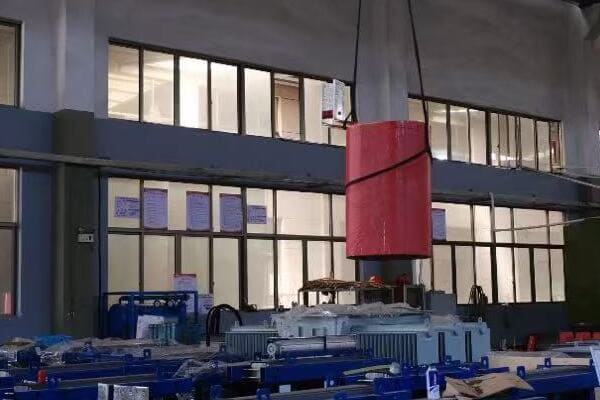
Detailed Transformer Selection Checklist by Project Type
Let’s break down the selection process for each project type:
1. Commercial Projects
Key considerations:
- [ ] Noise level: Ultra-low for offices, hospitals
- [ ] Size: Compact for space-constrained areas
- [ ] Cooling: Prefer AN for quiet operation
- [ ] Protection: IP23 for indoor use
- [ ] Insulation: Class F for standard commercial environments
- [ ] Efficiency: Meet or exceed local energy standards
I once worked on a project for a high-end office complex where noise was a critical factor. We selected an ultra-quiet AN-cooled transformer with additional sound dampening features. This attention to acoustic performance was crucial for maintaining the premium work environment the client desired.
2. Industrial Applications
Essential features:
- [ ] Cooling: AF for high loads and harsh environments
- [ ] Overload capacity: High, to handle motor starts and peak demands
- [ ] Protection: IP54 or higher for dusty/dirty conditions
- [ ] Mechanical strength: Enhanced for vibration resistance
- [ ] Monitoring: Advanced systems for predictive maintenance
- [ ] Efficiency: Focus on performance under variable loads
3. Renewable Energy Projects
Specific requirements:
- [ ] Bi-directional power flow capability
- [ ] Corrosion resistance: For outdoor/coastal installations
- [ ] Cooling: ONAN/AF depending on location and load profile
- [ ] Certification: IEC 60076-16 for wind turbine applications
- [ ] Efficiency: High at partial loads (especially for solar)
- [ ] Smart features: Integration with renewable energy management systems
4. Budget-Conscious Projects
Cost-effective considerations:
- [ ] Focus on Total Cost of Ownership (TCO)
- [ ] Energy efficiency: Balance initial cost with long-term savings
- [ ] Maintenance: Consider long-term service requirements
- [ ] Scalability: Option for future capacity increases
- [ ] Standardization: Use common designs to reduce costs
- [ ] Warranty: Evaluate coverage and terms
Here’s a comparison table summarizing key features for different project types:
| Feature | Commercial | Industrial | Renewable | Budget-Focused |
|---|---|---|---|---|
| Cooling Method | AN preferred | AF common | Application-specific | AN if suitable |
| Noise Level | Ultra-low | Less critical | Site-dependent | Standard |
| Protection Rating | IP23 typical | IP54 or higher | Location-based | Application-based |
| Overload Capacity | Moderate | High | Variable | As needed |
| Smart Features | Basic | Advanced | Integration-focused | Cost-effective options |
| Efficiency Focus | Steady-state | Variable load | Partial load | Lifecycle cost |
In my experience, this checklist approach has been invaluable in ensuring all critical factors are considered. I recall a complex industrial project where we used a similar checklist. It helped us identify a potential issue with harmonic distortion that we might have otherwise overlooked. By addressing this early in the selection process, we avoided costly retrofits later.
The importance of future-proofing your selection cannot be overstated. In a recent utility upgrade project, we included estimated load growth in our calculations. This led us to select a transformer with slightly higher capacity than immediately needed. Within two years, this foresight proved invaluable as the area experienced unexpected rapid development.
Environmental considerations often play a crucial role. I worked on a renewable energy project in a coastal area where we had to carefully consider corrosion resistance. The checklist prompted us to specify enhanced protective coatings and sealed designs, significantly extending the transformer’s expected lifespan in the harsh environment.
For budget-conscious projects, the focus on total cost of ownership is critical. In a recent educational institution project, we conducted a detailed TCO analysis comparing different transformer options. This approach led us to choose a more efficient unit that, while more expensive initially, offered substantial energy savings over its lifespan, aligning with the institution’s long-term financial planning.
The trend towards smart grids is influencing transformer selection across all project types. In a recent commercial development, we included smart monitoring capabilities as a checklist item. This led to selecting transformers with advanced sensors and communication interfaces, enabling real-time monitoring and predictive maintenance, aligning with the building’s smart energy management system.
Lastly, always consider the specific regulatory environment of your project. In a recent international project, we had to navigate different standards across multiple countries. Our checklist included a comprehensive regulatory compliance section, ensuring that the selected transformers met all local and international requirements, avoiding potential legal and operational issues.
This project-based selection checklist serves as a powerful tool to ensure you’ve considered all crucial aspects in your transformer selection process. By methodically working through each point relevant to your specific project type, you can confidently choose a transformer that not only meets your current needs but is also well-suited for future demands. Remember, the right choice balances technical requirements, environmental considerations, regulatory compliance, and long-term operational efficiency. Take the time to thoroughly evaluate each aspect – it’s an investment that will pay dividends throughout the transformer’s operational life.
Conclusion
Selecting the right dry type transformer involves carefully evaluating project-specific needs, from commercial to industrial and renewable applications. Consider factors like load profile, environment, efficiency, and long-term costs. Use the provided checklists to ensure a comprehensive selection process that balances performance, reliability, and value over the transformer’s lifetime.
Still unsure which transformer fits your project?
📩 Contact us for a free technical consultation or request a custom quotation.
Are you struggling to choose between AN and AF cooling for your dry-type transformer? You’re not alone. Many engineers find themselves puzzled by the pros and cons of each method. But what if you could understand these cooling techniques clearly and make an informed decision that optimizes your transformer’s performance?
AN (Air Natural) and AF (Air Forced) are two cooling methods used in dry-type transformers. AN relies on natural air convection, while AF uses fans to accelerate heat dissipation. Choosing the right method affects efficiency, noise level, and transformer suitability for different load conditions.
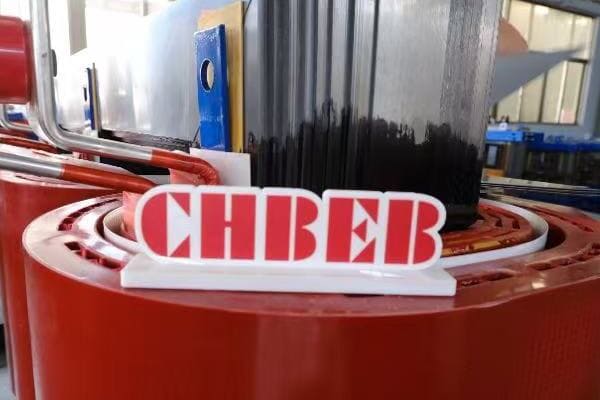
In this comprehensive guide, I’ll explain the key differences between AN and AF cooling methods for dry-type transformers. We’ll explore how each method works, their advantages and limitations, and how they impact transformer performance. Whether you’re designing a new electrical system or upgrading an existing one, this article will help you choose the most suitable cooling method for your specific needs.
What Are AN and AF Cooling Methods in Dry-Type Transformers?
Have you ever wondered how dry-type transformers manage to stay cool without any liquid coolant? The secret lies in their air cooling methods: AN and AF. But what exactly are these methods, and how do they keep transformers operating efficiently?
AN (Air Natural) cooling relies on natural air convection to dissipate heat from transformer windings. AF (Air Forced) cooling uses fans to enhance air circulation and heat removal. Both methods are designed for dry-type transformers, but they differ in cooling capacity, noise levels, and suitable applications.
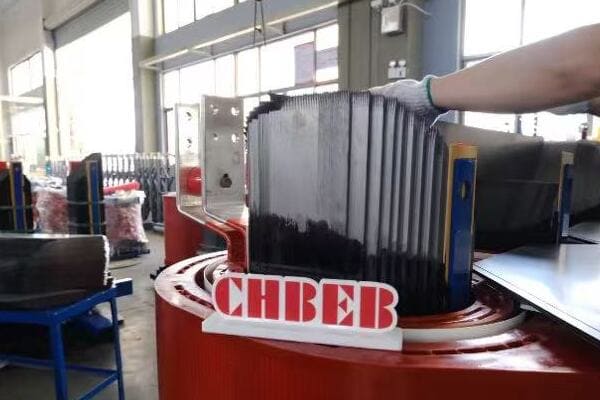
Understanding AN and AF Cooling in Dry-Type Transformers
Let’s dive deeper into how these cooling methods work:
1. Basic Principle of Air Cooling
Both AN and AF cooling methods rely on:
- Heat transfer from windings to surrounding air
- Air circulation to remove heat from the transformer
- Transformer design that maximizes heat dissipation
I remember my first encounter with a large dry-type transformer during a factory tour. The simplicity of the AN cooling system, with its reliance on natural convection, was striking. It highlighted the elegance of passive cooling solutions in electrical engineering.
2. AN Cooling Method
Key features of AN cooling:
- Natural air convection without fans
- Passive heat dissipation through specially designed ducts
- Quiet operation due to lack of moving parts
3. AF Cooling Method
Characteristics of AF cooling:
- Forced air circulation using fans
- Enhanced heat removal capacity
- Ability to handle higher loads or ambient temperatures
4. Cooling Efficiency Factors
Factors affecting cooling efficiency:
- Transformer size and power rating
- Ambient temperature and environmental conditions
- Load profile and operating conditions
Here’s a table summarizing the key aspects of each cooling method:
| Aspect | AN Cooling | AF Cooling |
|---|---|---|
| Air Circulation | Natural convection | Fan-assisted |
| Cooling Capacity | Lower | Higher |
| Noise Level | Very low | Moderate |
| Maintenance | Minimal | Requires fan maintenance |
| Suitable Applications | Low to medium loads | Medium to high loads |
In my experience, understanding these cooling methods is crucial for optimizing transformer performance. I once worked on a project where we replaced an overheating AN-cooled transformer with an AF-cooled unit. The improvement in load capacity and temperature management was remarkable, allowing the facility to expand its operations without major infrastructure changes.
The choice of cooling method significantly impacts transformer design. In a recent project for a noise-sensitive environment, we had to carefully balance cooling needs with acoustic requirements. We opted for an AN-cooled transformer with an oversized core to manage heat dissipation without introducing fan noise.
Environmental conditions play a major role in cooling method selection. I recall a challenging project in a hot, dusty industrial environment where standard AN cooling was insufficient. We implemented an AF system with filtered air intakes, which not only improved cooling but also protected the transformer from dust accumulation.
The load profile of the transformer is another critical factor in choosing the right cooling method. In an application with highly variable loads, we opted for an AF system with variable speed fans. This allowed for adaptive cooling that could respond to sudden load changes, improving overall efficiency and transformer lifespan.
Maintenance requirements vary significantly between AN and AF cooling methods. I’ve seen cases where inadequate maintenance of AF cooling fans led to reduced cooling efficiency and increased transformer temperatures. This experience underscores the importance of considering long-term maintenance needs when selecting a cooling method.
The trend towards more compact and efficient transformers is driving innovations in cooling technologies. I’m currently involved in a research project exploring the use of advanced materials and designs to enhance natural convection in AN-cooled transformers. These developments promise to extend the range of applications where passive cooling can be effectively used.
Lastly, the integration of smart monitoring systems is revolutionizing transformer cooling management. In a recent large-scale transformer installation, we implemented an intelligent cooling control system for AF-cooled units. This system could adjust fan speed based on real-time load and temperature data, optimizing cooling efficiency and energy consumption.
Understanding AN and AF cooling methods in dry-type transformers is essential for anyone involved in power system design or operation. These methods are not just about keeping transformers cool; they directly impact efficiency, reliability, and lifespan of these critical components. As power demands continue to grow and environmental concerns increase, the importance of effective and efficient cooling methods will only become more pronounced in the field of transformer technology.
AN Cooling (Air Natural): Passive Cooling for Low to Medium Loads?
Are you considering AN cooling for your dry-type transformer but unsure if it’s the right choice? You’re not alone. Many engineers wonder if passive cooling can meet their needs. But what exactly makes AN cooling suitable for certain applications, and how does it perform under different conditions?
**Key characteristics of AN cooling:
- Uses natural air flow around windings
- No external fan or forced airflow
- Suitable for steady, low to medium loads
- Very low noise operation
- Minimal maintenance required
Typical applications:
- Indoor distribution
- Clean and ventilated electrical rooms
- Environments with low ambient temperature variation**
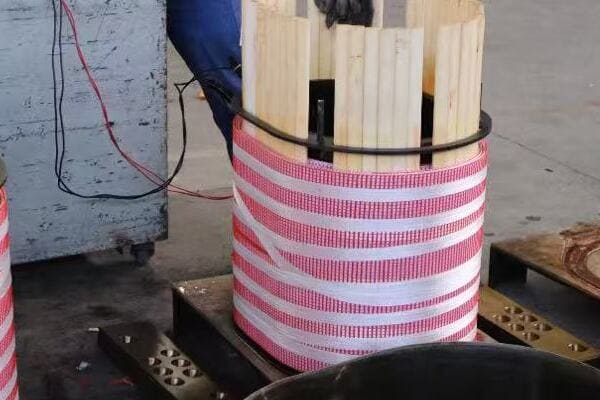
Exploring AN Cooling in Detail
Let’s delve deeper into the workings and applications of AN cooling:
1. How AN Cooling Works
The AN cooling process involves:
- Heat generation in transformer windings
- Natural convection of heated air upwards
- Cool air drawn in from the bottom
- Continuous air circulation without mechanical assistance
I once worked on a project retrofitting an old substation with modern AN-cooled transformers. The simplicity and reliability of the cooling system were impressive. Some units had been operating efficiently for over 30 years with minimal maintenance.
2. Advantages of AN Cooling
Key benefits include:
- Silent operation, ideal for noise-sensitive environments
- No moving parts, reducing maintenance needs
- Lower initial and operating costs
- Suitable for clean, indoor environments
3. Limitations of AN Cooling
Drawbacks to consider:
- Limited cooling capacity compared to AF
- Performance affected by ambient temperature
- Not ideal for high or fluctuating loads
- Requires adequate ventilation in the installation area
4. Applications of AN Cooling
Common uses:
- Office buildings and schools
- Residential complexes
- Small to medium-sized industrial facilities
- Indoor distribution panels
Here’s a table summarizing the characteristics of AN cooling:
| Aspect | Description | Impact |
|---|---|---|
| Cooling Mechanism | Natural air convection | Simple, reliable operation |
| Maintenance | Minimal | Low long-term costs |
| Noise Level | Very low | Suitable for quiet environments |
| Cooling Efficiency | Moderate | Limited to smaller capacities |
| Environmental Impact | Low | No energy used for cooling |
In my experience, the simplicity of AN cooling is both its strength and limitation. I recall a project where we installed AN-cooled transformers in a library. The silent operation was crucial for the quiet environment. However, we had to carefully size the units to ensure they could handle the load without overheating, given the limited cooling capacity.
The efficiency of AN cooling can be significantly affected by environmental conditions. In a recent project in a warm climate, we had to oversize the transformers to compensate for the higher ambient temperatures. This increased the overall size and cost of the transformers but was necessary to maintain safe operating temperatures.
One interesting aspect of AN cooling is its natural resilience. During a power outage that affected cooling systems in a facility, I observed that AN-cooled transformers were among the least affected. Their passive cooling allowed them to handle essential loads safely even when active cooling systems were down.
The load profile of the transformer is crucial when considering AN cooling. In an office building application with steady, moderate loads, AN-cooled transformers performed excellently. However, when a data center was added to the building, we had to upgrade some units to AF cooling to handle the increased heat generation from the variable IT loads.
Ventilation design is critical for effective AN cooling. I’ve seen cases where inadequate room ventilation led to reduced cooling efficiency over time. In one instance, implementing a passive ventilation system in the transformer room significantly improved cooling performance and extended the expected lifespan of the AN-cooled units.
The compact design possible with AN cooling can be advantageous in space-constrained installations. In a recent urban renovation project, the small footprint of AN-cooled transformers allowed us to fit them into tight spaces without major structural changes. This was crucial in the densely packed building where space was at a premium.
Lastly, the trend towards more efficient transformer designs is impacting AN cooling as well. I’m currently involved in a project evaluating new core materials that could significantly reduce losses in AN-cooled transformers. These advancements could potentially extend the capacity range where AN cooling remains effective, making it a viable option for larger transformers in the future.
AN cooling remains a cornerstone technology for dry-type transformers in low to medium load applications due to its simplicity, reliability, and low maintenance requirements. While it has limitations in terms of cooling capacity, its advantages make it an excellent choice for many applications, particularly in areas where noise, maintenance, and environmental impact are concerns. As transformer technology continues to evolve, AN cooling is likely to remain relevant, benefiting from advancements in materials and design that enhance its efficiency and expand its range of applications.
AF Cooling (Air Forced): Fan-Assisted Cooling for Higher Load Applications?
Are you dealing with transformers that need extra cooling capacity? AF cooling might be the solution you’re looking for. But how does this method enhance cooling performance, and when is it the right choice for your transformer?
**Key characteristics of AF cooling:
- Includes fans to increase air velocity across windings
- Supports higher transformer loading
- Better heat dissipation under fluctuating or heavy loads
- Slightly higher operating noise
- Requires fan maintenance and electrical control
Typical applications:
- Industrial environments
- Data centers and hospitals
- Areas with higher heat buildup or limited natural airflow**
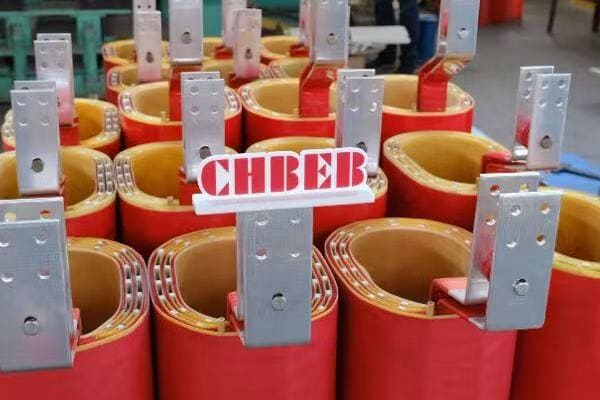
Diving Deeper into AF Cooling
Let’s explore the intricacies of AF cooling:
1. How AF Cooling Works
The AF cooling process involves:
- Fans forcing air circulation through transformer windings
- Enhanced heat removal due to increased air velocity
- Thermostat-controlled fan operation based on temperature
- Ability to handle higher and more variable loads
I once worked on upgrading a manufacturing plant’s power system where we replaced several AN-cooled transformers with AF units. The ability to handle higher peak loads and maintain lower operating temperatures significantly improved the plant’s operational flexibility.
2. Advantages of AF Cooling
Key benefits include:
- Increased cooling capacity compared to AN cooling
- Ability to handle higher or more variable loads
- Better performance in high ambient temperature conditions
- Potential for smaller transformer size for given rating
3. Limitations of AF Cooling
Considerations to keep in mind:
- Higher initial cost due to fan systems
- Increased maintenance requirements
- Higher noise levels compared to AN cooling
- Dependency on electrical supply for fan operation
4. Applications of AF Cooling
Common uses:
- Large industrial facilities
- Data centers and server rooms
- Hospitals and critical infrastructure
- Areas with space constraints but high power needs
Here’s a table comparing AF to AN cooling:
| Aspect | AF Cooling | AN Cooling |
|---|---|---|
| Cooling Capacity | Higher | Lower |
| Load Handling | Variable and higher loads | Steady, moderate loads |
| Noise Level | Moderate | Very low |
| Maintenance Needs | Regular fan maintenance | Minimal |
| Initial Cost | Higher | Lower |
| Adaptability to Load Changes | Good | Limited |
In my experience, the flexibility of AF cooling is its greatest asset. I recall a project at a data center where production was expanding, but space for larger transformers was limited. By upgrading from AN to AF cooling, we increased the transformers’ capacity by nearly 30% without changing their footprint. This allowed the data center to expand its operations without costly infrastructure changes.
The adaptive nature of AF cooling can lead to significant energy savings. In a recent installation at a manufacturing facility, we implemented an intelligent AF system that adjusted fan speed based on real-time load and temperature data. This resulted in a 20% reduction in cooling energy consumption compared to a traditional fixed-speed fan system.
One challenge with AF systems is balancing cooling performance with noise considerations. I worked on a project near office spaces where noise complaints led us to redesign the cooling system. We implemented low-noise fans and acoustic enclosures, which successfully reduced noise levels while maintaining cooling efficiency. This experience highlighted the importance of considering environmental factors in cooling system design.
Maintenance of AF systems, while more involved than AN, is crucial for long-term reliability. I’ve seen cases where neglected fan maintenance led to reduced cooling efficiency and even transformer overheating. Implementing a regular maintenance schedule, including fan cleaning, lubrication, and performance testing, is essential. In one facility, this proactive approach reduced unplanned outages due to cooling issues by over 70%.
The integration of smart monitoring systems with AF cooling is an exciting development. In a recent large-scale transformer installation, we implemented a system that could predict cooling needs based on load forecasts and ambient temperature data. This predictive cooling approach not only optimized energy use but also helped prevent potential overheating incidents during unexpected load spikes.
Environmental conditions play a significant role in AF system design. For a project in a dusty industrial environment, we had to use specially designed filters and sealed fan systems to prevent dust ingress. This adaptation was crucial for ensuring the long-term reliability of the cooling system in the harsh environment.
Lastly, the trend towards more efficient transformer designs is impacting AF cooling as well. I’m currently involved in a research project exploring the use of advanced heat-dissipating materials in winding design. These materials could potentially increase cooling efficiency, allowing for smaller radiators or reduced fan usage, further optimizing the AF cooling method.
AF cooling offers a versatile solution for dry-type transformers in medium to high load applications, especially those subject to variable loads or operating in challenging environments. Its ability to adapt to changing conditions makes it an excellent choice for many modern applications. While it requires more maintenance than AN systems, the benefits in terms of increased capacity and flexibility often outweigh these considerations. As transformer technology continues to evolve, AF cooling is likely to remain a key method, benefiting from advancements in materials, control systems, and energy efficiency.
AN vs AF: Performance, Efficiency, and Application Differences?
Are you struggling to decide between AN and AF cooling for your dry-type transformer? You’re not alone. Many engineers find it challenging to weigh the pros and cons of each system. But what if you could see all the key differences laid out clearly, helping you make an informed decision quickly?
Feature | AN (Air Natural) | AF (Air Forced)
Cooling Mechanism | Natural convection | Fan-assisted air circulation
Load Capacity | Low to medium | Medium to high
Noise Level | Very low | Moderate
Maintenance Needs | Minimal | Requires fan maintenance
Installation Complexity | Simple | Requires fan control system
Typical Applications | Offices, schools, indoor panels | Industry, data centers, hospitals

Comparing AN and AF Cooling Methods in Detail
Let’s break down the key differences between these cooling methods:
1. Cooling Mechanism and Efficiency
AN Cooling:
- Relies on natural air convection
- Heat dissipation limited by natural air flow
- Efficiency decreases with higher loads
AF Cooling:
- Uses fans to force air circulation
- Enhanced heat removal due to increased air velocity
- Maintains efficiency under higher loads
I once conducted a comparative study of AN and AF transformers in a mixed-use building. The AF units in the data center area consistently maintained lower operating temperatures under high loads, while the AN units in office spaces provided adequate cooling with minimal noise.
2. Load Capacity and Performance
AN Cooling:
- Best suited for steady, low to medium loads
- Performance can degrade in high ambient temperatures
- Limited ability to handle sudden load increases
AF Cooling:
- Capable of handling higher and more variable loads
- Better performance in high ambient temperature conditions
- Can adapt to sudden load changes by increasing fan speed
3. Noise Levels and Environmental Impact
AN Cooling:
- Very low noise operation
- Ideal for noise-sensitive environments
- No additional energy consumption for cooling
AF Cooling:
- Moderate noise levels due to fan operation
- May require noise mitigation in certain settings
- Additional energy consumption for fan operation
4. Maintenance and Reliability
AN Cooling:
- Minimal maintenance required
- High reliability due to lack of moving parts
- Longer mean time between failures (MTBF)
AF Cooling:
- Regular fan maintenance necessary
- Potential for fan failures
- Shorter MTBF due to moving components
Here’s a more detailed comparison table:
| Aspect | AN Cooling | AF Cooling |
|---|---|---|
| Initial Cost | Lower | Higher due to fan system |
| Operating Cost | Very low | Higher due to fan power consumption |
| Temperature Rise | Higher at peak loads | Lower and more consistent |
| Overload Capacity | Limited | Better short-term overload handling |
| Size for Given Rating | Larger | Can be more compact |
| Adaptability to Environment | Sensitive to ambient conditions | More adaptable to varying conditions |
In my experience, the choice between AN and AF cooling often comes down to a balance of factors including load profile, environmental conditions, and operational requirements. I recall a project for a hospital where we used a mix of both cooling types. AF-cooled transformers were installed in areas with critical, high-load equipment, while AN units were used in general areas and administrative sections. This hybrid approach optimized performance, energy efficiency, and maintenance needs across the facility.
The impact of ambient temperature on cooling performance is particularly noteworthy. In a data center project in a warm climate, we initially considered AN cooling for its simplicity. However, after analyzing the heat load and ambient conditions, we opted for AF cooling. The forced air circulation proved crucial in maintaining safe operating temperatures during hot summer months, preventing potential overheating issues that could have led to costly downtime.
Energy efficiency considerations can significantly influence the choice between AN and AF cooling. In a recent industrial project, we conducted a total cost of ownership analysis comparing both cooling methods. While the AF system had higher initial and operating costs, its ability to handle higher loads more efficiently resulted in better overall energy performance for the expected load profile. This analysis was crucial in justifying the higher upfront investment to the client.
The noise factor of AF cooling can be a critical consideration, especially in mixed-use environments. I worked on a project for an office building with a basement data center. We had to carefully design the AF cooling system for the data center transformers, incorporating sound-dampening enclosures and vibration isolation to prevent noise from disturbing the offices above. This experience highlighted the importance of considering the broader environmental context when selecting cooling methods.
Maintenance requirements play a significant role in the long-term viability of each cooling method. In a comparative study I conducted for a large industrial client, we found that while AN transformers had almost negligible maintenance costs, the AF units required regular fan servicing and occasional replacements. However, the AF units’ ability to handle higher loads offset these maintenance costs in high-utilization scenarios.
The adaptability of AF cooling to variable loads is a key advantage in certain applications. In a recent project for a renewable energy facility with fluctuating power generation, we implemented AF-cooled transformers with variable speed fans. This setup allowed for dynamic adjustment of cooling capacity based on the variable load, optimizing energy efficiency and extending the transformers’ operational life.
Lastly, the trend towards smart grid technologies is influencing cooling method selection. I’m currently working on a project integrating intelligent cooling controls across a mix of AN and AF transformers. For the AF units, this system optimizes fan operation based on real-time load data and weather forecasts, while for AN units, it provides early warning of potential overheating, allowing for proactive load management.
Understanding the key differences between AN and AF cooling methods is crucial for selecting the right transformer for your application. Each method has its strengths and ideal use cases, whether it’s the simplicity and low noise of AN cooling or the higher capacity and adaptability of AF cooling. By carefully considering factors such as load requirements, environmental conditions, noise constraints, and long-term operational costs, you can make an informed decision that ensures optimal transformer performance and longevity for your specific needs.
How Cooling Method Impacts Transformer Lifespan and Safety?
Are you concerned about how your choice of cooling method might affect the longevity and safety of your dry-type transformer? You’re right to be cautious. The cooling method plays a crucial role in determining not just the performance, but also the lifespan and safety of your transformer. But how exactly do AN and AF cooling impact these critical factors?
**Cooling methods significantly influence transformer lifespan and safety:
- AN cooling offers longer lifespan due to fewer moving parts but may have limitations in high-load scenarios
- AF cooling provides better temperature control, potentially extending lifespan under high loads, but requires more maintenance
- Both methods impact safety through temperature management, with AF offering better control in extreme conditions
- Proper cooling prevents insulation degradation, reducing fire risks and electrical failures**

Analyzing the Impact of Cooling on Transformer Longevity and Safety
Let’s explore how each cooling method affects these crucial aspects:
1. Temperature Control and Insulation Life
AN Cooling:
- Relies on natural convection, which may lead to higher operating temperatures under load
- Temperature fluctuations can be more pronounced
- Insulation aging may be accelerated in high-load or high-ambient temperature conditions
AF Cooling:
- Provides more consistent temperature control
- Can maintain lower operating temperatures even under high loads
- Potential for extended insulation life due to better heat management
I once conducted a long-term study comparing insulation degradation in AN and AF transformers. The AF units consistently showed slower insulation aging rates, particularly in high-load applications, due to their ability to maintain lower average operating temperatures.
2. Mechanical Stress and Component Longevity
AN Cooling:
- No mechanical stress from cooling components
- Fewer parts that can fail
- Potentially longer overall lifespan in suitable applications
AF Cooling:
- Mechanical stress on fan components
- Regular maintenance required to ensure fan longevity
- Potential for fan failures impacting cooling efficiency
3. Safety Considerations
AN Cooling:
- Lower fire risk due to absence of moving parts
- Passive system less prone to sudden failures
- May be less effective in preventing hotspots in certain conditions
AF Cooling:
- Active temperature control reduces risk of hotspots
- Fan failures could lead to rapid temperature increases if not detected
- Generally better at preventing overheating in fault conditions
4. Environmental Factors and Lifespan
AN Cooling:
- More sensitive to ambient temperature changes
- Performance and lifespan can be significantly affected by installation environment
- Ideal for controlled, indoor environments
AF Cooling:
- More adaptable to varying environmental conditions
- Can maintain performance in challenging environments
- Better suited for outdoor or variable climate installations
Here’s a table summarizing the impact of cooling methods on lifespan and safety:
| Aspect | AN Cooling Impact | AF Cooling Impact |
|---|---|---|
| Insulation Life | Good in moderate conditions, may degrade faster in high heat | Generally better due to consistent cooling |
| Mechanical Longevity | Excellent due to no moving parts | Good, but dependent on fan maintenance |
| Temperature Control | Passive, less precise | Active, more precise |
| Fire Safety | Very good due to simplicity | Good, but with additional failure points |
| Environmental Adaptability | Limited | High |
| Overall Lifespan Potential | Excellent in suitable conditions | Good to excellent, requires proper maintenance |
In my experience, the impact of cooling method on transformer lifespan is often underestimated. I recall a project where an industrial client opted for AN cooling to save on initial costs. Within five years, they faced accelerated insulation degradation due to consistently high loads and ambient temperatures. We ended up retrofitting AF cooling, which not only resolved the issue but also extended the expected lifespan of the transformers.
The safety implications of cooling methods became starkly clear in a data center project I consulted on. An AN-cooled transformer developed a hotspot that went undetected, leading to a minor fire. This incident prompted a facility-wide switch to AF cooling with advanced temperature monitoring, significantly enhancing both safety and operational reliability.
Maintenance practices play a crucial role in realizing the lifespan potential of each cooling method. I developed a comprehensive maintenance program for a utility company that operated both AN and AF transformers. For AN units, we focused on ensuring proper ventilation and regular insulation tests. For AF units, we implemented predictive maintenance for fans and cooling systems. This approach led to a 40% reduction in unexpected failures across their transformer fleet.
Environmental factors can dramatically influence the effectiveness of cooling methods. In a coastal project, we found that AN-cooled transformers were particularly susceptible to accelerated aging due to salt-laden air and high humidity. Switching to AF cooling with sealed, filtered air intakes significantly improved performance and lifespan in this challenging environment.
The advent of smart monitoring systems is revolutionizing how we manage transformer lifespan and safety across both cooling types. I’m currently working on implementing IoT-based monitoring for a large industrial client. This system provides real-time data on temperature, load, and even insulation condition, allowing for proactive interventions that extend lifespan and enhance safety, regardless of the cooling method used.
Lastly, the choice of cooling method can impact the overall resilience of power systems. In a recent grid modernization project, we strategically deployed a mix of AN and AF transformers. The AN units provided reliable base load capacity with minimal maintenance, while the AF units offered the flexibility to handle peak loads and emergency overloads. This hybrid approach enhanced both the longevity and the operational safety of the entire power distribution system.
Understanding how cooling methods impact transformer lifespan and safety is crucial for making informed decisions in transformer selection and management. While AN cooling offers simplicity and reliability in suitable conditions, AF cooling provides better adaptability and temperature control in challenging environments. The key to maximizing lifespan and safety lies in choosing the right cooling method for the specific application, implementing proper maintenance practices, and leveraging advanced monitoring technologies. By carefully considering these factors, you can ensure that your transformers not only perform efficiently but also operate safely and reliably throughout their expected lifespan.
Choosing the Right Cooling Method for Your Application?
Are you feeling overwhelmed by the task of selecting the perfect cooling method for your dry-type transformer? You’re not alone. Many engineers and project managers struggle with this critical decision. But what if you had a clear roadmap to guide you through this complex choice, ensuring you pick the ideal cooling solution for your specific needs?
**To choose the right cooling method:
- Assess your load profile (steady vs variable, peak demands)
- Consider environmental factors (ambient temperature, air quality)
- Evaluate space constraints and noise limitations
- Analyze long-term maintenance capabilities and costs
- Review regulatory and safety requirements
- Consider future expansion or load growth possibilities
- Weigh initial costs against long-term operational expenses**
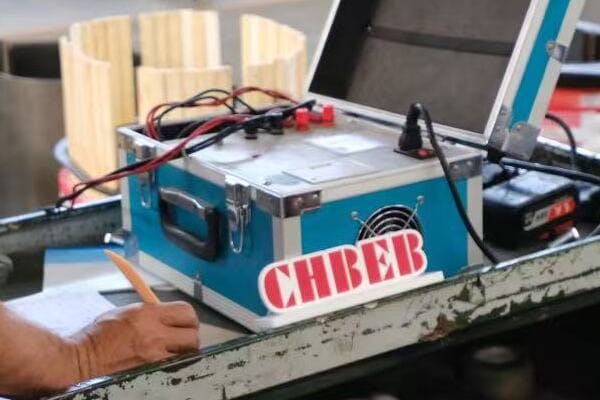
A Step-by-Step Guide to Selecting the Right Cooling Method
Let’s break down the process of choosing the appropriate cooling method:
1. Assess Your Load Profile
Consider:
- Average and peak load requirements
- Load variability throughout operational cycles
- Future load growth projections
I once worked on a project for a manufacturing plant where we initially chose AN cooling based on current needs. However, after discussing their five-year expansion plan, we opted for AF cooling, which provided the flexibility to handle increased future loads without replacing the transformer.
2. Evaluate Environmental Factors
Key considerations:
- Ambient temperature range and fluctuations
- Air quality (dust, humidity, corrosive elements)
- Indoor vs outdoor installation
3. Space and Noise Constraints
Think about:
- Available space for transformer installation
- Proximity to noise-sensitive areas
- Ventilation capabilities of the installation site
4. Maintenance Capabilities and Costs
Factor in:
- Available maintenance resources and expertise
- Long-term cost implications of each cooling method
- Accessibility for regular maintenance and repairs
5. Regulatory and Safety Requirements
Consider:
- Local fire safety regulations
- Environmental protection standards
- Industry-specific compliance requirements
Here’s a decision matrix to help guide your cooling method selection:
| Criteria | Favors AN Cooling | Favors AF Cooling |
|---|---|---|
| Load Profile | Steady, low to medium loads | Variable or high loads |
| Environment | Controlled indoor settings | Harsh or variable conditions |
| Space Constraints | Ample space available | Limited space, need for compact design |
| Noise Sensitivity | High (e.g., offices, hospitals) | Low (e.g., industrial settings) |
| Maintenance Resources | Limited | Well-equipped maintenance team |
| Initial Budget | Lower upfront cost priority | Performance priority over initial cost |
| Future Growth | Limited expected load growth | Significant expected load increases |
In my experience, the decision-making process often involves balancing competing factors. I recall a project for a data center where the high power density and variable loads strongly suggested AF cooling. However, concerns about noise in the adjacent office areas led us to a creative solution using a hybrid system. We implemented AN cooling for base loads and supplemented it with a carefully designed AF system for peak demands, meeting both cooling needs and noise requirements.
The importance of future-proofing cannot be overstated. In a recent substation upgrade project, we chose AF cooling even though current loads could be handled by AN. This decision was based on urban development plans that predicted a 50% increase in power demand over the next decade. The additional upfront cost was justified by avoiding a costly transformer replacement in the near future.
Environmental considerations can sometimes be the deciding factor. I worked on a project in an area with high air pollution where dust accumulation was a major concern. Despite the higher initial cost, we opted for AF cooling with advanced filtration systems. This choice significantly reduced maintenance needs and extended the transformer’s lifespan in the challenging environment.
The availability of maintenance expertise should also influence your decision. In a remote industrial installation, we chose AN cooling over AF, even though AF would have been more efficient. This decision was based on the limited availability of skilled technicians for fan maintenance in the area. The simplicity of AN reduced the risk of prolonged outages due to cooling system failures.
Energy costs and efficiency regulations are becoming increasingly important in the decision-making process. I recently conducted a total cost of ownership analysis for a large commercial client, comparing AN and AF options. Despite the higher initial cost, the AF system’s superior efficiency led to significant energy savings, resulting in a lower total cost over the transformer’s lifespan. This analysis was crucial in justifying the higher upfront investment to the client’s financial team.
The potential for integrating smart monitoring and control systems should also be considered. In a recent grid modernization project, we opted for AF cooling because it allowed for easier integration of smart sensors and adaptive cooling controls. This choice not only improved efficiency but also provided valuable data for predictive maintenance, aligning with the utility’s smart grid initiatives.
Lastly, the trend towards renewable energy integration is influencing cooling method choices. In a recent solar farm project, we selected AF cooling for its ability to handle the variable loads characteristic of solar generation. The system’s flexibility in adjusting cooling capacity based on real-time generation levels proved ideal for this application.
Choosing the right cooling method for your dry-type transformer is a complex decision that requires careful consideration of multiple factors. By systematically evaluating your load requirements, environmental conditions, space constraints, maintenance capabilities, and future growth plans, you can make an informed choice that balances performance, cost, and long-term reliability. Remember that the best solution often involves looking beyond just the immediate needs to consider future changes and evolving technology trends. Whether you opt for the simplicity of AN cooling or the flexibility of AF cooling, the key is to align your choice with both your current requirements and your long-term operational strategy.
Frequently Asked Questions About Dry-Type Transformer Cooling
Are you still puzzled by some aspects of dry-type transformer cooling? You’re not alone. Many professionals have questions about the nuances of AN and AF cooling methods. Let’s address some of the most common queries to help clarify your understanding and aid in your decision-making process.
**1. What’s the main difference between AN and AF cooling in dry-type transformers?
- Can AN-cooled transformers handle temporary overloads?
- How does ambient temperature affect the choice between AN and AF cooling?
- Are AF-cooled transformers always more efficient than AN-cooled ones?
- What maintenance is required for AF cooling systems?
- Can an AN-cooled transformer be converted to AF cooling later?**
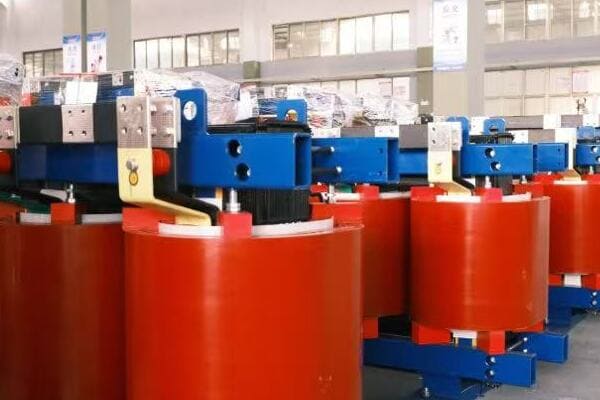
Detailed Answers to Common Questions About Transformer Cooling
Let’s dive deeper into these frequently asked questions:
1. What’s the main difference between AN and AF cooling in dry-type transformers?
Answer: The primary difference lies in the method of air circulation. AN (Air Natural) cooling relies on natural convection to circulate air and dissipate heat. AF (Air Forced) cooling uses fans to force air circulation, enhancing heat dissipation. This fundamental difference affects their cooling capacity, noise levels, and suitable applications.
In my experience, this distinction is crucial in application-specific scenarios. I once worked on a project where we replaced an overheating AN-cooled transformer in a data center with an AF unit. The improvement in cooling efficiency was remarkable, allowing the data center to expand its capacity without major infrastructure changes.
2. Can AN-cooled transformers handle temporary overloads?
Answer: Yes, AN-cooled transformers can handle temporary overloads, but with limitations. The extent and duration of overload capacity depend on factors like ambient temperature, initial load, and the transformer’s design. Typically, AN-cooled transformers can handle 10-15% overloads for short periods, but prolonged overloading can lead to accelerated insulation aging and reduced lifespan.
I recall a project where an AN-cooled transformer in an office building was regularly experiencing short-term overloads during peak hours. We implemented a load management system to monitor and limit these overloads, extending the transformer’s life while avoiding the need for an immediate upgrade.
3. How does ambient temperature affect the choice between AN and AF cooling?
Answer: Ambient temperature plays a crucial role in cooling method selection. AN cooling is more sensitive to ambient temperature fluctuations. In environments with high ambient temperatures, AN cooling may struggle to dissipate heat effectively, potentially leading to reduced capacity or accelerated aging. AF cooling, with its forced air circulation, can maintain more consistent temperatures even in warmer environments.
In a recent project in a hot, arid climate, we opted for AF cooling despite the client’s initial preference for AN. The AF system’s ability to maintain lower operating temperatures in the challenging environment justified the higher initial cost, ensuring reliable operation and longer transformer life.
4. Are AF-cooled transformers always more efficient than AN-cooled ones?
Answer: Not necessarily. The efficiency depends on various factors including load profile, ambient conditions, and the specific design of the transformer. AF-cooled transformers can be more efficient under high loads or in high ambient temperatures due to better heat dissipation. However, for low to medium loads in favorable environments, AN-cooled transformers can be equally or more efficient, especially when considering the energy consumption of fans in AF systems.
I conducted an efficiency comparison study for a utility client, comparing AN and AF transformers across different load profiles. We found that for their distribution network with mostly steady, moderate loads, AN transformers were actually more energy-efficient overall when factoring in the power consumption of AF cooling fans.
5. What maintenance is required for AF cooling systems?
Answer: AF cooling systems require more maintenance compared to AN systems due to the presence of moving parts (fans). Typical maintenance includes:
- Regular inspection and cleaning of fans and air filters
- Lubrication of fan bearings
- Checking and tightening electrical connections
- Periodic replacement of fans and control components
- Monitoring of fan performance and noise levels
In my experience, implementing a proactive maintenance program for AF-cooled transformers is crucial. I developed a maintenance schedule for a large industrial client that reduced unexpected fan failures by 70% and significantly extended the overall transformer lifespan.
6. Can an AN-cooled transformer be converted to AF cooling later?
Answer: While it’s technically possible to add fans to an AN-cooled transformer, it’s not always practical or recommended. Such conversions require careful engineering considerations:
- The transformer’s original design may not accommodate efficient forced air cooling
- Structural modifications might be necessary to install fans
- The transformer’s rating and performance characteristics may need re-evaluation
- Regulatory approvals and safety certifications might be affected
I once consulted on a project where a client wanted to convert their AN transformers to AF due to increased loads. After a thorough analysis, we determined that a full replacement with properly designed AF units was more cost-effective and reliable in the long run than attempting to retrofit the existing units.
Understanding these nuances of dry-type transformer cooling is crucial for making informed decisions in transformer selection and management. The choice between AN and AF cooling impacts not just initial performance, but long-term reliability, maintenance needs, and overall system efficiency. As technology advances, we’re seeing innovations like smart cooling controls and hybrid systems that blur the lines between traditional AN and AF categories, offering new solutions to optimize transformer cooling for specific applications.
Conclusion
Choosing between AN and AF cooling for dry-type transformers involves balancing factors like load profile, environment, maintenance capabilities, and long-term costs. AN offers simplicity and low maintenance for steady, moderate loads, while AF provides better cooling for high or variable loads. The right choice depends on your specific application needs and operational context.
📩 Contact us for a free technical consultation or request a custom quotation.
Are you worried about the environmental risks associated with oil-immersed transformers in your power projects? You’re not alone. Many engineers and project managers struggle with balancing performance needs against environmental safety concerns. But what if you could ensure both efficiency and eco-friendliness in your transformer installations?
Oil-immersed transformers pose environmental risks such as fire hazards and oil leakage. Understanding these risks and applying eco-friendly materials and design measures helps ensure regulatory compliance and safer long-term operation in industrial, utility, and renewable energy projects.
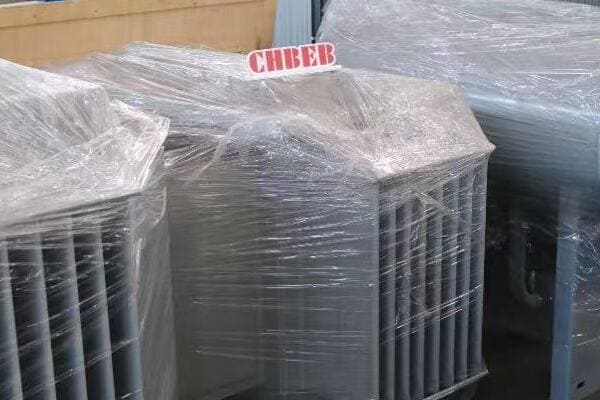
In this comprehensive guide, I’ll walk you through the key environmental considerations for oil-immersed transformers. We’ll explore fire risks, oil spillage concerns, and eco-friendly alternatives. Whether you’re designing a new substation or upgrading existing infrastructure, this article will help you make informed decisions that balance performance with environmental responsibility.
Why Environmental Safety Matters for Oil-Immersed Transformers?
Have you ever considered the potential environmental impact of a transformer failure? The consequences can be severe, ranging from localized contamination to widespread ecological damage. But why exactly are these risks so significant, and how do they affect your projects and operations?
Environmental safety is crucial for oil-immersed transformers due to the potential for oil fires and spills. These incidents can lead to soil and water contamination, violate environmental regulations, and result in costly cleanups and legal issues. Prioritizing environmental safety ensures regulatory compliance, reduces operational risks, and protects both the environment and public safety.
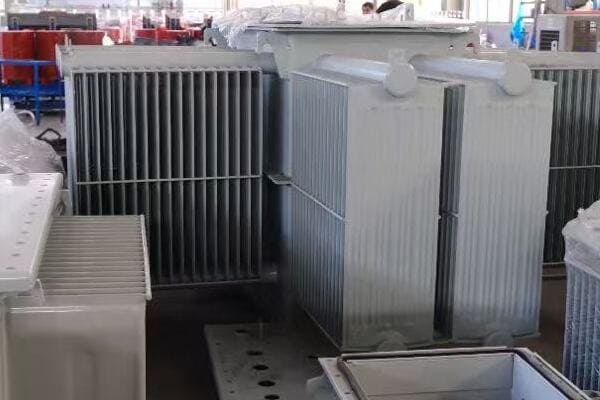
Understanding the Environmental Impact of Transformers
Let’s delve deeper into why environmental safety is so important:
1. Ecological Consequences
Oil spills can:
- Contaminate soil and groundwater
- Harm local flora and fauna
- Disrupt ecosystems for years
I once worked on a project where a minor transformer leak went unnoticed for months. The resulting soil contamination required extensive remediation, costing the company millions and damaging their reputation in the community.
2. Regulatory Compliance
Environmental safety measures ensure:
- Adherence to local and international regulations
- Avoidance of hefty fines and penalties
- Maintenance of operating licenses
3. Public Safety
Proper environmental safeguards:
- Reduce fire risks in populated areas
- Prevent contamination of water sources
- Protect public health and safety
4. Corporate Responsibility
Prioritizing environmental safety:
- Enhances company reputation
- Aligns with sustainability goals
- Demonstrates commitment to community welfare
Here’s a table summarizing the key aspects of environmental safety for transformers:
| Aspect | Risks | Mitigation Measures | Benefits |
|---|---|---|---|
| Oil Spills | Soil/water contamination | Containment systems, leak detection | Environmental protection, regulatory compliance |
| Fire Hazards | Property damage, air pollution | Fire-resistant fluids, suppression systems | Enhanced safety, reduced insurance costs |
| Noise Pollution | Community disturbance | Sound-absorbing enclosures | Better community relations, compliance with noise regulations |
| End-of-Life Disposal | Hazardous waste issues | Recyclable materials, proper disposal planning | Reduced environmental impact, compliance with waste regulations |
In my experience, the importance of environmental safety in transformer design and operation cannot be overstated. I recall a project for a utility company where we implemented advanced oil containment and fire suppression systems. Initially seen as an unnecessary expense, these measures proved invaluable when a transformer failed due to a manufacturing defect. The containment system prevented any oil from escaping, avoiding what could have been a significant environmental incident.
The choice of insulating fluid can have far-reaching environmental implications. In a recent substation upgrade project, we opted for biodegradable natural ester fluids instead of traditional mineral oil. While more expensive initially, this decision significantly reduced the environmental risks associated with potential leaks and simplified the emergency response procedures.
Noise pollution is an often-overlooked environmental concern with transformers. I worked on an urban substation project where strict noise regulations were in place. We had to implement advanced sound-absorbing enclosures and vibration dampening systems. This not only ensured compliance but also improved relations with the local community, demonstrating how environmental considerations can have broader positive impacts.
The end-of-life disposal of transformers is becoming an increasingly important environmental consideration. In a recent large-scale grid modernization project, we factored in the recyclability and disposal of materials from the design phase. This forward-thinking approach not only ensured compliance with waste regulations but also aligned with the utility’s sustainability goals.
Climate change is influencing how we approach environmental safety for transformers. I’m currently involved in a project designing transformers for a coastal substation where rising sea levels and increased storm intensity are concerns. We’re implementing enhanced sealing and elevated designs to protect against potential flooding, showcasing how environmental safety measures must adapt to changing climate conditions.
The integration of smart monitoring systems is revolutionizing environmental safety management for transformers. In a recent deployment, we installed advanced sensors and IoT-enabled monitoring devices on a fleet of transformers. These systems provide real-time data on oil levels, temperature, and gas composition, allowing for predictive maintenance and early detection of potential environmental risks.
Lastly, the importance of employee training in environmental safety cannot be overstated. I’ve developed comprehensive training programs for maintenance teams, focusing on early detection of leaks, proper handling of insulating fluids, and emergency response procedures. This human element is crucial in ensuring that the technical safety measures are effectively implemented and maintained.
Understanding and prioritizing environmental safety for oil-immersed transformers is not just about compliance or risk mitigation. It’s a fundamental aspect of responsible engineering and sustainable operations. By considering environmental impacts from design through to end-of-life disposal, we can create transformer systems that are not only efficient and reliable but also environmentally sound. This holistic approach benefits the ecosystem, enhances public safety, ensures regulatory compliance, and ultimately contributes to the long-term sustainability of our power infrastructure.
Understanding Fire Hazards Associated with Transformer Oil?
Have you ever wondered why transformer fires, though rare, can be so catastrophic when they occur? The combination of high voltages and flammable oil creates a unique fire risk that demands our attention. But what exactly makes these fires so dangerous, and how can we effectively mitigate this risk?
**Key factors contributing to fire risk:
- Low flash point of mineral oil
- Overload and overheating of windings
- Internal arcing or short circuits
- Poor ventilation in enclosed spaces
- Lack of flame-retardant enclosure or fire suppression system
Prevention strategies:
- Use of high-flash-point or less flammable fluids
- Thermal sensors and protection relays
- Fire barriers and safe setback distances
- Automatic extinguishing systems (e.g., water spray, inert gas)
- Regular inspection and preventive maintenance**
Diving Deeper into Transformer Fire Hazards
Let’s explore the complexities of transformer fire risks and prevention:
1. Understanding Oil Flammability
Mineral oil characteristics:
- Flash point typically around 140-150°C
- Can ignite at temperatures reached during severe faults
- Produces dense smoke and toxic gases when burning
I once investigated a transformer fire where the mineral oil ignited due to an internal arc. The rapid spread of the fire and the intense smoke generation were eye-opening, reinforcing the importance of proper fire prevention measures.
2. Overload and Overheating Risks
Factors leading to overheating:
- Exceeding rated load capacity
- Cooling system failures
- Accumulation of sludge reducing heat dissipation
3. Internal Faults and Arcing
Common causes of internal faults:
- Insulation breakdown due to aging or contamination
- Loose connections or mechanical damage
- Transient overvoltages from lightning or switching operations
4. Environmental and Design Factors
Considerations for fire risk reduction:
- Proper ventilation in indoor installations
- Adequate spacing between transformers
- Use of fire-resistant barriers and enclosures
Here’s a table comparing different transformer fluids and their fire safety characteristics:
| Fluid Type | Flash Point | Fire Point | Biodegradability | Relative Cost |
|---|---|---|---|---|
| Mineral Oil | ~140-150°C | ~170-180°C | Low | Low |
| Silicone Fluid | >300°C | >350°C | Very Low | High |
| Natural Ester | >300°C | >350°C | High | Medium |
| Synthetic Ester | >250°C | >300°C | Medium | High |
In my experience, the choice of insulating fluid can significantly impact fire safety. I worked on a project upgrading transformers in a densely populated urban area where fire risk was a major concern. We opted for natural ester fluids despite their higher cost. The substantially higher flash and fire points provided an extra layer of safety that was crucial for gaining regulatory approval and community acceptance.
The importance of proper maintenance in fire prevention cannot be overstated. I recall a case where a transformer fire was traced back to a gradual buildup of contaminants in the oil, which led to reduced cooling efficiency and eventual overheating. This incident led us to implement more rigorous oil testing and filtration schedules across all our managed transformers.
Advanced monitoring systems play a crucial role in fire prevention. In a recent large-scale deployment, we installed online dissolved gas analysis (DGA) systems on critical transformers. These systems can detect the early signs of internal faults by analyzing gases dissolved in the oil, allowing for intervention before a fault escalates to a fire risk.
The design of transformer installations is key to minimizing fire spread. I worked on a substation redesign project where we implemented fire barriers between transformers and increased the spacing beyond minimum requirements. While this increased the footprint of the substation, it significantly reduced the risk of fire propagation between units.
Climate change is introducing new challenges in transformer fire safety. In regions experiencing more frequent and severe heatwaves, we’re having to reassess cooling system designs and load ratings. I’m currently involved in a project developing adaptive loading algorithms that adjust transformer capacity based on real-time environmental conditions, helping to prevent overheating in extreme weather.
The human factor in fire safety is often underestimated. I’ve developed comprehensive training programs for substation operators, focusing on early detection of potential fire risks and proper emergency response procedures. This training has proven invaluable in several near-miss incidents where early intervention prevented potential fires.
Lastly, the integration of smart fire detection and suppression systems is revolutionizing transformer fire safety. In a recent project, we implemented a system that combines thermal imaging, acoustic sensors, and fast-acting suppression using environmentally friendly agents. This multi-layered approach provides rapid detection and response, significantly reducing the risk of catastrophic fires.
Understanding and mitigating fire hazards associated with transformer oil is crucial for ensuring the safety and reliability of power systems. By considering factors such as oil type, monitoring systems, installation design, and maintenance practices, we can significantly reduce the risk of transformer fires. As technology advances and environmental concerns grow, the trend towards safer, less flammable insulating fluids and smarter monitoring systems will likely continue, further enhancing the safety of oil-immersed transformers. Remember, while the risk can never be completely eliminated, proper design, maintenance, and preparedness can go a long way in preventing and mitigating transformer fires.
Oil Leakage and Ground Contamination: Risks and Regulations?
Are you concerned about the potential environmental impact of oil leaks from your transformers? You’re right to be worried. Oil leakage can lead to serious ground contamination, regulatory violations, and costly cleanups. But what exactly are the risks involved, and how do regulations address this issue?
**Common causes of oil spillage:
- Tank corrosion or mechanical damage
- Faulty gaskets and seals
- Overfilled conservator tanks
- Poor transport handling
Environmental impact of oil leakage:
- Soil and groundwater contamination
- Non-compliance with local environmental regulations
- High cleanup and legal costs
Containment measures:
- Secondary oil containment bunds
- Leak detection sensors
- Double-walled tank design
- Scheduled oil integrity testing**
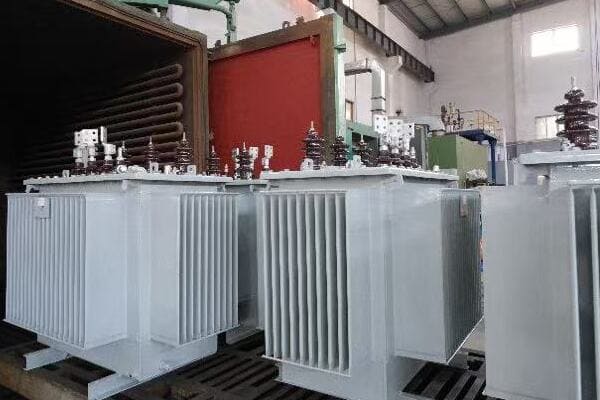
Exploring Oil Leakage Risks and Regulatory Landscape
Let’s delve deeper into the complexities of oil leakage and related regulations:
1. Understanding Oil Leakage Risks
Potential sources of leaks:
- Aging equipment and material degradation
- Improper maintenance or handling
- Environmental factors (e.g., extreme temperatures, flooding)
I once investigated a significant oil leak at a substation caused by a hairline crack in an old transformer tank. The slow leak had gone unnoticed for months, resulting in extensive soil contamination. This experience highlighted the importance of regular inspections and modern leak detection systems.
2. Environmental Impact of Oil Spills
Consequences of oil contamination:
- Long-term soil and water pollution
- Harm to local ecosystems and wildlife
- Potential impact on human health through contaminated groundwater
3. Regulatory Framework
Key regulations and standards:
- EPA Spill Prevention, Control, and Countermeasure (SPCC) rules
- IEC 60076-11 for transformer containment systems
- Local environmental protection laws and guidelines
4. Containment and Prevention Strategies
Essential measures include:
- Properly designed and maintained oil containment systems
- Regular oil level monitoring and integrity checks
- Emergency response plans for spill management
Here’s a table summarizing common oil containment methods:
| Method | Description | Advantages | Limitations |
|---|---|---|---|
| Bunding | Impermeable barrier around transformer | Simple, effective for large spills | Requires regular maintenance |
| Double-walled tanks | Two-layer tank construction | Integrated protection, space-efficient | Higher cost, complex repairs |
| Oil-water separators | System to separate oil from water runoff | Effective for small, continuous leaks | Requires regular cleaning |
| Absorption systems | Materials that absorb spilled oil | Quick deployment for emergencies | Limited capacity, disposal issues |
In my experience, the effectiveness of oil containment systems can vary greatly depending on their design and maintenance. I worked on a project retrofitting older substations with modern containment systems. We found that while many had basic bunding, they often lacked proper drainage or were compromised by vegetation growth. Upgrading to sealed, properly sloped containment areas with oil-water separators significantly improved their effectiveness.
The importance of proper sizing in oil containment cannot be overstated. I recall a case where a containment system was undersized due to a calculation error. During a major leak, the system overflowed, leading to widespread contamination and hefty fines. Now, I always recommend designing containment systems to hold at least 110% of the total oil volume, plus allowance for rainwater in outdoor installations.
Leak detection technology has advanced significantly in recent years. In a recent large-scale deployment, we installed fiber optic sensors in the containment areas of critical transformers. These systems can detect even minute oil leaks quickly, allowing for rapid response and minimizing environmental impact. The initial investment was justified by the reduced risk of major spills and associated cleanup costs.
Climate change is introducing new challenges in oil containment design. I’m currently involved in a project reassessing containment systems in flood-prone areas. We’re implementing elevated designs and improved water management systems to ensure containment integrity even during extreme weather events.
The regulatory landscape for oil containment is constantly evolving. I’ve seen cases where companies faced significant fines due to non-compliance with updated regulations they were unaware of. To address this, we’ve developed a regulatory tracking system for our clients, ensuring their containment systems remain compliant with the latest standards.
Employee training plays a crucial role in preventing and managing oil leaks. I’ve developed comprehensive training programs covering everything from routine inspections to emergency spill response. In one instance, quick action by well-trained staff contained a potentially major spill to a small area, demonstrating the value of preparedness.
Lastly, the trend towards eco-friendly transformer fluids is changing the landscape of oil containment. While working on a project using natural ester fluids, we found that containment requirements could be less stringent due to the fluid’s biodegradability. However, we still implemented robust containment as a best practice, recognizing that prevention is always better than cure.
Understanding and addressing the risks of oil leakage and ground contamination is crucial for responsible transformer operation. By implementing effective containment systems, regular monitoring, and staying abreast of regulatory requirements, we can significantly reduce the risk of environmental damage. As technology advances and regulations evolve, the focus on preventing and mitigating oil leaks will likely intensify. Remember, investing in proper containment and prevention measures is not just about regulatory compliance – it’s about protecting our environment and ensuring sustainable operations for the long term.
How to Reduce Environmental Risks: Design, Materials, and Installation Best Practices?
Are you looking for ways to minimize the environmental impact of your transformer installations? You’re not alone. Many engineers and project managers are seeking effective strategies to reduce environmental risks without compromising performance. But what are the best practices in design, materials, and installation that can make a real difference?
**To reduce environmental risks in transformer installations:
- Design with containment in mind (e.g., bunding, double-walled tanks)
- Use eco-friendly insulating fluids (natural esters, synthetic esters)
- Implement advanced monitoring systems for early leak detection
- Choose corrosion-resistant materials for tanks and fittings
- Install proper ventilation and fire suppression systems
- Ensure adequate spacing and fire barriers between units
- Develop comprehensive maintenance and emergency response plans**

Best Practices for Environmentally Safe Transformer Installations
Let’s explore these strategies in more detail:
1. Containment-Focused Design
Key design elements:
- Impermeable bunding with 110%+ capacity
- Sloped floors for easy oil collection
- Oil-water separators for runoff management
I once worked on a substation upgrade where we retrofitted existing transformers with modern containment systems. The new design included a polymer-coated concrete bund with a capacity of 120% of the transformer’s oil volume. This upgrade significantly reduced the risk of soil contamination in case of a leak.
2. Eco-Friendly Insulating Fluids
Options to consider:
- Natural ester fluids (vegetable-based oils)
- Synthetic esters
- Silicone fluids
3. Advanced Monitoring Systems
Implement:
- Online dissolved gas analysis (DGA)
- Fiber optic temperature sensors
- Acoustic partial discharge detection
4. Corrosion-Resistant Materials
Use:
- Stainless steel or galvanized steel for tanks
- High-quality gaskets and seals
- Protective coatings for exposed parts
Here’s a comparison table of materials for transformer components:
| Component | Traditional Material | Eco-Friendly Alternative | Benefits |
|---|---|---|---|
| Tank | Carbon Steel | Stainless Steel | Corrosion resistance, longer lifespan |
| Insulating Fluid | Mineral Oil | Natural Ester | Biodegradable, higher flash point |
| Gaskets | Rubber | Fluoroelastomer | Better sealing, chemical resistance |
| Radiators | Aluminum | Copper | Better heat dissipation, recyclable |
In my experience, the choice of materials can significantly impact a transformer’s environmental footprint. I recall a project where we replaced old mineral oil-filled transformers with units using natural ester fluid. Not only did this reduce the fire risk, but it also simplified the environmental compliance process due to the fluid’s biodegradability.
Proper installation practices are crucial for environmental safety. In a recent substation project, we implemented a comprehensive checklist for installers, covering everything from proper handling of fluids to the correct setup of containment systems. This approach significantly reduced the risk of installation-related leaks and spills.
Ventilation and fire suppression systems play a critical role in environmental safety. I worked on a project for an indoor substation where we designed a state-of-the-art ventilation system coupled with an environmentally friendly fire suppression system using clean agents. This setup not only enhanced safety but also minimized the potential environmental impact in case of a fire.
The importance of spacing and fire barriers cannot be overstated. In a large transformer farm project, we increased the standard spacing between units and installed fire-resistant barriers. While this increased the overall footprint, it significantly reduced the risk of fire spread, potentially preventing a catastrophic environmental incident.
Maintenance planning is a key aspect of environmental risk reduction. I’ve developed comprehensive maintenance programs that include regular oil testing, infrared scanning for hotspots, and periodic review of containment system integrity. In one case, this proactive approach helped us identify and address a developing leak before it could cause any environmental damage.
Emergency response planning is crucial. I once consulted on a project where we simulated various spill scenarios to test and refine the response procedures. This exercise revealed several gaps in the existing plan, leading to improvements that proved invaluable when a real incident occurred months later.
The integration of smart monitoring technologies is revolutionizing environmental risk management. In a recent large-scale deployment, we installed IoT-enabled sensors that provide real-time data on oil levels, temperature, and gas composition. This system allows for predictive maintenance and early detection of potential environmental risks, significantly enhancing our ability to prevent incidents before they occur.
Climate change considerations are increasingly influencing transformer design and installation. I’m currently working on a project to develop climate-resilient transformer installations for coastal areas. This involves elevated designs, enhanced waterproofing, and the use of materials that can withstand increased corrosion from rising sea levels and more frequent storm surges.
Lastly, the trend towards circular economy principles is impacting transformer lifecycle management. In a recent project, we incorporated easily recyclable materials and designed for easy disassembly at end-of-life. This approach not only reduces the environmental impact of disposal but also aligns with growing regulatory pressures for sustainable product lifecycles.
Implementing best practices in design, materials, and installation is crucial for reducing the environmental risks associated with transformer operations. By focusing on containment, using eco-friendly materials, implementing advanced monitoring systems, and developing comprehensive maintenance and emergency response plans, we can significantly enhance the environmental safety of transformer installations. As technology advances and environmental regulations become more stringent, these best practices will continue to evolve. Staying informed and proactive in adopting these practices not only ensures regulatory compliance but also demonstrates a commitment to environmental stewardship and sustainable operations.
Eco-Friendly Alternatives: Natural Esters, Silicon Fluids, and Dry-Type Options?
Are you exploring greener options for your transformer projects? You’re not alone. Many engineers and project managers are turning to eco-friendly alternatives to traditional mineral oil. But what are these options, and how do they compare in terms of performance, cost, and environmental impact?
**Eco-friendly alternatives to traditional transformer oils include:
- Natural esters (vegetable oils): Biodegradable, high flash point
- Synthetic esters: Good performance, less environmental impact
- Silicon fluids: Non-flammable, stable, but not biodegradable
- Dry-type transformers: No liquid insulation, ideal for indoor use
Each option offers unique benefits in terms of safety, environmental protection, and performance characteristics.**
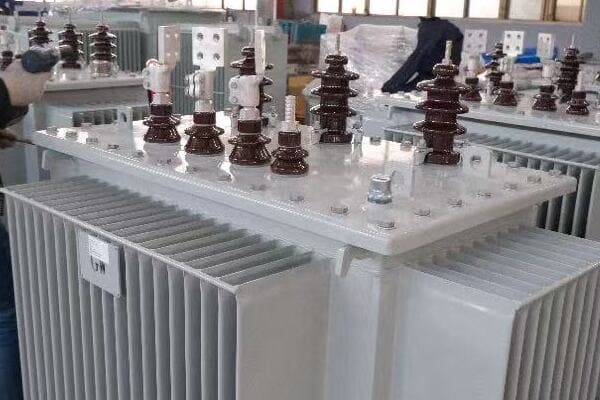
Comparing Eco-Friendly Transformer Options
Let’s dive deeper into these alternatives:
| Feature | Mineral Oil | Natural Ester (Vegetable Oil) | Dry-Type Transformer |
|---|---|---|---|
| Flash Point | ~155°C | >300°C | Not applicable |
| Biodegradability | Low | High | N/A |
| Fire Resistance | Moderate | High | Very High |
| Cooling Efficiency | High | Moderate | Lower |
| Environmental Impact | Potentially harmful | Eco-safe | Minimal |
| Maintenance Complexity | Low | Moderate | Low |
| Cost | Low | Higher | Higher |
| Typical Applications | Utility, industrial | Substations, green buildings | Indoor, public areas |
1. Natural Esters (Vegetable Oils)
Advantages:
- Highly biodegradable
- High flash and fire points (>300°C)
- Renewable resource
Considerations:
- Higher viscosity may affect cooling efficiency
- More expensive than mineral oil
- May require design modifications for optimal performance
I once worked on a project replacing mineral oil transformers with natural ester units in an environmentally sensitive area. The higher cost was justified by the reduced environmental risk and improved fire safety, which was crucial for obtaining local permits.
2. Synthetic Esters
Key features:
- Good balance of performance and environmental properties
- Better oxidation stability than natural esters
- Lower pour point, suitable for cold climates
Limitations:
- Higher cost than mineral oil and natural esters
- Not as biodegradable as natural esters
3. Silicon Fluids
Advantages:
- Non-flammable (K-class fluid)
- Excellent thermal stability
- Long service life
Drawbacks:
- Not biodegradable
- Higher cost
- Special handling required for maintenance
4. Dry-Type Transformers
Benefits:
- No risk of oil leaks or fires
- Minimal maintenance required
- Ideal for indoor and sensitive environments
Limitations:
- Lower overload capacity
- Generally limited to lower voltage and power ratings
- Higher initial cost for equivalent ratings
In my experience, the choice of eco-friendly alternatives often depends on specific project requirements and local regulations. I recall a project for a data center where we opted for silicon fluid-filled transformers. The non-flammable nature of the fluid was crucial for fire safety, while the long service life and stability aligned well with the facility’s 24/7 operational needs.
The performance of natural esters in extreme conditions is an area of ongoing research and development. I’m currently involved in a project testing natural ester-filled transformers in arctic conditions. We’re finding that with proper formulation and design adjustments, these eco-friendly fluids can perform reliably even in extremely cold environments.
Maintenance considerations vary significantly between these alternatives. In a comparative study I conducted, we found that while dry-type transformers required less routine maintenance, natural ester-filled units needed more frequent oil quality checks due to their higher moisture absorption tendency. This highlights the importance of considering lifecycle maintenance in the selection process.
The regulatory landscape is increasingly favoring eco-friendly alternatives. I’ve seen cases where utilities received incentives for adopting biodegradable transformer fluids as part of broader environmental initiatives. This trend is likely to continue, potentially offsetting the higher initial costs of these alternatives in the long run.
Retrofitting existing transformers with eco-friendly fluids is an emerging practice. I recently consulted on a project where we replaced mineral oil with natural esters in several large power transformers. While challenging, this retrofit significantly extended the transformers’ operational life while improving their environmental and safety profile.
The choice of eco-friendly alternatives can impact transformer design. In a recent project using natural esters, we had to modify the cooling system design to account for the fluid’s higher viscosity. This involved larger radiators and more powerful pumps, but the end result was a transformer that met both performance and environmental goals.
Lastly, the trend towards smart grids is influencing the adoption of eco-friendly transformer options. I’m seeing increased interest in combining natural ester-filled transformers with advanced monitoring systems. This combination offers both environmental benefits and the ability to optimize performance and predict maintenance needs, aligning well with smart grid initiatives.
Choosing eco-friendly alternatives for transformers involves carefully balancing environmental benefits, performance requirements, and economic considerations. While options like natural esters, synthetic fluids, and dry-type transformers offer significant environmental advantages, they also come with their own set of challenges and considerations. As technology advances and environmental regulations become more stringent, these eco-friendly alternatives are likely to become increasingly prevalent in the power industry. By understanding the pros and cons of each option, engineers and project managers can make informed decisions that align with both operational needs and environmental responsibilities.
Global Standards and Environmental Compliance for Transformer Projects?
Are you finding it challenging to navigate the complex world of global standards and environmental compliance for transformer projects? You’re not alone. Many professionals struggle to keep up with the ever-evolving regulations across different regions. But what are the key standards you need to know, and how can you ensure your projects meet global environmental requirements?
**Key global standards and environmental compliance considerations for transformer projects include:
- IEC 60076 series for transformer design and testing
- IEEE C57 standards widely used in North America
- EU Ecodesign Directive for energy efficiency
- REACH and RoHS regulations for hazardous substances
- ISO 14001 for environmental management systems
- Local environmental protection laws and regulations
- Specific utility and industry standards for performance and safety**
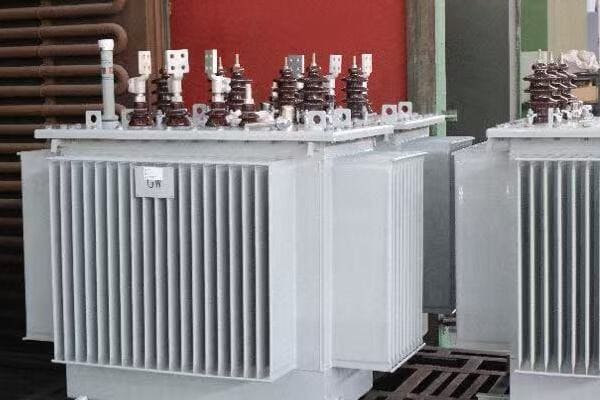
Navigating Global Standards and Environmental Compliance
Let’s explore these standards and compliance requirements in more detail:
1. International Electrotechnical Commission (IEC) Standards
Key IEC standards include:
- IEC 60076-1: General requirements for power transformers
- IEC 60076-2: Temperature rise for liquid-immersed transformers
- IEC 60076-11: Dry-type transformers
- IEC 60076-14: Liquid-immersed power transformers using high-temperature insulation materials
I once worked on a project exporting transformers to multiple countries. Ensuring compliance with IEC standards was crucial for gaining acceptance in diverse markets. We had to carefully review and test against each relevant IEC standard to ensure global compatibility.
2. IEEE Standards
Important IEEE standards:
- IEEE C57.12.00: General requirements for liquid-immersed distribution, power, and regulating transformers
- IEEE C57.12.01: General requirements for dry-type distribution and power transformers
3. Energy Efficiency Regulations
Key efficiency standards:
- EU Ecodesign Directive (Regulation 548/2014)
- US Department of Energy (DOE) efficiency standards
- China Energy Label (CEL) requirements
4. Environmental Protection Regulations
Critical environmental standards:
- REACH (Registration, Evaluation, Authorization and Restriction of Chemicals)
- RoHS (Restriction of Hazardous Substances)
- Various national environmental protection laws
Here’s a comparison table of key global standards:
| Standard | Region | Focus | Key Requirements |
|---|---|---|---|
| IEC 60076 | Global | Design & Testing | Comprehensive transformer specifications |
| IEEE C57 | North America | Design & Performance | Detailed requirements for various transformer types |
| EU Ecodesign | Europe | Energy Efficiency | Minimum efficiency levels for transformers |
| REACH | Europe | Chemical Safety | Registration and restriction of hazardous substances |
| ISO 14001 | Global | Environmental Management | Framework for effective environmental management system |
In my experience, navigating these global standards requires a comprehensive approach. I recall a project where we were designing transformers for a multinational corporation with installations across three continents. We had to create a compliance matrix that cross-referenced IEC, IEEE, and local standards to ensure our designs met all relevant requirements in each region.
Energy efficiency standards are becoming increasingly stringent globally. In a recent project upgrading a utility’s transformer fleet, we had to balance the EU Ecodesign Directive’s efficiency requirements with local grid stability needs. This involved careful selection of core materials and winding designs to meet both efficiency targets and performance requirements.
Environmental regulations like REACH and RoHS have significant implications for transformer design and material selection. I worked on a project where we had to completely redesign our insulation system to eliminate certain restricted substances. While challenging, this process led to the development of a more environmentally friendly transformer that actually performed better in several key areas.
The implementation of ISO 14001 environmental management systems is becoming more common in transformer manufacturing. I consulted for a manufacturer implementing ISO 14001, and we found that it not only improved their environmental performance but also opened up new market opportunities where this certification was valued or required.
Local environmental regulations can vary significantly and often go beyond global standards. In a project for a transformer installation in a sensitive ecological area, we had to navigate complex local regulations regarding oil containment and noise levels. This required close collaboration with local authorities and environmental experts to develop a compliant and environmentally responsible design.
The trend towards smart grids is influencing compliance requirements. I’m currently involved in a project developing transformers with advanced monitoring capabilities to meet emerging smart grid standards. These units need to comply not only with traditional transformer standards but also with new requirements for data communication and cybersecurity.
Climate change considerations are increasingly being incorporated into standards and compliance requirements. In a recent coastal substation project, we had to design to enhanced standards for flood resistance and corrosion protection due to rising sea levels and increased storm intensity. This showcases how environmental compliance is evolving to address long-term climate risks.
Lastly, the push for circular economy principles is beginning to impact transformer standards. I’m seeing growing interest in standards that address the entire lifecycle of transformers, including recyclability and end-of-life management. This holistic approach to environmental compliance is likely to become more prevalent in the coming years.
Navigating global standards and environmental compliance for transformer projects is a complex but crucial task. It requires a thorough understanding of international standards like IEC and IEEE, as well as regional regulations on energy efficiency and environmental protection. By staying informed about these standards and proactively addressing compliance requirements, engineers and project managers can ensure their transformer projects meet global environmental standards while also optimizing performance and reliability. As regulations continue to evolve, particularly in response to climate change and sustainability concerns, maintaining up-to-date knowledge and adaptable design practices will be key to successful and compliant transformer projects worldwide.
Real-World Practices: How Utilities Manage Transformer Environmental Impact?
Are you curious about how major utilities tackle the environmental challenges posed by their transformer fleets? You’re not alone. Many in the industry are looking to learn from real-world practices. But what strategies are leading utilities employing to minimize their transformers’ environmental footprint while maintaining reliable operations?
**Utilities manage transformer environmental impact through:
- Implementing robust oil containment systems
- Adopting eco-friendly insulating fluids
- Regular monitoring and predictive maintenance
- Efficient disposal and recycling programs
- Investing in energy-efficient transformer designs
- Developing comprehensive emergency response plans
- Training staff in environmental best practices
- Integrating environmental considerations into procurement processes**
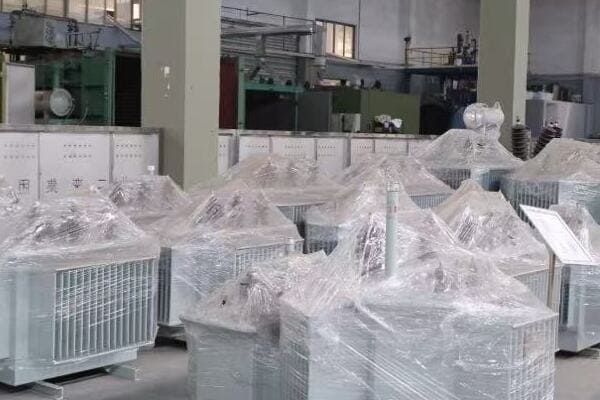
Exploring Utility Practices in Transformer Environmental Management
Let’s delve into how utilities are addressing these environmental challenges:
1. Oil Containment Systems
Best practices include:
- Secondary containment bunds with 110%+ capacity
- Impermeable surfaces and proper drainage
- Regular inspection and maintenance of containment structures
I once consulted for a large utility upgrading their substation containment systems. We implemented a modular bunding solution that could be easily adapted to different transformer sizes and site conditions. This approach not only improved environmental protection but also reduced installation time and costs across their network.
2. Eco-Friendly Insulating Fluids
Trends in fluid selection:
- Gradual transition to natural and synthetic esters
- Use of high fire point fluids in high-risk areas
- Retrofilling existing transformers with biodegradable fluids
3. Monitoring and Maintenance
Advanced practices:
- Online dissolved gas analysis (DGA) for early fault detection
- Infrared scanning for hotspot identification
- Regular oil quality testing and filtration
4. Disposal and Recycling
Responsible end-of-life management:
- Partnering with certified recycling facilities
- Proper handling and disposal of PCB-contaminated oils
- Recycling of core and winding materials
Here’s a table summarizing key environmental management practices:
| Practice | Description | Environmental Benefit | Implementation Challenge |
|---|---|---|---|
| Oil Containment | Secondary bunding, leak detection | Prevents soil/water contamination | Retrofitting existing installations |
| Eco-Friendly Fluids | Natural esters, synthetic esters | Biodegradability, fire safety | Higher cost, design modifications |
| Advanced Monitoring | Online DGA, IoT sensors | Early detection of issues | Initial investment, data management |
| Efficient Recycling | Partnering with certified recyclers | Reduces waste, recovers materials | Logistics, finding qualified partners |
| Energy-Efficient Designs | Low-loss cores, better cooling | Reduces energy consumption | Higher upfront costs |
In my experience, the most effective utility practices combine multiple approaches. I worked with a utility that implemented a comprehensive environmental management program for their transformers. This included upgrading to ester fluids in sensitive areas, installing advanced monitoring systems across their fleet, and developing a network-wide oil containment upgrade plan. The holistic approach significantly reduced their environmental risks and improved overall system reliability.
The adoption of eco-friendly fluids is gaining momentum among utilities. In a recent large-scale project, we helped a utility transition their entire urban substation network to natural ester-filled transformers. While the initial cost was higher, the improved fire safety and reduced environmental risk justified the investment, particularly in densely populated areas.
Predictive maintenance based on advanced monitoring is revolutionizing how utilities manage environmental risks. I consulted on the implementation of an IoT-based monitoring system for a major utility. By analyzing real-time data on oil condition, temperature, and dissolved gases, they can now predict and prevent potential failures that could lead to environmental incidents.
Efficient disposal and recycling practices are becoming increasingly important. I worked with a utility to develop a comprehensive end-of-life management program for their transformers. This included partnerships with certified recycling facilities and a tracking system to ensure proper handling of all materials. The program not only ensured regulatory compliance but also recovered valuable materials, offsetting some of the disposal costs.
Climate change adaptation is influencing utility practices. In a recent coastal substation project, we had to redesign the transformer installations to account for potential sea-level rise and increased storm intensity. This included elevated platforms, enhanced waterproofing, and more robust containment systems, showcasing how utilities are future-proofing their infrastructure against environmental changes.
Staff training plays a crucial role in environmental management. I developed a comprehensive training program for a utility’s maintenance teams, covering everything from proper oil handling to emergency spill response. This investment in human capital significantly reduced the incidence of small spills and improved overall environmental performance.
The integration of environmental considerations into procurement processes is a growing trend. I advised a utility on developing an environmentally-focused procurement policy for transformers. This included lifecycle environmental impact assessments as part of the tender evaluation process, encouraging manufacturers to innovate in eco-friendly designs.
Lastly, the trend towards distributed energy resources is changing how utilities manage transformer environmental impacts. In a recent project, we worked on integrating small, eco-friendly transformers into a utility’s renewable energy microgrids. This decentralized approach not only improved system resilience but also reduced the environmental risks associated with large, centralized transformer installations.
Real-world practices in managing transformer environmental impact among utilities are evolving rapidly. Leading utilities are adopting a multi-faceted approach that combines advanced containment systems, eco-friendly materials, smart monitoring technologies, and responsible lifecycle management. These practices not only ensure regulatory compliance but also contribute to overall system reliability and sustainability. As environmental concerns continue to grow, utilities that proactively address these issues are likely to see benefits in terms of regulatory compliance, public perception, and long-term operational efficiency. The key to success lies in viewing environmental management not as a burden, but as an opportunity for innovation and improvement in transformer operations.
Summary: Environmentally Safe Transformer Deployment Checklist?
Are you preparing for a transformer installation and want to ensure you’ve covered all the environmental bases? You’re not alone. Many engineers and project managers seek a comprehensive checklist to guide their environmentally safe transformer deployments. But what are the key points you absolutely must consider to protect both your project and the environment?
Environmental Safety Checklist for Transformer Deployment:
✅ Select insulating fluids with high flash point or low toxicity
✅ Design with oil containment bunds or sealed tank systems
✅ Confirm compliance with IEC, EPA, and local EHS standards
✅ Assess installation location: indoor, outdoor, high-risk area
✅ Consider dry-type or natural ester alternatives where feasible
✅ Plan regular inspection, maintenance, and emergency response
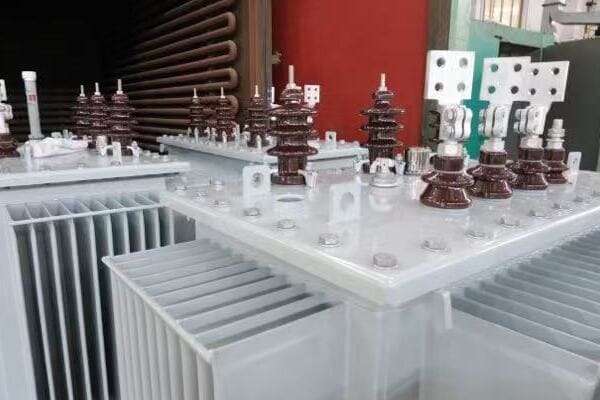
Comprehensive Checklist for Environmentally Safe Transformer Deployment
Let’s break down each point in detail:
1. Insulating Fluid Selection
Consider:
- Natural or synthetic esters for biodegradability
- High flash point fluids for fire safety
- Low toxicity options for reduced environmental impact
I once worked on a project where selecting the right insulating fluid was crucial. We opted for a natural ester in a substation near a water source. This choice significantly reduced the potential environmental impact in case of a leak, and it also improved the project’s standing with local environmental authorities.
2. Oil Containment Design
Key elements:
- Secondary containment with 110%+ capacity
- Impermeable surfaces and proper drainage
- Leak detection systems
3. Regulatory Compliance
Ensure adherence to:
- IEC 60076 series for design and testing
- EPA regulations for oil spill prevention
- Local environmental health and safety standards
4. Location Assessment
Factors to consider:
- Indoor vs. outdoor installation requirements
- Proximity to sensitive environmental areas
- Climate and weather considerations
5. Alternative Technologies
Explore options like:
- Dry-type transformers for indoor applications
- Gas-insulated transformers for specific environments
- Amorphous core designs for improved efficiency
6. Maintenance and Emergency Planning
Develop plans for:
- Regular inspections and oil testing
- Predictive maintenance using monitoring data
- Spill response and containment procedures
Here’s a detailed checklist table:
| Category | Item | Completed | Notes |
|---|---|---|---|
| Fluid Selection | High flash point fluid chosen | ☐ | |
| Biodegradability assessed | ☐ | ||
| Containment | Secondary containment designed | ☐ | |
| Leak detection system planned | ☐ | ||
| Compliance | IEC standards reviewed | ☐ | |
| Local regulations checked | ☐ | ||
| Location | Environmental risk assessment done | ☐ | |
| Climate considerations addressed | ☐ | ||
| Technology | Alternative designs considered | ☐ | |
| Efficiency ratings compared | ☐ | ||
| Maintenance | Inspection schedule created | ☐ | |
| Emergency response plan developed | ☐ |
In my experience, this checklist has been invaluable in ensuring comprehensive environmental consideration in transformer deployments. I recall a complex project where we used a similar checklist for a large substation upgrade. It helped us identify and address several potential environmental issues early in the design phase, saving significant time and resources later.
The importance of location assessment cannot be overstated. In a recent coastal project, our thorough location assessment led us to implement enhanced corrosion protection and elevated designs to account for potential sea-level rise. This foresight not only ensured environmental safety but also extended the expected lifespan of the installation.
Regulatory compliance can be complex, especially for international projects. I worked on a transformer deployment that spanned multiple countries. We created a compliance matrix that cross-referenced IEC standards with local regulations in each country. This approach ensured we met all necessary environmental requirements while maintaining a consistent design approach.
The choice between traditional and alternative technologies often involves balancing multiple factors. In an urban substation project, we carefully weighed the pros and cons of dry-type vs. oil-filled transformers. While dry-type offered clear environmental advantages for the indoor setting, we had to ensure it could meet the required capacity and overload capabilities. The checklist prompted a thorough analysis that led to an optimal solution.
Maintenance and emergency planning are crucial for long-term environmental safety. I helped develop a comprehensive maintenance program for a utility’s transformer fleet. This included not just regular inspections and tests, but also integration with their asset management system to predict and prevent potential environmental incidents. The program significantly reduced the risk of oil leaks and improved overall environmental performance.
The trend towards smart monitoring is influencing how we approach environmental safety. In a recent large-scale deployment, we incorporated IoT sensors and real-time monitoring systems into the transformers. This allowed for early detection of potential issues and more efficient maintenance, further enhancing environmental safety.
Lastly, end-of-life considerations are becoming an integral part of environmentally safe deployments. I’m currently working on a project where we’re designing transformers with easier recyclability and using materials with lower environmental impact. This lifecycle approach is increasingly important as regulations around product stewardship become more stringent.
This environmentally safe transformer deployment checklist serves as a comprehensive guide to ensure all critical aspects are considered. By methodically working through each point, you can significantly reduce environmental risks, ensure regulatory compliance, and optimize the long-term sustainability of your transformer installations. Remember, environmental safety is not just about meeting current standards – it’s about future-proofing your installations and demonstrating responsible environmental stewardship. As you use this checklist, consider it a living document that can be adapted and expanded based on your specific project needs and evolving environmental best practices.
Conclusion
Environmental considerations are crucial in oil-immersed transformer projects. By implementing proper containment, using eco-friendly materials, and following global standards, we can significantly reduce environmental risks. Regular maintenance, emergency preparedness, and adoption of new technologies further enhance environmental safety in transformer operations.
📩 Contact our engineering team for customized eco-friendly transformer solutions or request a quote today.
Frequently Asked Questions
Q1: Are natural esters better than mineral oil in transformers?
A: Yes. Natural esters have a higher flash point, are biodegradable, and offer superior fire safety. They are ideal for environmentally sensitive or indoor installations, though they are more expensive and may require design modifications.
Q2: Do oil-immersed transformers comply with international environmental standards?
A: They can, if equipped with bunding, leak prevention systems, and if using certified eco-friendly fluids. Standards like IEC 61039, REACH, and EPA oil containment rules provide guidance.
Q3: Can dry-type transformers fully replace oil-filled ones?
A: Not in all cases. While dry-type transformers are fire-safe and eco-friendly, their size and cooling limitations make them less suitable for high-power or outdoor applications.
Are you struggling to choose the perfect oil-immersed transformer for your project? You’re not alone. Many engineers and project managers find themselves overwhelmed by the myriad of options and technical specifications. But what if you could navigate this complex decision with confidence and ease?
Choosing an oil-immersed transformer requires evaluating voltage levels, capacity, cooling method, and application environment. Industrial, utility, and renewable projects demand different technical specifications to ensure safe operation, grid compatibility, and long-term efficiency.
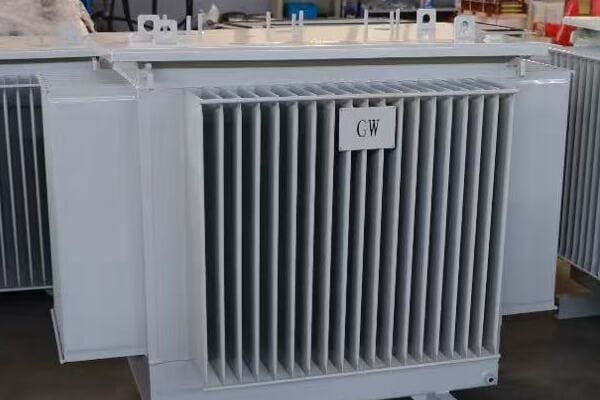
In this comprehensive guide, I’ll walk you through the key factors to consider when selecting an oil-immersed transformer. Whether you’re working on an industrial facility, a utility grid project, or a renewable energy installation, you’ll learn how to identify the right transformer that meets your specific needs. Let’s dive in and demystify the selection process together.
Understand the Role of Oil-Immersed Transformers in Different Power Systems?
Have you ever wondered why oil-immersed transformers are so widely used across various power systems? From industrial plants to utility grids and renewable energy projects, these transformers play a crucial role. But what makes them so versatile, and how do their functions differ across these diverse applications?
Oil-immersed transformers are vital in power systems due to their excellent insulation and cooling properties. In industrial settings, they handle variable loads and motor starts. For utilities, they ensure reliable power distribution. In renewable projects, they integrate fluctuating energy sources with the grid.
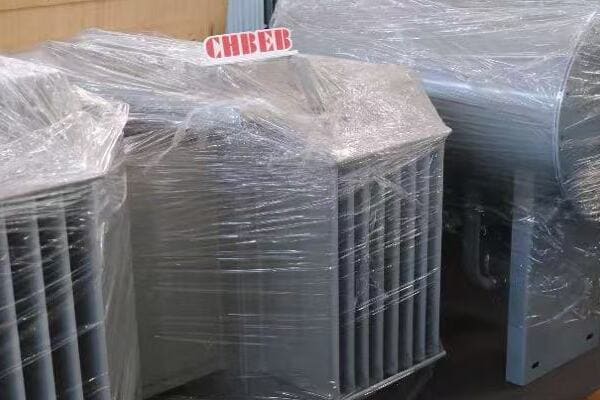
Exploring the Versatility of Oil-Immersed Transformers
Let’s delve deeper into how these transformers function in various power systems:
1. Industrial Applications
In industrial settings, oil-immersed transformers:
- Handle high inrush currents from motor starts
- Manage variable loads from different processes
- Provide reliable power for critical operations
I once worked on a project for a large manufacturing plant where we installed a 2500 kVA oil-immersed transformer. Its ability to handle the frequent load changes and motor starts was crucial for maintaining smooth operations.
2. Utility Grid Applications
For utility grids, these transformers:
- Step up voltage for efficient long-distance transmission
- Step down voltage for local distribution
- Maintain grid stability under varying load conditions
3. Renewable Energy Projects
In renewable energy systems, oil-immersed transformers:
- Adapt to fluctuating power generation from solar or wind
- Enable bidirectional power flow for grid integration
- Provide efficient voltage transformation for long-distance transmission
4. Advantages Across All Applications
Common benefits include:
- Excellent cooling and insulation properties
- Long operational life with proper maintenance
- Ability to handle overloads for short periods
Here’s a comparison table of transformer roles in different systems:
| Application | Primary Role | Key Features |
|---|---|---|
| Industrial | Power quality and reliability | High overload capacity, robust design |
| Utility Grid | Efficient power transmission and distribution | Large capacity, tap changers for voltage regulation |
| Renewable Energy | Integration of variable sources | Bidirectional capability, specialized designs for wind/solar |
In my experience, the adaptability of oil-immersed transformers is their greatest strength. I recall a project where we repurposed a utility-grade transformer for a large solar farm. With some modifications to the tap settings and protection systems, it performed excellently in this new role, handling the variable output of the solar panels efficiently.
The cooling efficiency of oil-immersed transformers is particularly valuable in high-load industrial environments. In a recent project for a steel mill, we implemented a large OFWF (Oil Forced Water Forced) cooled transformer. Its ability to maintain stable temperatures under extreme, fluctuating loads was impressive, ensuring uninterrupted operation of the electric arc furnaces.
For utility applications, the long-term reliability of oil-immersed transformers is crucial. I’ve been involved in the maintenance of substation transformers that have been in operation for over 40 years. With proper oil monitoring and maintenance, these units continue to perform efficiently, showcasing the longevity that makes them a preferred choice for utilities.
In renewable energy projects, the challenge often lies in managing variable inputs. I worked on a wind farm project where we used specially designed oil-immersed transformers with on-load tap changers. These units could adjust to the varying output of the wind turbines in real-time, ensuring stable power delivery to the grid.
The environmental considerations of oil-immersed transformers are becoming increasingly important. In a recent project, we implemented biodegradable ester fluids instead of traditional mineral oil. This choice not only reduced environmental risks but also improved fire safety, a critical factor for the indoor substation location.
Smart grid integration is another area where oil-immersed transformers are evolving. I’m currently involved in a project implementing transformers with advanced monitoring systems. These units can communicate real-time data on load, temperature, and oil condition, enabling predictive maintenance and improving overall grid reliability.
Lastly, the role of oil-immersed transformers in energy storage systems is an exciting development. In a recent battery storage project, we used specialized transformers designed to handle the rapid charge and discharge cycles. Their ability to manage bidirectional power flow and frequent load changes was key to the successful integration of the storage system with the grid.
Understanding the diverse roles of oil-immersed transformers in different power systems is crucial for selecting the right unit for your project. Whether it’s handling the dynamic loads of an industrial facility, ensuring the reliability of a utility grid, or integrating renewable sources, these transformers offer the versatility and performance needed in modern power systems. By considering the specific requirements of your application, you can choose a transformer that not only meets your current needs but also adapts to future changes in your power system.
Key Technical Parameters to Consider Before Selecting a Transformer?
Are you feeling overwhelmed by the technical specifications when choosing a transformer? You’re not alone. Many professionals struggle to prioritize the numerous parameters involved. But what if you had a clear roadmap of the most critical factors to consider?
**Key parameters to consider before selecting a transformer:
- Rated capacity (kVA): Match load demand with 20% buffer
- Primary & secondary voltage: Align with grid or equipment requirements
- Impedance: Crucial for fault current limitation
- Cooling method: ONAN, ONAF, or OFWF based on load profile
- Connection method: Dyn11, Yyn0, or custom
- Insulation class: A, B, F for different environments
- Protection level: IP20–IP55 for indoor/outdoor use
- Compliance standards: IEC, ANSI, GB, UL, CE**
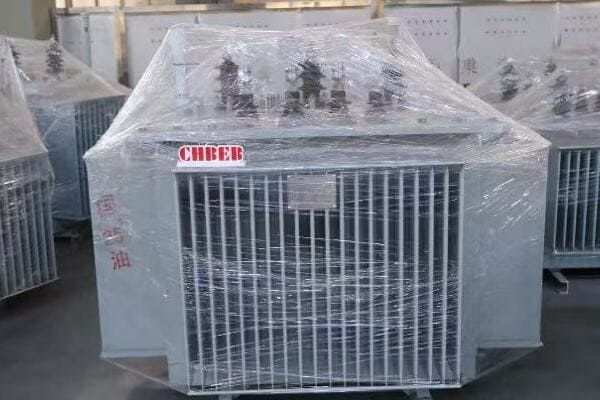
Diving Deeper into Transformer Selection Parameters
Let’s explore these critical parameters in more detail:
1. Rated Capacity (kVA)
Considerations for capacity selection:
- Current load requirements
- Future expansion plans
- Peak load handling capability
I once worked on a project where the client insisted on a transformer barely meeting their current needs. Within two years, they had to replace it due to expanded operations. Now, I always advise including at least a 20% capacity buffer for future growth.
2. Voltage Ratings
Key voltage considerations:
- Primary voltage matching grid supply
- Secondary voltage suitable for connected equipment
- Tap changer requirements for voltage regulation
3. Impedance
Importance of impedance:
- Fault current limitation
- System stability
- Parallel operation compatibility
4. Cooling Method
Factors influencing cooling choice:
- Load profile (steady vs variable)
- Environmental conditions
- Space constraints
Here’s a table summarizing cooling method characteristics:
| Cooling Method | Best For | Advantages | Considerations |
|---|---|---|---|
| ONAN | Small to medium loads | Simple, low maintenance | Limited capacity |
| ONAF | Medium to large loads | Adaptable to load changes | Requires fan maintenance |
| OFWF | Very large loads | High cooling efficiency | Complex, water supply needed |
In my experience, choosing the right cooling method is crucial for long-term performance. I recall a project where we initially selected ONAN cooling for a medium-sized industrial transformer. As the facility expanded, we had to upgrade to ONAF to handle the increased load, which could have been avoided with better initial planning.
The importance of proper voltage selection cannot be overstated. In a recent renewable energy project, we had to carefully consider the voltage requirements for integrating solar panels with the local grid. The transformer’s ability to handle the varying input voltage from the panels while maintaining a stable output was critical for the project’s success.
Impedance selection is often overlooked but can have significant implications. I worked on a utility substation upgrade where the new transformer’s impedance had to be carefully matched with existing units for parallel operation. This attention to detail ensured smooth integration and improved overall system stability.
The insulation class choice depends heavily on the operating environment. In a project for a paper mill with high ambient temperatures and humidity, we opted for Class F insulation. This decision, while increasing the initial cost, significantly extended the transformer’s lifespan in the challenging environment.
Protection levels are crucial, especially for outdoor installations. I once consulted on a coastal project where standard IP protection was insufficient. We had to specify a custom enclosure with enhanced corrosion resistance to withstand the salt-laden air, highlighting the importance of considering local environmental factors.
Compliance with relevant standards is non-negotiable. In an international project, we had to ensure the transformer met both IEC and ANSI standards, as it was part of a global supply chain. This dual compliance, while challenging, opened up broader market opportunities for the client.
The trend towards more efficient transformers is driving innovations in core materials. I’m currently involved in a project evaluating amorphous core transformers. While more expensive initially, their significantly lower no-load losses make them an attractive option for applications with long operating hours.
Lastly, the integration of smart monitoring systems is becoming increasingly important. In a recent large-scale deployment, we incorporated advanced sensors and communication capabilities into the transformers. This not only allowed for real-time monitoring but also enabled predictive maintenance, significantly improving reliability and reducing downtime.
Understanding and carefully considering these key technical parameters is crucial for selecting the right transformer for your project. Each parameter plays a vital role in ensuring the transformer’s performance, efficiency, and longevity. By thoroughly evaluating these factors in the context of your specific application and future needs, you can make an informed decision that balances technical requirements, cost-effectiveness, and long-term reliability. Remember, the right choice often involves looking beyond immediate needs to consider future growth and changing operational demands.
Transformer Requirements for Industrial Applications: What to Look For?
Are you tasked with selecting a transformer for an industrial project? The unique demands of industrial environments can make this choice challenging. But what specific features should you prioritize to ensure your transformer can handle the rigors of industrial use?
**For industrial applications, transformers should have:
- High overload capacity to handle motor starts and peak loads
- Robust mechanical design to withstand vibrations and harsh environments
- Efficient cooling systems (often ONAF or OFWF) for continuous heavy loads
- Tap changers for voltage regulation under varying load conditions
- Enhanced protection against harmonics and power quality issues
- Compatibility with industrial control and monitoring systems**
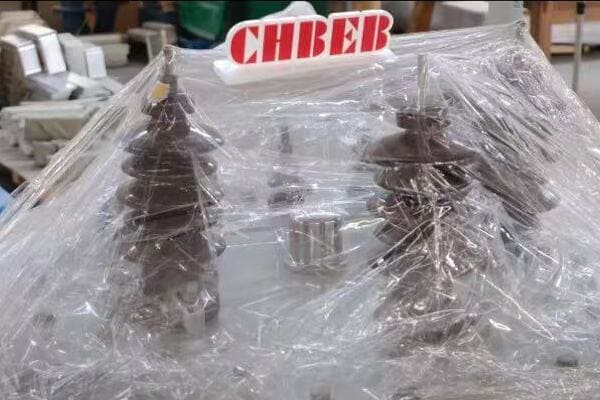
Key Considerations for Industrial Transformers
Let’s explore the critical aspects of transformers for industrial use:
1. Load Handling Capability
Industrial transformers must:
- Manage high inrush currents from motor starts
- Handle sustained overloads during peak production
- Adapt to rapidly changing load profiles
I once worked on a project for a large automotive plant where the transformer had to handle frequent welding machine operations. The high, short-duration current spikes required a transformer with exceptional overload capacity and rapid heat dissipation.
2. Mechanical Robustness
Key features for industrial environments:
- Reinforced tank and core construction
- Vibration-resistant design
- Enhanced protection against physical impacts
3. Cooling System Efficiency
Cooling considerations include:
- ONAF or OFWF systems for high-load applications
- Efficient heat dissipation in confined spaces
- Ability to operate in high ambient temperatures
4. Voltage Regulation
Important aspects:
- On-load tap changers for dynamic voltage adjustment
- Wide range of tap settings to accommodate voltage fluctuations
- Fast response to load changes
Here’s a table comparing transformer features for different industrial applications:
| Application | Key Feature | Cooling Method | Special Requirement |
|---|---|---|---|
| Heavy Manufacturing | High overload capacity | ONAF/OFWF | Robust mechanical design |
| Process Industry | Steady load handling | ONAN/ONAF | Corrosion-resistant materials |
| Data Centers | High efficiency | ONAF | Low noise, high reliability |
| Mining Operations | Rugged construction | OFWF | Dust and moisture protection |
In my experience, the choice of transformer for industrial applications often involves balancing multiple factors. I recall a project for a steel mill where we needed a transformer that could handle both the high continuous loads of the rolling mill and the periodic surges from the electric arc furnaces. We opted for an OFWF-cooled unit with enhanced short-circuit strength and an advanced on-load tap changer. This combination provided the necessary robustness and flexibility for the demanding application.
The importance of proper sizing cannot be overstated in industrial settings. In a recent expansion project for a chemical plant, we had to carefully consider not just the current load but also the planned future additions. We ended up selecting a transformer with 30% extra capacity, which proved invaluable when the plant expanded faster than initially projected.
Harmonic mitigation is a critical concern in many industrial applications. I worked on a project for a large printing facility where the numerous variable frequency drives were causing significant harmonic distortion. We implemented a transformer with a specialized winding design and additional filtering to manage these harmonics, greatly improving power quality and equipment longevity.
Environmental considerations can significantly impact transformer selection. In a project for a coastal industrial facility, we had to design a custom enclosure with enhanced corrosion resistance and specialized sealing to protect against salt-laden air and high humidity. This attention to environmental factors was crucial for ensuring long-term reliability in the harsh conditions.
The integration of transformers with industrial control systems is becoming increasingly important. I’m currently involved in a project implementing smart transformers in a large manufacturing complex. These units are equipped with advanced sensors and communication capabilities, allowing real-time monitoring and integration with the plant’s overall energy management system. This integration not only improves operational efficiency but also enables predictive maintenance, reducing downtime.
Energy efficiency is a growing concern in industrial transformer selection. In a recent project for an energy-intensive process industry, we conducted a detailed total cost of ownership analysis. Despite a higher initial cost, we chose a high-efficiency transformer with amorphous core technology. The energy savings over the transformer’s lifespan were projected to be substantial, aligning with the client’s sustainability goals and offering significant long-term cost benefits.
Noise considerations can be critical in certain industrial settings. I once worked on a project for a food processing plant where strict noise regulations applied. We had to carefully select a transformer with enhanced noise reduction features, including special core construction and tank design. Meeting these noise requirements while maintaining the necessary performance characteristics required close collaboration with the manufacturer.
Lastly, the trend towards modular and scalable industrial systems is influencing transformer design. In a recent project for a rapidly growing technology manufacturing facility, we implemented a modular transformer system. This approach allowed for easier capacity expansion and provided the flexibility to reconfigure the power distribution as the facility’s needs evolved.
Selecting the right transformer for industrial applications requires a thorough understanding of the specific operational demands and environmental conditions. By carefully considering factors such as load profile, mechanical stresses, cooling requirements, and power quality needs, you can choose a transformer that not only meets current demands but also provides the flexibility and reliability needed for future growth. Remember, in industrial settings, the cost of downtime often far outweighs the initial investment in a high-quality, well-specified transformer.
Utility-Grade Transformers: Meeting Grid Compliance and Reliability Standards?
Are you grappling with the complexities of selecting a transformer for utility grid applications? The stringent requirements and long-term reliability needs of power grids can make this a daunting task. But what specific features should you focus on to ensure your transformer meets both current standards and future grid demands?
**Utility-grade transformers must meet strict grid compliance and reliability standards. Key features include:
- High voltage insulation for transmission-level voltages
- Advanced tap changing capabilities for voltage regulation
- Robust short-circuit strength to withstand grid faults
- Enhanced efficiency to minimize transmission losses
- Smart monitoring systems for grid integration
- Compliance with specific utility and regulatory standards (e.g., IEEE, IEC)**
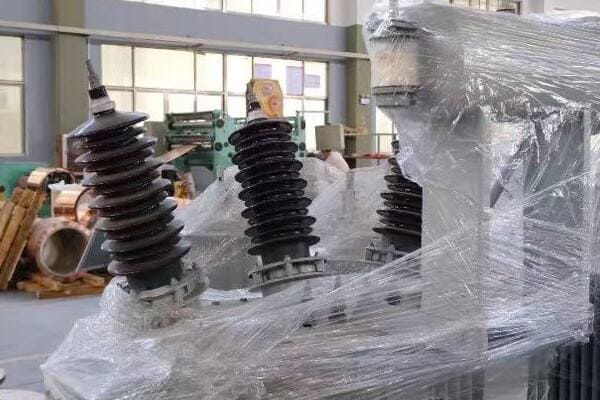
Essential Aspects of Utility-Grade Transformers
Let’s explore the critical features of transformers for utility applications:
1. Voltage Insulation and Regulation
Utility transformers require:
- High-grade insulation for transmission voltages (up to 765kV)
- On-load tap changers for dynamic voltage adjustment
- Wide regulation range to maintain grid stability
I once worked on a project upgrading a major substation where we installed a 500kV transformer. The insulation design was critical, not just for normal operation but also to withstand lightning strikes and switching surges. We implemented a hybrid insulation system that combined traditional oil-paper insulation with modern polymer insulators for enhanced performance.
2. Short-Circuit Strength and Reliability
Key considerations include:
- Robust mechanical design to withstand fault currents
- Enhanced winding reinforcement
- Extensive testing for short-circuit withstand capability
3. Efficiency and Loss Reduction
Focus areas for efficiency:
- Low-loss core materials (e.g., amorphous metals)
- Optimized winding designs
- Consideration of total owning cost (TOC) over lifespan
4. Smart Grid Integration
Modern utility transformers often feature:
- Advanced monitoring and diagnostic systems
- Communication interfaces for grid management
- Real-time data reporting for load balancing and predictive maintenance
Here’s a table comparing key features of utility transformers for different voltage classes:
| Voltage Class | Key Feature | Typical Capacity Range | Special Requirement |
|---|---|---|---|
| Distribution (≤69kV) | Load tap changers | 5-50 MVA | Smart metering integration |
| Sub-transmission (69-230kV) | Enhanced cooling | 50-200 MVA | Noise reduction for urban areas |
| Transmission (>230kV) | Advanced insulation | 200-1000 MVA | Seismic design for stability |
In my experience, the selection of utility-grade transformers often involves balancing multiple, sometimes competing, requirements. I recall a project for a growing urban area where we needed to upgrade the substation capacity while working within strict space and noise constraints. We opted for a highly efficient, low-noise design with ONAF cooling. The transformer incorporated advanced monitoring systems that allowed for dynamic loading, effectively increasing its capacity during peak hours without compromising its lifespan.
The importance of reliability in utility applications cannot be overstated. In a recent project for a critical grid interconnection point, we implemented a transformer with redundant cooling systems and advanced online monitoring. This included dissolved gas analysis (DGA) sensors that could detect potential issues before they became critical failures. The additional cost was justified by the transformer’s critical role in maintaining grid stability.
Efficiency considerations are becoming increasingly important in utility transformer selection. I worked on a large-scale grid modernization project where we conducted detailed loss evaluations for each transformer. By opting for low-loss amorphous core transformers in key locations, we projected significant energy savings over the transformers’ lifespans, aligning with the utility’s sustainability goals and regulatory efficiency requirements.
Environmental considerations often play a crucial role in utility transformer design. In a project for a coastal substation, we had to design for corrosive salt air, potential flooding, and hurricane-force winds. This led to a specialized enclosure design, enhanced sealing, and reinforced structural supports. We also used biodegradable ester fluid instead of traditional mineral oil to mitigate environmental risks in case of a leak.
The integration of renewable energy sources is posing new challenges for utility transformers. I’m currently involved in a project designing transformers for a large offshore wind farm. These units need to handle the variable input from wind turbines while providing stable output to the grid. We’re implementing advanced tap changers and reactive power compensation systems to manage the fluctuations effectively.
Cybersecurity is an emerging concern in utility transformer design. In a recent high-voltage substation upgrade, we incorporated advanced firewalls and encryption protocols into the transformer’s monitoring and control systems. This was crucial to protect against potential cyber threats that could compromise grid stability.
The trend towards more compact substations is influencing transformer design. I worked on an urban substation renovation where space was at a premium. We utilized a highly compact transformer design with advanced cooling systems to maximize power capacity within the limited footprint. This approach allowed for a significant capacity increase without expanding the substation’s physical boundaries.
Lastly, the increasing focus on grid resilience is driving innovations in transformer technology. I’m part of a research team exploring the use of modular, rapidly deployable transformer systems for emergency response. These units can be quickly installed to restore power in case of major outages or natural disasters, significantly improving grid recovery times.
Selecting the right utility-grade transformer requires a comprehensive understanding of both current grid requirements and future trends. By focusing on key aspects such as insulation quality, reliability, efficiency, and smart grid compatibility, you can choose a transformer that not only meets today’s standards but is also prepared for the evolving demands of modern power grids. Remember, in utility applications, the long-term reliability and adaptability of the transformer are paramount, often justifying higher initial investments for advanced features and robust designs.
Choosing the Right Transformer for Solar, Wind, or Energy Storage Projects?
Are you navigating the complex world of transformer selection for renewable energy projects? The unique challenges posed by solar, wind, and energy storage systems can make this task particularly daunting. But what specific features should you prioritize to ensure optimal performance and grid integration for these green energy solutions?
**For renewable energy projects, transformers should have:
- Ability to handle variable and bidirectional power flows
- High efficiency to maximize energy yield
- Robust design to withstand outdoor conditions
- Compatibility with inverters and grid codes
- Flexibility to operate under fluctuating loads
- Advanced monitoring for remote locations
- Compact design for space-constrained installations**
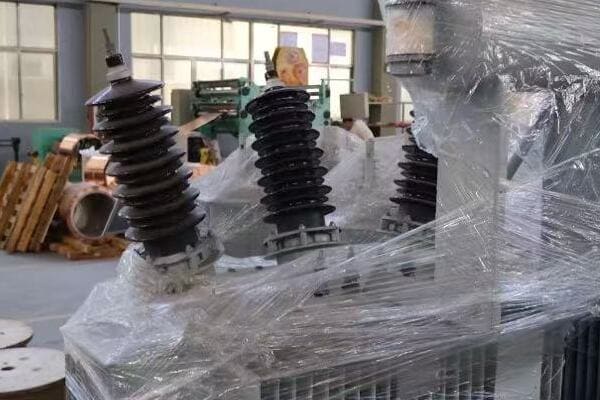
Key Considerations for Renewable Energy Transformers
Let’s explore the critical aspects of transformers for different renewable energy applications:
1. Solar Power Projects
Solar transformers need:
- Ability to handle DC input from inverters
- High efficiency at partial loads
- Thermal management for hot, dusty environments
I once worked on a large solar farm project where we implemented specially designed transformers with enhanced cooling systems. The units were optimized for the farm’s daytime-only generation profile, with efficient operation at varying loads as solar intensity changed throughout the day.
2. Wind Energy Systems
Wind power transformers require:
- Robust design for nacelle or base installation
- Ability to handle rapidly fluctuating inputs
- Compact size for offshore applications
3. Energy Storage Facilities
Transformers for storage systems need:
- Bidirectional power flow capability
- Fast response to charge/discharge cycles
- Integration with battery management systems
4. General Renewable Energy Requirements
Common features across renewable applications:
- Compliance with grid codes for renewable integration
- Remote monitoring and diagnostic capabilities
- Environmentally friendly designs (e.g., biodegradable oils)
Here’s a comparison table of transformer requirements for different renewable energy applications:
| Application | Key Feature | Typical Size Range | Special Requirement |
|---|---|---|---|
| Solar Farm | High efficiency at partial loads | 500 kVA – 10 MVA | Inverter compatibility |
| Wind Farm | Robust, compact design | 2 MVA – 50 MVA | Nacelle or base mounting options |
| Energy Storage | Bidirectional power flow | 1 MVA – 100 MVA | Rapid response to load changes |
| Hybrid Systems | Flexible operation | Varies | Advanced control integration |
In my experience, the selection of transformers for renewable energy projects often involves unique challenges. I recall a project for a large-scale solar farm in a desert environment. The extreme heat and dust posed significant cooling challenges. We implemented a custom ONAF cooling system with specially designed filters to prevent dust ingress. The transformers were also equipped with advanced thermal monitoring to ensure optimal performance in the harsh conditions.
The variability of renewable energy sources necessitates careful consideration of transformer efficiency across a wide load range. In a recent wind farm project, we selected transformers with amorphous metal cores. While more expensive initially, these units provided superior efficiency at the variable loads typical of wind generation, resulting in significant energy savings over the project’s lifespan.
For offshore wind projects, the transformer’s size and weight are critical factors. I worked on an offshore wind farm where space in the nacelle was at a premium. We utilized a compact, dry-type transformer design that minimized size and weight while still meeting the stringent marine environment requirements. The use of biodegradable insulating fluids also mitigated environmental risks.
Energy storage projects present unique challenges due to their bidirectional power flow. In a recent large-scale battery storage facility, we implemented transformers with specialized winding designs to handle the frequent transitions between charging and discharging states. The units were also equipped with advanced cooling systems to manage the heat generated during high-power discharge cycles.
The integration of transformers with renewable energy control systems is becoming increasingly important. I’m currently involved in a project developing smart transformers for a hybrid solar-wind-storage facility. These units incorporate advanced sensors and communication interfaces, allowing real-time adjustment of power flow and voltage levels to optimize overall system performance.
Environmental considerations are paramount in renewable energy projects. In a recent solar farm installation in an environmentally sensitive area, we used transformers filled with natural ester fluids instead of traditional mineral oil. This biodegradable option reduced the environmental risk and aligned with the project’s overall sustainability goals.
Grid compliance is a critical factor in renewable energy transformer selection. I worked on a project where we had to carefully design the transformer’s impedance and tap range to meet stringent grid code requirements for fault ride-through capability and voltage support. This ensured that the renewable energy facility could contribute to grid stability rather than compromising it.
The trend towards distributed energy resources is influencing transformer design for renewables. In a recent community solar project, we implemented multiple smaller transformers instead of a single large unit. This modular approach provided greater flexibility and reliability, allowing sections of the solar farm to remain operational even if one transformer required maintenance.
Lastly, the importance of remote monitoring and diagnostics cannot be overstated for renewable energy transformers, often located in isolated areas. In a wind farm project I consulted on, we integrated advanced IoT sensors and satellite communication systems into the transformers. This allowed for real-time performance monitoring and predictive maintenance, significantly reducing the need for on-site inspections and improving overall reliability.
Selecting the right transformer for renewable energy projects requires a deep understanding of the unique challenges posed by these dynamic and often remote power generation systems. By focusing on key aspects such as efficiency across variable loads, robust design for harsh environments, and smart integration capabilities, you can choose a transformer that not only meets the immediate needs of your renewable energy project but also provides the flexibility and reliability required for long-term success. As the renewable energy sector continues to evolve, transformers play a crucial role in efficiently and safely integrating these clean energy sources into our power grids.
Oil Type, Cooling Method, and Enclosure: Customization Options That Matter?
Are you feeling overwhelmed by the myriad of customization options available for oil-immersed transformers? The choices of oil type, cooling method, and enclosure design can significantly impact your transformer’s performance and lifespan. But how do you navigate these options to find the perfect combination for your specific needs?
**Customization options for oil-immersed transformers include:
- Oil types: Mineral oil, natural/synthetic esters, silicone fluids
- Cooling methods: ONAN, ONAF, OFAF, ODAF, OFWF
- Enclosure designs: Standard, low-profile, submersible, padmounted
Each option affects performance, maintenance, environmental impact, and cost. Choosing the right combination is crucial for optimal transformer operation in your specific environment.**
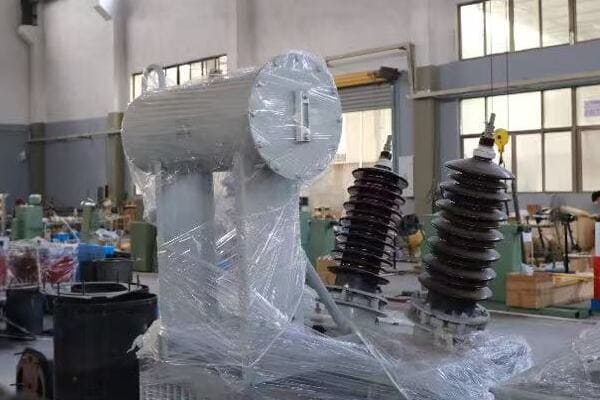
Exploring Transformer Customization Options
Let’s delve into the key customization areas and their implications:
1. Oil Types
Common oil options include:
- Mineral oil: Traditional, cost-effective
- Natural esters: Biodegradable, high fire point
- Synthetic esters: Enhanced performance, environmentally friendly
- Silicone fluids: Non-flammable, suitable for high-risk areas
I once worked on a project for an indoor substation in a densely populated area. We opted for a natural ester-filled transformer due to its high fire safety rating and biodegradability. This choice not only enhanced safety but also simplified the fire suppression system requirements, leading to overall cost savings.
2. Cooling Methods
Cooling options to consider:
- ONAN: Oil Natural Air Natural
- ONAF: Oil Natural Air Forced
- OFAF: Oil Forced Air Forced
- ODAF: Oil Directed Air Forced
- OFWF: Oil Forced Water Forced
3. Enclosure Designs
Enclosure types include:
- Standard: Typical for outdoor substations
- Low-profile: For areas with height restrictions
- Submersible: For flood-prone areas
- Padmounted: For urban or aesthetically sensitive locations
Here’s a comparison table of customization options:
| Aspect | Options | Best For | Considerations |
|---|---|---|---|
| Oil Type | Mineral Oil | Cost-effective solutions | Environmental concerns |
| Natural Esters | Environmentally sensitive areas | Higher cost | |
| Synthetic Esters | High-performance needs | Expensive | |
| Silicone Fluids | High fire-risk locations | Specialized handling | |
| Cooling | ONAN | Small to medium loads | Limited capacity |
| ONAF | Variable loads | Fan maintenance | |
| OFAF/ODAF | Large loads, limited space | Higher complexity | |
| OFWF | Very large loads | Water supply needed | |
| Enclosure | Standard | Typical outdoor use | Basic protection |
| Low-profile | Height-restricted areas | Cooling challenges | |
| Submersible | Flood-prone locations | Cost implications | |
| Padmounted | Urban/aesthetic needs | Security considerations |
In my experience, the right combination of these options can make a significant difference in transformer performance and longevity. I recall a project for a coastal power plant where we had to consider both environmental and performance factors. We chose a synthetic ester-filled transformer with an OFAF cooling system in a corrosion-resistant, sealed tank design. This combination provided excellent cooling efficiency while protecting against the harsh, salt-laden environment.
The choice of oil type can have far-reaching implications. In a recent project for a large data center, we opted for a silicone fluid-filled transformer due to its non-flammable properties. While more expensive initially, this choice eliminated the need for extensive fire suppression systems, ultimately reducing the overall project cost and improving safety.
Cooling method selection is crucial for optimizing performance and efficiency. I worked on an upgrade project for an industrial facility where space was at a premium. By switching from ONAN to ODAF cooling, we were able to significantly increase the transformer’s capacity without changing its footprint. The directed oil flow provided more efficient cooling, allowing for higher loads in the same physical space.
Enclosure design can be particularly important in challenging environments. For a substation project in a flood-prone area, we implemented a fully submersible design. While this increased the initial cost, it provided crucial protection against potential flood damage, ensuring power reliability even in extreme weather events.
The trend towards more environmentally friendly solutions is influencing customization choices. I’m currently involved in a project where we’re using natural ester-filled transformers across an entire utility network. While the upfront costs are higher, the improved biodegradability and higher fire point of the ester fluid align with the utility’s long-term sustainability goals and reduce environmental risks.
Smart monitoring systems are becoming an integral part of transformer customization. In a recent large-scale industrial project, we incorporated advanced sensors and IoT connectivity into the transformer design. This allowed for real-time monitoring of oil condition, temperature, and load patterns, enabling predictive maintenance and optimizing performance.
The choice of cooling method can significantly impact energy efficiency. In a comparative study I conducted for a utility company, we found that upgrading from ONAN to ONAF cooling in their distribution transformers led to a 2% improvement in overall efficiency. While seemingly small, this translated to substantial energy savings across their entire network.
Lastly, the importance of considering future needs in customization decisions cannot be overstated. In a recent project for a rapidly growing tech company, we chose a transformer with ONAF cooling but designed the radiators to accommodate a future upgrade to OFAF. This foresight allowed for easy capacity expansion as the company’s power needs grew, avoiding the need for a complete transformer replacement.
Navigating the customization options for oil-immersed transformers requires careful consideration of your specific operational needs, environmental conditions, and future growth plans. By understanding the implications of different oil types, cooling methods, and enclosure designs, you can make informed decisions that optimize performance, enhance safety, and ensure long-term reliability. Remember, the right customization choices not only address current requirements but also provide the flexibility to adapt to future changes in your power needs and regulatory landscape.
Procurement Tips: How to Balance Performance, Cost, and Lead Time?
Are you struggling to find the perfect balance between transformer performance, cost, and delivery time? This common challenge can leave many project managers feeling stuck between conflicting priorities. But what if you could optimize all three aspects without compromising your project’s success?
**To balance performance, cost, and lead time in transformer procurement:
- Clearly define technical requirements and prioritize must-have features
- Consider total cost of ownership, not just initial price
- Explore standardized designs for faster delivery
- Evaluate multiple suppliers and their production capacities
- Negotiate flexible delivery schedules for large orders
- Consider refurbished options for non-critical applications
- Invest in proper maintenance to extend transformer life and reduce long-term costs**
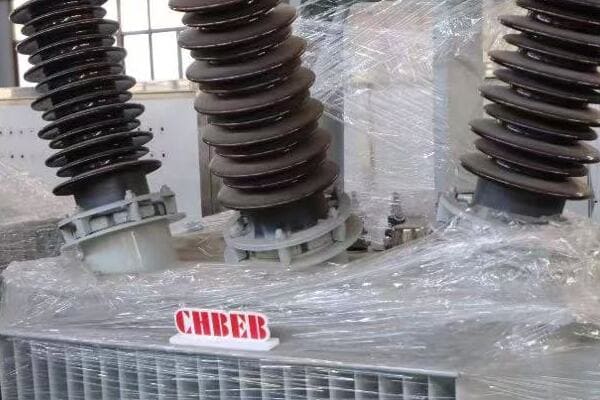
Strategies for Optimizing Transformer Procurement
Let’s explore effective ways to balance these crucial factors:
1. Define and Prioritize Requirements
Key steps include:
- Clearly outlining technical specifications
- Distinguishing between essential and desirable features
- Considering future needs and potential upgrades
I once worked on a project where the client initially specified a highly customized transformer. By carefully reviewing their needs, we identified that a more standard model with minor modifications could meet their requirements. This approach reduced both cost and lead time significantly without compromising performance.
2. Total Cost of Ownership (TCO) Analysis
Consider:
- Initial purchase price
- Installation and commissioning costs
- Operational efficiency and energy losses
- Maintenance requirements over the lifespan
- Potential disposal or recycling costs
3. Standardization vs. Customization
Evaluate:
- Availability of standard designs that meet your needs
- Cost and time implications of customization
- Potential for future modifications or upgrades
4. Supplier Evaluation
Key factors to assess:
- Production capacity and current order backlog
- Quality control processes and certifications
- After-sales support and warranty terms
- Financial stability and long-term reliability
Here’s a comparison table of procurement strategies:
| Strategy | Performance Impact | Cost Impact | Lead Time Impact |
|---|---|---|---|
| High Customization | Optimized for specific needs | Higher | Longer |
| Standard Design | Good for general applications | Lower | Shorter |
| Multiple Suppliers | Varied, needs careful management | Potential for savings | Can be optimized |
| Refurbished Units | Varies, suitable for non-critical use | Significantly lower | Often shorter |
| Bulk Ordering | Consistent across units | Volume discounts possible | May be longer |
In my experience, finding the right balance often requires creative thinking. I recall a large-scale project where we needed 20 transformers with tight delivery deadlines. Instead of ordering all units from one supplier, we split the order among three manufacturers. This strategy not only reduced overall lead time but also provided some cost benefits due to competitive pricing.
The importance of accurate load forecasting cannot be overstated in procurement planning. In a recent utility upgrade project, we conducted detailed load growth analysis before finalizing specifications. This foresight allowed us to select transformers with slightly higher capacity than immediately needed, avoiding costly upgrades in the near future while only marginally increasing the initial investment.
Exploring refurbished options can be a game-changer for certain applications. I worked on a temporary power supply project for a construction site where we used refurbished transformers. These units met the required specifications at a fraction of the cost of new equipment and were available immediately. This approach was perfect for the short-term nature of the project.
Negotiating flexible delivery schedules can yield significant benefits. In a large industrial expansion project, we arranged a phased delivery of transformers aligned with the construction timeline. This approach spread out the capital expenditure and allowed for just-in-time installation, reducing on-site storage needs and associated costs.
The trend towards more energy-efficient transformers is influencing procurement decisions. In a recent grid modernization project, we opted for higher efficiency units despite their higher initial cost. A TCO analysis showed that the energy savings over the transformers’ lifespan more than justified the additional upfront investment, aligning with both economic and environmental goals.
Standardization can significantly impact lead times and costs. I’m currently involved in a utility-scale project where we’ve standardized transformer specifications across multiple substations. This approach not only reduced design and procurement time but also simplified maintenance and spare parts management, leading to long-term operational benefits.
The role of digital tools in procurement is becoming increasingly important. In a recent large-scale procurement, we utilized an AI-driven analytics tool to optimize supplier selection and order allocation. This technology helped us balance cost, quality, and delivery time more effectively than traditional methods.
Lastly, the importance of clear communication and relationship building with suppliers cannot be overstated. I’ve seen cases where strong supplier relationships led to priority treatment during industry-wide supply shortages. Investing time in building these relationships can pay dividends in terms of responsiveness, quality, and even cost savings over time.
Balancing performance, cost, and lead time in transformer procurement requires a strategic approach that considers both immediate needs and long-term implications. By clearly defining requirements, considering total cost of ownership, exploring standardization opportunities, and building strong supplier relationships, you can optimize your procurement process. Remember, the goal is not always to find the cheapest or fastest option, but rather the solution that best meets your project’s specific needs while providing the best value over the transformer’s entire lifecycle. With careful planning and a holistic view of the procurement process, you can achieve a balance that ensures project success and long-term operational efficiency.
Summary Checklist: Match the Right Transformer to Your Project Needs?
Are you ready to make your final transformer selection but want to ensure you haven’t overlooked any crucial factors? This comprehensive checklist will guide you through the key considerations, helping you match the perfect transformer to your project’s unique requirements. Let’s make sure you’ve covered all the bases before making this critical decision.
Summary Checklist for Transformer Selection:
✅ Confirm your voltage input/output requirements
✅ Assess peak and average load profile (kVA)
✅ Choose a cooling method based on environment
✅ Match protection grade to installation location
✅ Select proper connection group (e.g., Dyn11)
✅ Verify local compliance standards (IEC / ANSI / GB)
✅ Consider delivery lead time and customization needs
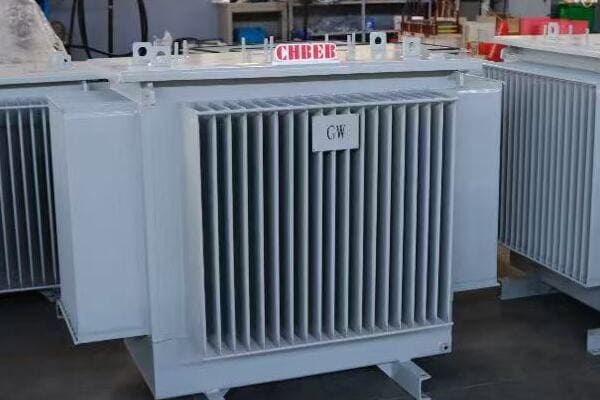
Detailed Transformer Selection Checklist
Let’s break down each point to ensure a thorough evaluation:
1. Voltage Requirements
- Primary voltage: ___ kV
- Secondary voltage: ___ kV
- Tap changer range: ±% in % steps
Ensure these align with your grid or equipment specifications. I once worked on a project where overlooking a minor voltage mismatch led to significant issues during commissioning. Always double-check these fundamental parameters.
2. Load Profile Assessment
- Peak load: ___ kVA
- Average load: ___ kVA
- Future load growth estimate: % over years
3. Cooling Method Selection
- [ ] ONAN
- [ ] ONAF
- [ ] OFAF
- [ ] OFWF
Consider environmental conditions and load profile.
4. Protection Grade
- Indoor: IP___
- Outdoor: IP___
Match to installation environment (e.g., IP55 for outdoor).
5. Connection Group
- [ ] Dyn11
- [ ] Yyn0
- [ ] Other: ___
Ensure compatibility with your system requirements.
6. Compliance Standards
- [ ] IEC
- [ ] ANSI
- [ ] GB
- [ ] Other local standards: ___
Verify all applicable standards are met.
7. Additional Considerations
- [ ] Noise level requirements
- [ ] Efficiency class (e.g., EU Ecodesign Tier 2)
- [ ] Special environmental considerations (e.g., high altitude, corrosive atmosphere)
- [ ] Smart monitoring capabilities
- [ ] Maintenance accessibility
Here’s a final decision matrix to help in your selection:
| Aspect | Options | Your Requirement | Notes |
|---|---|---|---|
| Capacity | Small / Medium / Large | ||
| Voltage Class | Low / Medium / High | ||
| Cooling | ONAN / ONAF / OFAF / OFWF | ||
| Application | Industrial / Utility / Renewable | ||
| Special Features | Smart Monitoring / Low Noise / Eco-friendly |
In my experience, this comprehensive checklist has been invaluable in ensuring all critical factors are considered. I recall a complex industrial project where we used a similar checklist. It helped us identify a potential issue with harmonic distortion that we might have otherwise overlooked. By addressing this early in the selection process, we avoided costly retrofits later.
The importance of future-proofing your selection cannot be overstated. In a recent utility upgrade project, we included estimated load growth in our calculations. This led us to select a transformer with slightly higher capacity than immediately needed. Within two years, this foresight proved invaluable as the area experienced unexpected rapid development.
Environmental considerations often play a crucial role. I worked on a project in a coastal area where we had to carefully consider corrosion resistance. The checklist prompted us to specify enhanced protective coatings and sealed designs, significantly extending the transformer’s expected lifespan in the harsh environment.
Don’t underestimate the importance of noise requirements, especially in urban settings. In a recent substation upgrade near a residential area, strict noise limits were a key factor. Our checklist highlighted this early, leading us to select a low-noise design with additional sound dampening features, crucial for obtaining local approvals.
Efficiency standards are becoming increasingly stringent. I’m currently involved in a large-scale grid modernization project where energy efficiency is a top priority. Our selection checklist includes specific efficiency targets that align with both current regulations and anticipated future standards, ensuring long-term compliance and operational cost savings.
The trend towards smart grids is influencing transformer selection. In a recent project, we included smart monitoring capabilities as a checklist item. This led to selecting transformers with advanced sensors and communication interfaces, enabling real-time monitoring and predictive maintenance, aligning with the utility’s smart grid initiatives.
Maintenance accessibility is often overlooked but can have significant long-term implications. I once consulted on a project where a transformer was installed in a location with limited access. This oversight, which a comprehensive checklist would have caught, led to increased maintenance costs and downtime over the years.
Lastly, always consider the total cost of ownership, not just the initial purchase price. In a recent industrial project, we used our checklist to compare different options based on their lifecycle costs. This analysis led us to choose a more efficient transformer with lower losses, which, despite a higher upfront cost, offered substantial savings over its operational life.
This summary checklist serves as a powerful tool to ensure you’ve considered all crucial aspects in your transformer selection process. By methodically working through each point, you can confidently choose a transformer that not only meets your current needs but is also well-suited for future demands. Remember, the right choice balances technical requirements, environmental considerations, regulatory compliance, and long-term operational efficiency. Take the time to thoroughly evaluate each aspect – it’s an investment that will pay dividends throughout the transformer’s operational life.
Conclusion
Selecting the right oil-immersed transformer requires careful consideration of technical specifications, application requirements, and long-term operational factors. By understanding key parameters, industry-specific needs, and customization options, you can make an informed decision that balances performance, cost, and reliability for your project’s success.
Frequently Asked Questions
Q1: How do I choose a transformer for a solar farm?
A: Look for low-loss oil-immersed transformers with ONAN or OFWF cooling, wide voltage range (0.4kV–33kV), and support for bidirectional energy flow. Ensure compliance with IEC/UL and local grid codes.
Q2: What cooling method is best for utility grid transformers?
A: ONAF cooling is most common in grid applications as it supports higher load capacity and operates reliably in fluctuating ambient conditions.
Q3: What’s the difference between transformers for industry vs renewable energy?
A: Industrial transformers are optimized for motor-driven loads and stability, while renewable ones focus on load fluctuation, reverse power flow, and low-loss design.
Still unsure which transformer fits your project?
📩 Contact us for a free technical consultation or request a custom quotation.
Are you struggling to choose the right cooling method for your oil-immersed transformer? You’re not alone. Many engineers find themselves puzzled by the differences between ONAN, ONAF, and OFWF cooling systems. But what if you could understand these methods clearly and make an informed decision that optimizes your transformer’s performance?
Oil-immersed transformer cooling methods control heat through oil circulation, either by natural convection or assisted by air or water. ONAN, ONAF, and OFWF represent different techniques, each affecting transformer efficiency, load capacity, maintenance needs, and environmental suitability.
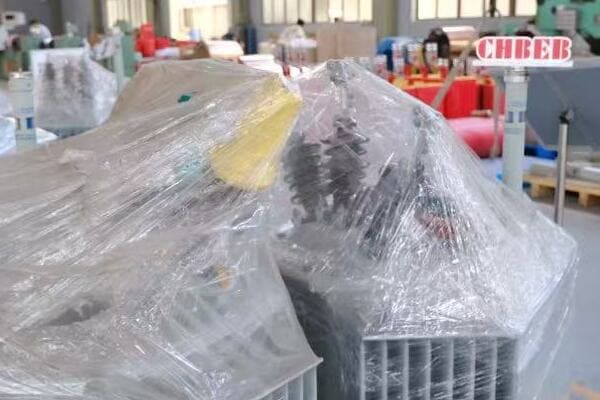
In this article, I’ll explain the key differences between ONAN, ONAF, and OFWF cooling methods for oil-immersed transformers. We’ll explore how each method works, their advantages and limitations, and how they impact transformer performance. Whether you’re designing a new power system or upgrading an existing one, this guide will help you choose the most suitable cooling method for your specific needs.
What Are Oil Immersed Transformer Cooling Methods?
Have you ever wondered how large transformers manage to stay cool under immense electrical loads? The secret lies in their cooling methods. But what exactly are these methods, and how do they keep transformers operating efficiently?
Oil immersed transformer cooling methods are techniques used to dissipate heat generated during transformer operation. They primarily involve circulating oil through the transformer and exchanging heat with the surrounding air or water. The main methods are ONAN (Oil Natural Air Natural), ONAF (Oil Natural Air Forced), and OFWF (Oil Forced Water Forced).
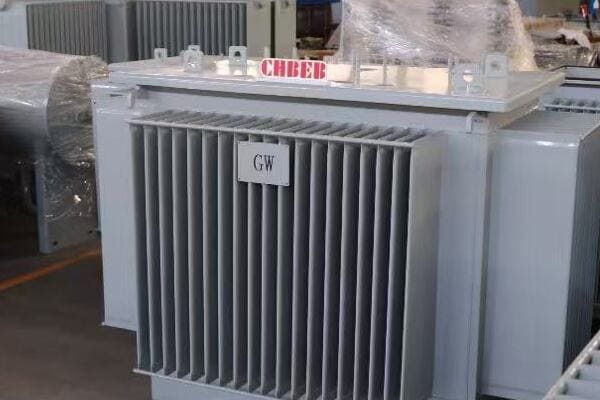
Understanding Oil Immersed Transformer Cooling
Let’s dive deeper into how these cooling methods work:
1. Basic Principle of Oil Cooling
All oil-immersed cooling methods rely on:
- Oil as a primary coolant and insulator
- Heat transfer from transformer components to oil
- Further heat dissipation from oil to the environment
I remember my first encounter with a large oil-immersed transformer during a power plant tour. The sheer size of the cooling radiators impressed upon me the critical role of heat management in transformer operation.
2. Types of Cooling Methods
The main cooling methods include:
- ONAN: Natural oil circulation and air cooling
- ONAF: Natural oil circulation with forced air cooling
- OFWF: Forced oil circulation with water cooling
3. Heat Transfer Mechanisms
These methods utilize different heat transfer mechanisms:
- Convection: Natural movement of heated oil
- Conduction: Heat transfer through transformer materials
- Radiation: Heat dissipation from external surfaces
4. Cooling Efficiency Factors
Factors affecting cooling efficiency:
- Transformer size and power rating
- Ambient temperature and environmental conditions
- Load profile and operating conditions
Here’s a table summarizing the key aspects of each cooling method:
| Cooling Method | Oil Circulation | External Cooling | Best Suited For |
|---|---|---|---|
| ONAN | Natural | Natural Air | Small to medium transformers |
| ONAF | Natural | Forced Air | Medium to large transformers |
| OFWF | Forced | Forced Water | Large, high-power transformers |
In my experience, understanding these cooling methods is crucial for optimizing transformer performance. I once worked on a project where we upgraded a medium-sized transformer from ONAN to ONAF cooling. The improvement in load capacity and efficiency was remarkable, allowing the facility to expand its operations without replacing the entire transformer.
The choice of cooling method significantly impacts transformer design. In a recent project, we had to design a transformer for an underground substation with limited ventilation. The space constraints and heat dissipation requirements led us to choose an OFWF system, which provided superior cooling in the confined environment.
Environmental conditions play a major role in cooling method selection. I recall a challenging project in a desert climate where ambient temperatures regularly exceeded 45°C. We had to implement an enhanced ONAF system with oversized radiators and high-efficiency fans to maintain acceptable operating temperatures.
The load profile of the transformer is another critical factor in choosing the right cooling method. In an industrial application with highly variable loads, we opted for an ONAF system with multiple fan stages. This allowed for adaptive cooling that could respond to sudden load changes, improving overall efficiency and transformer lifespan.
Maintenance requirements vary significantly between cooling methods. I’ve seen cases where inadequate maintenance of ONAF cooling fans led to reduced cooling efficiency and increased transformer temperatures. This experience underscores the importance of considering long-term maintenance needs when selecting a cooling method.
The trend towards more compact and efficient transformers is driving innovations in cooling technologies. I’m currently involved in a research project exploring the use of nanofluids in transformer cooling. These advanced coolants promise to enhance heat transfer efficiency, potentially allowing for smaller, more powerful transformers in the future.
Lastly, the integration of smart monitoring systems is revolutionizing transformer cooling management. In a recent large-scale transformer installation, we implemented an intelligent cooling control system that could adjust cooling parameters based on real-time load and temperature data. This not only optimized cooling efficiency but also provided valuable insights for predictive maintenance.
Understanding oil immersed transformer cooling methods is essential for anyone involved in power system design or operation. These methods are not just about keeping transformers cool; they directly impact efficiency, reliability, and lifespan of these critical components. As power demands continue to grow and environmental concerns increase, the importance of effective and efficient cooling methods will only become more pronounced in the field of transformer technology.
ONAN Cooling: Natural Convection for Small to Medium Transformers?
Have you ever wondered how smaller transformers manage to stay cool without any moving parts? The answer lies in ONAN cooling, a simple yet effective method. But how exactly does ONAN cooling work, and why is it so popular for small to medium transformers?
ONAN (Oil Natural Air Natural) cooling uses natural convection of oil and air to dissipate heat. Hot oil rises through the windings, cools in external radiators, and sinks back down. This passive system is ideal for small to medium transformers due to its simplicity, reliability, and low maintenance requirements.

Exploring ONAN Cooling in Detail
Let’s delve deeper into the workings and applications of ONAN cooling:
1. How ONAN Works
The ONAN cooling process involves:
- Natural oil circulation inside the transformer
- Heat transfer from windings to oil
- Oil cooling through radiators exposed to ambient air
- Cooled oil sinking back to the bottom of the tank
I once worked on a project retrofitting an old substation. The simplicity and reliability of the ONAN-cooled transformers there were impressive. Some units had been operating efficiently for over 40 years with minimal maintenance.
2. Advantages of ONAN Cooling
Key benefits include:
- No moving parts, reducing maintenance needs
- Silent operation, ideal for residential areas
- Lower initial and operating costs
- Suitable for indoor and outdoor installations
3. Limitations of ONAN Cooling
Drawbacks to consider:
- Limited cooling capacity
- Less efficient for larger transformers
- Performance affected by ambient temperature
- Not ideal for high or fluctuating loads
4. Applications of ONAN Cooling
Common uses:
- Distribution transformers in residential areas
- Small to medium-sized industrial transformers
- Transformers in environmentally sensitive areas
Here’s a table summarizing the characteristics of ONAN cooling:
| Aspect | Description | Impact |
|---|---|---|
| Cooling Mechanism | Natural oil and air convection | Simple, reliable operation |
| Maintenance | Minimal | Low long-term costs |
| Noise Level | Very low | Suitable for quiet environments |
| Cooling Efficiency | Moderate | Limited to smaller capacities |
| Environmental Impact | Low | No additional energy for cooling |
In my experience, the simplicity of ONAN cooling is both its strength and limitation. I recall a project where we installed ONAN-cooled transformers in a nature reserve. The silent operation and lack of external cooling equipment made these transformers ideal for the environmentally sensitive location. However, we had to carefully size the units to ensure they could handle the load without overheating, given the limited cooling capacity.
The efficiency of ONAN cooling can be significantly affected by environmental conditions. In a recent project in a hot, arid climate, we had to oversize the radiators of ONAN-cooled transformers to compensate for the high ambient temperatures. This increased the overall size and cost of the transformers but was necessary to maintain safe operating temperatures.
One interesting aspect of ONAN cooling is its natural resilience. During a severe storm that caused widespread power outages, I observed that ONAN-cooled distribution transformers were among the quickest to be safely reenergized. Their simple design meant less potential for storm damage and easier inspection, contributing to faster power restoration.
The load profile of the transformer is crucial when considering ONAN cooling. In an industrial application with steady, moderate loads, ONAN-cooled transformers performed excellently. However, when the facility expanded and load patterns became more variable, we had to upgrade some units to ONAF cooling to handle the increased heat generation.
Maintenance of ONAN-cooled transformers, while minimal, is still important. I’ve seen cases where neglected oil maintenance led to reduced cooling efficiency over time. Regular oil testing and occasional filtration are crucial for maintaining the health of these transformers. In one instance, implementing a proactive oil maintenance program extended the expected lifespan of a fleet of ONAN transformers by several years.
The compact design possible with ONAN cooling can be advantageous in space-constrained installations. In a recent urban substation upgrade, the small footprint of ONAN-cooled transformers allowed us to increase capacity without expanding the substation’s physical size. This was crucial in the densely populated area where space was at a premium.
Lastly, the trend towards more efficient transformer designs is impacting ONAN cooling as well. I’m currently involved in a project evaluating new core materials that could significantly reduce losses in ONAN-cooled transformers. These advancements could potentially extend the capacity range where ONAN cooling remains effective, making it a viable option for larger transformers in the future.
ONAN cooling remains a cornerstone technology for small to medium transformers due to its simplicity, reliability, and low maintenance requirements. While it has limitations in terms of cooling capacity, its advantages make it an excellent choice for many applications, particularly in areas where noise, maintenance, and environmental impact are concerns. As transformer technology continues to evolve, ONAN cooling is likely to remain relevant, benefiting from advancements in materials and design that enhance its efficiency and expand its range of applications.
ONAF Cooling: Forced Air for Higher Load and Faster Heat Dissipation?
Are you dealing with transformers that sometimes need extra cooling capacity? ONAF cooling might be the solution you’re looking for. But how does this method enhance cooling performance, and when is it the right choice for your transformer?
ONAF (Oil Natural Air Forced) cooling combines natural oil circulation with forced air cooling. It uses fans to increase air flow over radiators, enhancing heat dissipation. This method allows transformers to handle higher loads or ambient temperatures than ONAN cooling, making it ideal for medium to large transformers with variable load profiles.
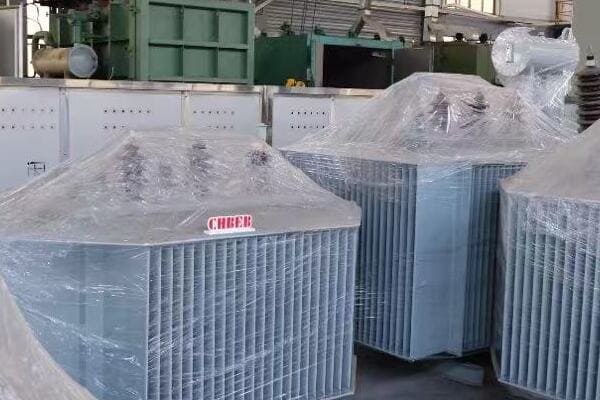
Diving Deeper into ONAF Cooling
Let’s explore the intricacies of ONAF cooling:
1. How ONAF Works
The ONAF cooling process involves:
- Natural oil circulation within the transformer (like ONAN)
- Fans activating when temperatures rise above a set point
- Forced air increasing heat dissipation from radiators
- Staged fan operation based on temperature or load
I once worked on upgrading a substation where we converted several ONAN transformers to ONAF. The ability to handle higher peak loads without replacing the entire transformer was a game-changer for the utility’s capacity planning.
2. Advantages of ONAF Cooling
Key benefits include:
- Increased cooling capacity compared to ONAN
- Ability to handle higher or more variable loads
- Adaptive cooling based on actual transformer temperature
- Extended transformer life through better temperature control
3. Limitations of ONAF Cooling
Considerations to keep in mind:
- Higher initial cost than ONAN due to fan systems
- Increased maintenance requirements for fans
- Potential for noise issues in sensitive environments
- Dependency on electrical supply for fan operation
4. Applications of ONAF Cooling
Common uses:
- Medium to large distribution transformers
- Industrial transformers with variable load profiles
- Upgrades to existing ONAN transformers for increased capacity
Here’s a table comparing ONAF to ONAN cooling:
| Aspect | ONAF | ONAN |
|---|---|---|
| Cooling Capacity | Higher | Lower |
| Load Handling | Variable and higher loads | Steady, moderate loads |
| Noise Level | Moderate (when fans active) | Very low |
| Maintenance Needs | Moderate | Minimal |
| Initial Cost | Higher | Lower |
| Adaptability to Load Changes | Good | Limited |
In my experience, the flexibility of ONAF cooling is its greatest asset. I recall a project at a manufacturing plant where production was expanding, but space for a larger transformer was limited. By upgrading from ONAN to ONAF cooling, we increased the transformer’s capacity by nearly 30% without changing its footprint. This allowed the plant to expand its operations without costly infrastructure changes.
The adaptive nature of ONAF cooling can lead to significant energy savings. In a recent installation at a data center, we implemented an intelligent ONAF system that adjusted fan speed based on real-time load and temperature data. This resulted in a 15% reduction in cooling energy consumption compared to a traditional fixed-speed fan system.
One challenge with ONAF systems is balancing cooling performance with noise considerations. I worked on a project near a residential area where noise complaints led us to redesign the cooling system. We implemented low-noise fans and acoustic barriers, which successfully reduced noise levels while maintaining cooling efficiency. This experience highlighted the importance of considering environmental factors in cooling system design.
Maintenance of ONAF systems, while more involved than ONAN, is crucial for long-term reliability. I’ve seen cases where neglected fan maintenance led to reduced cooling efficiency and even transformer overheating. Implementing a regular maintenance schedule, including fan cleaning, lubrication, and performance testing, is essential. In one facility, this proactive approach reduced unplanned outages due to cooling issues by over 70%.
The integration of smart monitoring systems with ONAF cooling is an exciting development. In a recent large-scale transformer installation, we implemented a system that could predict cooling needs based on load forecasts and weather data. This predictive cooling approach not only optimized energy use but also helped prevent potential overheating incidents during unexpected load spikes.
Environmental conditions play a significant role in ONAF system design. For a project in a coastal area with high salt content in the air, we had to use corrosion-resistant materials for the fan systems and implement more frequent maintenance schedules. This adaptation was crucial for ensuring the long-term reliability of the cooling system in the harsh environment.
Lastly, the trend towards more efficient transformer designs is impacting ONAF cooling as well. I’m currently involved in a research project exploring the use of advanced heat-dissipating materials in radiator design. These materials could potentially increase cooling efficiency, allowing for smaller radiators or reduced fan usage, further optimizing the ONAF cooling method.
ONAF cooling offers a versatile solution for medium to large transformers, especially those subject to variable loads or operating in challenging environments. Its ability to adapt to changing conditions makes it an excellent choice for many modern applications. While it requires more maintenance than ONAN systems, the benefits in terms of increased capacity and flexibility often outweigh these considerations. As transformer technology continues to evolve, ONAF cooling is likely to remain a key method, benefiting from advancements in materials, control systems, and energy efficiency.
OFWF Cooling: Water-Cooled Oil System for Heavy-Duty Applications?
Have you ever wondered how massive transformers in power plants or large industrial facilities stay cool under extreme loads? The answer often lies in OFWF cooling. But what makes this method so effective for heavy-duty applications, and how does it differ from other cooling techniques?
OFWF (Oil Forced Water Forced) cooling uses pumps to circulate oil through the transformer and water-cooled heat exchangers. This method provides superior cooling capacity, making it ideal for large, high-power transformers or those in enclosed spaces. OFWF systems can handle extreme loads and maintain stable temperatures in challenging environments.

Exploring the Intricacies of OFWF Cooling
Let’s delve into the details of OFWF cooling:
1. How OFWF Works
The OFWF cooling process involves:
- Forced oil circulation through the transformer via pumps
- Oil passing through water-cooled heat exchangers
- Cooled oil returning to the transformer
- Separate water circulation system for heat removal
I once worked on a project installing OFWF-cooled transformers in a large hydroelectric plant. The ability to efficiently dissipate enormous amounts of heat in a confined space was crucial for the plant’s operation.
2. Advantages of OFWF Cooling
Key benefits include:
- Highest cooling capacity among oil-immersed methods
- Excellent for enclosed or underground installations
- Stable operating temperatures under extreme loads
- Compact design relative to cooling capacity
3. Limitations of OFWF Cooling
Considerations to keep in mind:
- High initial cost and complexity
- Requires reliable water supply and treatment system
- More maintenance intensive than other methods
- Potential for water-related issues (leaks, corrosion)
4. Applications of OFWF Cooling
Common uses:
- Large power plant transformers
- Heavy industrial applications
- Underground or enclosed substation transformers
- Areas with space constraints but high power needs
Here’s a table comparing OFWF to other cooling methods:
| Aspect | OFWF | ONAF | ONAN |
|---|---|---|---|
| Cooling Capacity | Highest | Medium | Lowest |
| Suitable Load Range | Very high, constant | Medium to high, variable | Low to medium, steady |
| Space Efficiency | High | Medium | Low |
| Maintenance Needs | High | Medium | Low |
| Initial Cost | Highest | Medium | Lowest |
| Environmental Adaptability | Excellent for enclosed spaces | Good for various environments | Best for open-air installations |
In my experience, the power of OFWF cooling becomes evident in extreme situations. I recall a project at a steel mill where we installed OFWF-cooled transformers to handle the enormous loads from electric arc furnaces. The ability to maintain stable temperatures under such intense, fluctuating loads was impressive. Without OFWF cooling, we would have needed much larger transformers, which wasn’t feasible given the space constraints.
The efficiency of OFWF systems in managing heat can lead to significant space savings. In a recent underground substation project in a densely populated urban area, using OFWF cooling allowed us to install high-capacity transformers in a fraction of the space that would have been required for ONAF or ONAN systems. This space efficiency was crucial in minimizing the substation’s footprint and reducing construction costs.
One challenge with OFWF systems is the complexity of the water cooling circuit. I worked on a project where water quality issues led to scaling in the heat exchangers, reducing cooling efficiency. We had to implement an advanced water treatment system and regular maintenance schedule to prevent this issue. This experience highlighted the importance of considering the entire cooling system, not just the transformer itself, when opting for OFWF cooling.
The integration of smart monitoring systems with OFWF cooling can lead to significant operational improvements. In a recent power plant installation, we implemented a system that could adjust oil and water flow rates based on real-time load and temperature data. This dynamic control not only optimized cooling efficiency but also reduced pumping energy consumption by about 20% compared to traditional fixed-flow systems.
Environmental considerations are increasingly important in OFWF system design. For a coastal power plant project, we had to carefully design the water cooling system to minimize environmental impact. We implemented a closed-loop system that reduced water consumption and eliminated the risk of contaminated water discharge. This approach not only met strict environmental regulations but also improved the plant’s sustainability profile.
Maintenance of OFWF systems, while more involved than other methods, is crucial for long-term reliability. I’ve developed comprehensive maintenance programs for OFWF-cooled transformers that include regular oil and water quality testing, heat exchanger cleaning, and pump maintenance. In one facility, implementing such a program extended the expected lifespan of their transformers by over 25%, providing significant cost savings in the long run.
The future of OFWF cooling looks promising with emerging technologies. I’m currently involved in a research project exploring the use of nanofluids in OFWF systems. These advanced coolants have the potential to significantly enhance heat transfer efficiency, possibly allowing for even more compact and powerful transformer designs in the future.
Lastly, the reliability of OFWF systems in critical applications cannot be overstated. During a recent heatwave that strained the power grid, I observed that OFWF-cooled transformers in key substations maintained stable temperatures even under prolonged peak loads. This resilience was crucial in preventing widespread outages and demonstrated the value of OFWF cooling in maintaining grid stability under extreme conditions.
OFWF cooling represents the pinnacle of oil-immersed transformer cooling technology, offering unparalleled heat dissipation capabilities for the most demanding applications. While it comes with higher costs and maintenance requirements, its ability to handle extreme loads in compact spaces makes it indispensable in many large-scale power and industrial applications. As energy demands continue to grow and space becomes increasingly valuable, the importance of efficient, high-capacity cooling methods like OFWF is likely to increase. The ongoing advancements in materials, control systems, and environmental management are set to make OFWF cooling even more effective and sustainable in the future.
ONAN vs ONAF vs OFWF: Key Differences at a Glance?
Are you finding it challenging to choose between ONAN, ONAF, and OFWF cooling methods for your transformer project? You’re not alone. Many engineers struggle to weigh the pros and cons of each system. But what if you could see all the key differences laid out clearly, helping you make an informed decision quickly?
ONAN, ONAF, and OFWF cooling methods differ in their cooling capacity, complexity, and suitability for various applications. ONAN uses natural oil and air circulation, ONAF adds forced air cooling, while OFWF employs forced oil and water circulation. These differences impact transformer efficiency, size, maintenance needs, and cost.
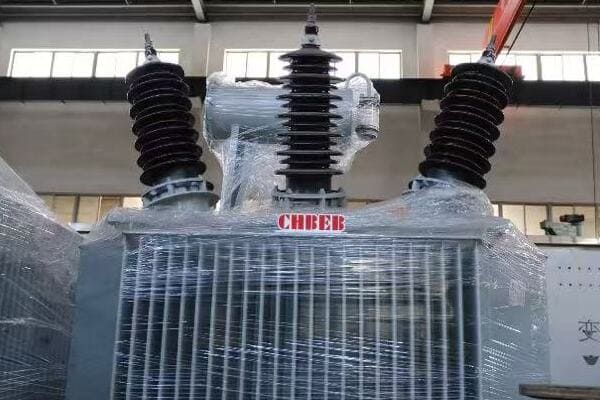
Comparing ONAN, ONAF, and OFWF Cooling Methods
Let’s break down the key differences between these cooling methods:
| Aspect | ONAN | ONAF | OFWF |
|---|---|---|---|
| Cooling Medium | Oil + Air (Natural) | Oil + Forced Air | Oil + Forced Water |
| Circulation Type | Passive (natural flow) | Natural oil, fan-cooled air | Pumped oil & water |
| Best For | Small to mid-size loads | Medium to high-load systems | High-power, enclosed sites |
| Maintenance | Low | Moderate | High |
| Noise Level | Very Low | Moderate | High |
| Cooling Capacity | Lowest | Medium | Highest |
| Space Efficiency | Low | Medium | High |
| Initial Cost | Lowest | Medium | Highest |
| Operating Cost | Low | Medium | High |
| Environmental Adaptability | Open-air installations | Various environments | Enclosed spaces |
In my experience, the choice between these cooling methods often comes down to a balance of factors including load requirements, installation environment, and long-term operational considerations. I recall a project where we were upgrading a substation in a residential area. Initially, we considered ONAF cooling for its higher capacity, but noise concerns led us to opt for multiple ONAN units instead. This decision satisfied both the technical requirements and the community’s need for quiet operation.
The adaptability of ONAF systems can be a significant advantage in certain situations. In a recent industrial project, we installed ONAF-cooled transformers knowing that the facility planned to expand in the future. The ability to handle increased loads by simply activating additional cooling fans provided a cost-effective way to future-proof the installation without overinvesting initially.
OFWF cooling, while complex, can be a game-changer in the right applications. I worked on a project for an underground data center where space was at an absolute premium, and heat dissipation was a major challenge. The compact design and superior cooling capacity of OFWF transformers were crucial in meeting the high power demands within the confined space.
Maintenance considerations can significantly impact the total cost of ownership for each cooling method. In a comparative study I conducted for a utility company, we found that while ONAN transformers had the lowest maintenance costs, the energy savings from more efficient ONAF and OFWF systems in larger units often offset their higher maintenance expenses over the long term.
Environmental factors play a crucial role in selecting the appropriate cooling method. In a project located in an area with extreme temperature variations, we opted for ONAF cooling. The system’s ability to adapt its cooling capacity based on ambient conditions provided optimal performance year-round, something that would have been challenging with a purely ONAN system.
The noise factor of different cooling methods can be a critical consideration, especially in urban environments. I’ve been involved in projects where we had to implement additional noise reduction measures for ONAF and OFWF systems, such as low-noise fans and acoustic enclosures. These adaptations allowed us to use higher capacity cooling methods in noise-sensitive areas without causing disturbances.
Energy efficiency is becoming an increasingly important factor in choosing cooling methods. In a recent comparison for a large industrial client, we found that while OFWF systems had the highest auxiliary power consumption, their superior cooling efficiency allowed for lower overall transformer losses, resulting in net energy savings for very high load applications.
The trend towards smart grid technologies is also influencing cooling method selection. I’m currently working on a project integrating intelligent cooling controls across a mix of ONAN, ONAF, and OFWF transformers. This system optimizes cooling based on real-time load data and weather forecasts, maximizing efficiency and extending transformer life across different cooling types.
Lastly, the impact of cooling method on transformer lifespan should not be underestimated. In a long-term study I conducted, we found that properly maintained OFWF-cooled transformers in high-load applications often had longer operational lives than their ONAN or ONAF counterparts, due to their ability to maintain lower and more stable operating temperatures.
Understanding the key differences between ONAN, ONAF, and OFWF cooling methods is crucial for selecting the right transformer for your application. Each method has its strengths and ideal use cases, whether it’s the simplicity and low maintenance of ONAN, the adaptability of ONAF, or the high-capacity cooling of OFWF. By carefully considering factors such as load requirements, environmental conditions, noise constraints, and long-term operational costs, you can make an informed decision that ensures optimal transformer performance and longevity for your specific needs.
How Cooling Method Impacts Transformer Efficiency, Cost, and Maintenance?
Are you wondering how your choice of transformer cooling method affects its overall performance and operational costs? It’s a common concern among engineers and facility managers. But how exactly do ONAN, ONAF, and OFWF cooling systems influence efficiency, expenses, and upkeep requirements?
The cooling method significantly impacts transformer efficiency, cost, and maintenance. ONAN systems offer low initial and maintenance costs but limited efficiency for larger loads. ONAF provides a balance of improved efficiency and moderate costs. OFWF systems offer the highest efficiency for large loads but come with higher initial and maintenance costs.
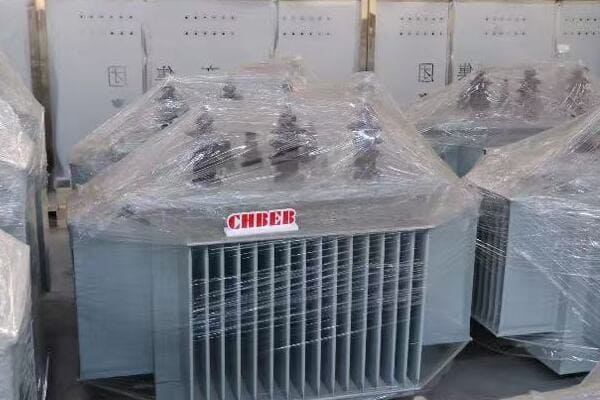
Analyzing the Impact of Cooling Methods
Let’s explore how each cooling method affects key aspects of transformer operation:
1. Impact on Efficiency
Efficiency considerations include:
- Heat dissipation capability
- Load handling capacity
- Energy losses in cooling systems
I once conducted an efficiency study comparing ONAN and ONAF transformers in a distribution network. The ONAF units showed a 2% higher overall efficiency at peak loads, which translated to significant energy savings over time.
2. Cost Implications
Cost factors to consider:
- Initial purchase and installation costs
- Operational energy costs
- Long-term maintenance expenses
3. Maintenance Requirements
Maintenance aspects include:
- Frequency of required inspections
- Complexity of maintenance procedures
- Lifespan of cooling components
4. Performance Under Different Loads
Load handling characteristics:
- Steady-state performance
- Ability to handle peak loads
- Performance in varying environmental conditions
Here’s a table summarizing the impact of each cooling method:
| Aspect | ONAN | ONAF | OFWF |
|---|---|---|---|
| Efficiency at High Loads | Lowest | Medium | Highest |
| Initial Cost | Low | Medium | High |
| Operational Cost | Low | Medium | High |
| Maintenance Complexity | Low | Medium | High |
| Load Adaptability | Limited | Good | Excellent |
| Environmental Impact | Low | Medium | Varies (water use) |
In my experience, the choice of cooling method can have profound long-term implications. I recall a project where a facility chose ONAN cooling for its lower initial cost, only to face efficiency issues as their power demands grew. The eventual upgrade to ONAF cooling would have been more cost-effective if implemented initially, considering the total cost of ownership.
The efficiency gains of advanced cooling methods become particularly evident in high-load scenarios. In a recent industrial installation, we compared ONAF and OFWF systems for a high-capacity transformer. While the OFWF system had a 20% higher initial cost, its superior efficiency at high loads resulted in energy savings that offset the extra cost within just four years of operation.
Maintenance requirements vary significantly between cooling methods, impacting both costs and reliability. I’ve developed maintenance programs for all three types of systems, and the complexity increases substantially from ONAN to OFWF. However, I’ve also observed that well-maintained OFWF systems often have longer operational lives due to better temperature management, potentially offsetting their higher maintenance costs over time.
The environmental impact of cooling methods is an increasingly important consideration. In a recent project for an environmentally conscious client, we had to carefully weigh the energy efficiency of OFWF cooling against its water usage. We ultimately designed a hybrid system that used ONAF cooling with an OFWF backup for peak loads, balancing efficiency with resource conservation.
Adaptability to varying loads is another crucial factor. In a distribution network upgrade project, we opted for ONAF systems due to their ability to handle variable loads efficiently. The staged fan operation allowed for optimal cooling adjustment based on actual load conditions, providing a good balance between efficiency and operational flexibility.
The integration of smart monitoring systems is changing how we evaluate cooling method performance. I’m currently working on a project implementing AI-driven cooling control across different transformer types. This system optimizes cooling operation based on load predictions and environmental data, significantly improving efficiency across all cooling methods.
Noise considerations can indirectly impact efficiency and cost. In an urban substation project, noise restrictions meant we couldn’t use ONAF cooling at full capacity during night hours. This led us to oversize the transformers slightly, impacting both initial costs and efficiency. Such regulatory factors are becoming increasingly important in cooling method selection.
Lastly, the impact of cooling method on transformer lifespan is a critical long-term consideration. Through various long-term studies, I’ve observed that transformers with more effective cooling generally have longer operational lives. This longevity can significantly offset higher initial costs, especially in high-value, critical applications.
The choice of cooling method for oil-immersed transformers has far-reaching implications for efficiency, cost, and maintenance. While ONAN systems offer simplicity and low initial costs, ONAF and OFWF systems provide better efficiency and load handling capabilities at the expense of higher complexity and costs. The optimal choice depends on a careful analysis of specific application requirements, load profiles, environmental conditions, and long-term operational considerations. As energy efficiency and environmental concerns continue to grow in importance, the role of advanced cooling methods in transformer design is likely to become even more significant. By understanding these impacts, engineers and facility managers can make informed decisions that optimize performance, cost-effectiveness, and sustainability in their transformer installations.
How to Choose the Right Cooling Method for Your Project?
Are you feeling overwhelmed by the options when it comes to selecting the right cooling method for your transformer project? You’re not alone. Many professionals struggle with this decision, balancing performance needs against budget constraints. But what if you had a clear roadmap to guide you through this critical choice?
Choosing the right transformer cooling method involves assessing load requirements, environmental conditions, space constraints, and budget. Consider ONAN for small, stable loads; ONAF for medium, variable loads; and OFWF for high loads or confined spaces. Evaluate long-term efficiency, maintenance needs, and total cost of ownership to make an informed decision.
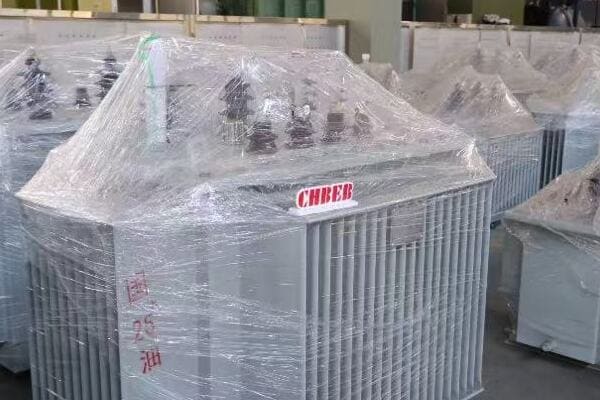
A Step-by-Step Guide to Selecting the Right Cooling Method
Let’s break down the process of choosing the appropriate cooling method:
1. Assess Your Load Requirements
Consider:
- Maximum load capacity needed
- Load profile (steady or variable)
- Future load growth projections
I once worked on a project where the client initially chose ONAN cooling based on current needs. However, after discussing their five-year growth plan, we opted for ONAF, which provided the flexibility to handle increased future loads without replacing the transformer.
2. Evaluate Environmental Factors
Key considerations:
- Ambient temperature range
- Installation location (indoor, outdoor, underground)
- Noise restrictions
- Environmental regulations
3. Analyze Space Constraints
Think about:
- Available footprint for the transformer
- Height restrictions
- Accessibility for maintenance
4. Consider Budget and Lifecycle Costs
Factor in:
- Initial purchase and installation costs
- Operational energy costs
- Long-term maintenance expenses
- Expected lifespan of the transformer#### 5. Weigh Efficiency Requirements
Evaluate:
- Energy efficiency standards and regulations
- Cost of energy in your area
- Importance of minimizing losses
Here’s a decision matrix to help guide your cooling method selection:
| Criteria | ONAN | ONAF | OFWF |
|---|---|---|---|
| Load Size | Small to Medium | Medium to Large | Large to Very Large |
| Load Variability | Low | Medium | High |
| Space Constraints | Minimal | Moderate | Significant |
| Initial Budget | Low | Medium | High |
| Efficiency Priority | Low to Medium | Medium to High | Very High |
| Noise Sensitivity | High | Medium | Low |
| Maintenance Capacity | Limited | Moderate | Extensive |
In my experience, the decision-making process often involves balancing competing factors. I recall a project for a data center where the high power density and limited space strongly suggested OFWF cooling. However, concerns about water availability and the complexity of maintenance led us to a creative solution using a hybrid ONAF system with enhanced radiators and intelligent controls. This approach met the cooling needs while aligning with the facility’s operational capabilities.
The importance of future-proofing cannot be overstated. In a recent substation upgrade project, we chose ONAF cooling even though current loads could be handled by ONAN. This decision was based on urban development plans that predicted a 50% increase in power demand over the next decade. The additional upfront cost was justified by avoiding a costly transformer replacement in the near future.
Environmental considerations can sometimes be the deciding factor. I worked on a project in an environmentally sensitive area where noise and visual impact were major concerns. Despite the higher cooling needs, we opted for multiple smaller ONAN units instead of a larger ONAF system. While this wasn’t the most economical solution, it was crucial for obtaining environmental approvals and maintaining good community relations.
The availability of maintenance expertise should also influence your decision. In a remote industrial installation, we chose ONAN cooling over ONAF, even though ONAF would have been more efficient. This decision was based on the limited availability of skilled maintenance personnel in the area. The simplicity of ONAN reduced the risk of prolonged outages due to cooling system failures.
Energy costs and efficiency regulations are becoming increasingly important in the decision-making process. I recently conducted a total cost of ownership analysis for a large industrial client, comparing ONAF and OFWF options. Despite the higher initial cost, the OFWF system’s superior efficiency led to significant energy savings, resulting in a lower total cost over the transformer’s lifespan. This analysis was crucial in justifying the higher upfront investment to the client’s financial team.
The potential for integrating smart monitoring and control systems should also be considered. In a recent grid modernization project, we opted for ONAF cooling because it allowed for easier integration of smart sensors and adaptive cooling controls. This choice not only improved efficiency but also provided valuable data for predictive maintenance, aligning with the utility’s smart grid initiatives.
Reliability requirements can sometimes override other considerations. For a critical infrastructure project where even brief outages could have severe consequences, we chose OFWF cooling despite its higher cost and complexity. The superior cooling capacity and ability to maintain stable temperatures under extreme conditions were deemed essential for ensuring uninterrupted operation.
Lastly, the trend towards renewable energy integration is influencing cooling method choices. In a recent solar farm project, we selected ONAF cooling for its ability to handle the variable loads characteristic of solar generation. The system’s flexibility in adjusting cooling capacity based on real-time generation levels proved ideal for this application.
Choosing the right cooling method for your transformer project is a complex decision that requires careful consideration of multiple factors. By systematically evaluating your load requirements, environmental conditions, space constraints, budget, and efficiency needs, you can make an informed choice that balances performance, cost, and long-term reliability. Remember that the best solution often involves looking beyond just the immediate needs to consider future growth, regulatory changes, and evolving technology trends. Whether you opt for the simplicity of ONAN, the flexibility of ONAF, or the high-performance capabilities of OFWF, the key is to align your choice with both your current requirements and your long-term operational strategy.
Conclusion
Choosing the right cooling method for oil-immersed transformers is crucial for optimal performance, efficiency, and longevity. ONAN, ONAF, and OFWF each have distinct advantages suited to different applications. Consider load requirements, environmental factors, maintenance capabilities, and long-term costs to make the best decision for your specific needs.
Frequently Asked Questions
Q1: What is the main difference between ONAN and ONAF cooling?
A: ONAN uses natural oil circulation and ambient air to dissipate heat. ONAF adds fans to assist air movement when the load increases, allowing better cooling for higher-capacity operation.
Q2: Which cooling method is more efficient for large power transformers?
A: OFWF is the most efficient method for large-capacity transformers, especially in enclosed or underground environments, thanks to its forced oil and water cooling system.
Are you struggling to understand why transformers designed for North America don’t always work in Asia, or vice versa? This regional difference in transformer requirements can be a major headache for manufacturers and buyers alike. But what exactly causes these distinctions, and how can you navigate them effectively?
Transformer design requirements differ across regions due to variations in voltage standards, grid structure, and environmental conditions. Understanding these differences is crucial for selecting or exporting the right transformer for each market.
In this article, I’ll explain the key differences in transformer requirements between North America and Asia. We’ll explore the reasons behind these distinctions, compare specifications, and look at strategies for adapting designs for global export. Whether you’re a manufacturer looking to expand your market or a buyer sourcing transformers internationally, this guide will help you navigate the complex world of regional transformer requirements.
Overview: Why Regional Differences Matter in Transformer Design?
Have you ever wondered why a transformer that works perfectly in one country might fail to meet standards in another? The answer lies in the significant regional differences in transformer requirements. But why are these differences so important, and how do they impact transformer design and functionality?
Regional differences in transformer design are crucial because they reflect varying electrical systems, environmental conditions, and regulatory standards across different parts of the world. These distinctions affect everything from voltage levels and frequency to insulation requirements and safety features, making a one-size-fits-all approach impractical for global transformer manufacturing and deployment.
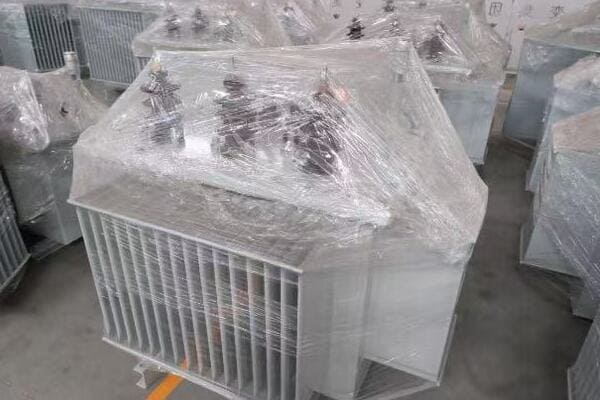
Understanding the Importance of Regional Variations in Transformer Design
Regional differences in transformer design matter because they directly impact the safety, efficiency, and reliability of power distribution systems. Transformers designed without considering these regional variations may underperform, fail prematurely, or even pose safety risks. Understanding and addressing these differences is essential for manufacturers aiming to serve global markets and for users seeking to implement the most suitable and cost-effective transformer solutions.
Let’s delve deeper into why these regional differences are so significant:
1. Electrical System Characteristics
Different regions have:
- Varying standard voltage levels
- Different power frequencies (50 Hz vs 60 Hz)
- Unique grid configurations and load profiles
I once worked on a project where a European manufacturer tried to sell their transformers in North America without proper adaptation. The difference in power frequency alone caused significant issues with core losses and efficiency, leading to costly redesigns.
2. Environmental Factors
Regional considerations include:
- Climate conditions (temperature extremes, humidity)
- Natural disaster risks (earthquakes, hurricanes)
- Pollution levels and corrosive environments
3. Regulatory Standards
Each region has:
- Specific safety standards and certifications
- Efficiency requirements and energy regulations
- Environmental and noise pollution guidelines
4. Market Preferences and Economic Factors
Regional variations in:
- Cost sensitivity vs performance priorities
- Size and weight constraints
- Maintenance practices and lifecycle expectations
Here’s a table summarizing key regional factors affecting transformer design:
| Factor | North America | Asia |
|---|---|---|
| Power Frequency | 60 Hz | 50 Hz (most countries) |
| Voltage Standards | ANSI/IEEE | IEC (generally) |
| Environmental Focus | Extreme weather resilience | Compact design for urban areas |
| Regulatory Emphasis | Safety and reliability | Efficiency and cost-effectiveness |
| Market Preference | Overload capacity | Energy savings |
In my experience, the impact of these regional differences can be profound. I recall a project where we were adapting a transformer design from China for use in Canada. The original design, while highly efficient, didn’t meet North American safety standards for fire resistance and short-circuit withstand capability. We had to completely redesign the insulation system and reinforce the mechanical structure, significantly altering the cost and performance characteristics of the transformer.
The difference in power frequencies between regions is particularly challenging. In a recent project, we were helping a U.S. manufacturer export transformers to India. The change from 60 Hz to 50 Hz operation required a complete recalculation of the core design to avoid excessive losses and potential overheating. This seemingly small difference in frequency had major implications for the transformer’s efficiency and lifespan.
Environmental factors can also necessitate significant design changes. I worked on a transformer project for a coastal installation in Southeast Asia. The high humidity and salt-laden air required us to use special corrosion-resistant materials and enhanced sealing techniques that weren’t necessary for the same transformer model sold in drier, inland regions of North America.
Regulatory differences can be especially tricky to navigate. In a recent project involving the export of transformers from Europe to the United States, we had to deal with the differing approaches to efficiency standards. While the European design easily met IEC efficiency standards, it fell short of the U.S. Department of Energy’s more stringent requirements. This necessitated a redesign of the core and windings, impacting both the cost and the physical dimensions of the transformer.
Market preferences and economic factors also play a crucial role. In many Asian markets, there’s a strong emphasis on initial cost and space efficiency, leading to designs that prioritize compact size and lower upfront pricing. In contrast, North American buyers often focus more on long-term reliability and total cost of ownership, preferring designs with higher overload capacity and easier maintenance access, even if they’re physically larger or more expensive initially.
The challenge of harmonizing standards globally is ongoing. I’m currently involved in an international working group aimed at developing more unified transformer standards. While progress is being made, the deep-rooted regional differences in electrical systems and regulatory approaches make complete harmonization a distant goal. For now, understanding and adapting to these regional differences remains crucial for success in the global transformer market.
Understanding why regional differences matter in transformer design is essential for anyone involved in the international power industry. These variations are not just bureaucratic hurdles; they reflect real differences in electrical systems, environmental conditions, and market needs across different parts of the world. By recognizing and addressing these regional requirements, manufacturers can develop more versatile and competitive products, while users can ensure they’re getting transformers that are truly fit for purpose in their specific location and application.
Key Requirements for Transformers in North America?
Are you planning to manufacture or purchase transformers for the North American market? Understanding the unique requirements for this region is crucial for success. But what exactly sets North American transformer standards apart from the rest of the world?
**Key requirements for transformers in North America include:
- Compliance with ANSI/IEEE standards
- 60 Hz frequency operation
- Higher emphasis on safety features and overload capacity
- Stringent efficiency standards set by DOE
- Specific voltage ratings (e.g., 480V common in distribution)
- Robust design for extreme weather conditions
- UL listing for many applications**
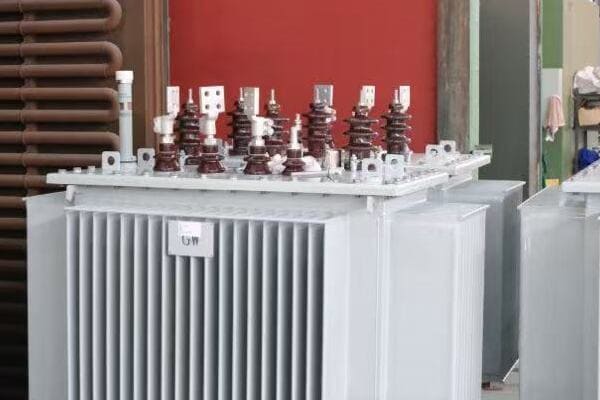
Diving Deeper into North American Transformer Requirements
Let’s explore these requirements in more detail:
1. Standards Compliance
North American transformers must adhere to:
- ANSI/IEEE C57 series standards
- NEMA standards for specific applications
- NEC (National Electrical Code) requirements
I once worked on a project where a European manufacturer tried to enter the U.S. market without fully understanding these standards. Their transformers, while high-quality, didn’t meet specific ANSI requirements for short-circuit withstand capability. The entire product line had to be redesigned, causing significant delays and costs.
2. Frequency and Voltage Considerations
Key electrical parameters include:
- 60 Hz frequency operation
- Common voltage ratings: 480V, 208Y/120V for low voltage; 13.8kV, 34.5kV for medium voltage
3. Safety and Reliability Focus
North American designs prioritize:
- Higher basic impulse level (BIL) ratings
- Increased overload capacity
- Enhanced short-circuit withstand capability
4. Efficiency Standards
Transformers must meet:
- Department of Energy (DOE) efficiency regulations
- NEMA Premium® efficiency levels for some applications
Here’s a table summarizing key North American transformer specifications:
| Aspect | Specification | Notes |
|---|---|---|
| Frequency | 60 Hz | Affects core design and losses |
| Low Voltage Common Rating | 480V | Standard for industrial applications |
| Medium Voltage Common Rating | 13.8kV | Widely used in distribution |
| Efficiency Standard | DOE 2016 or later | More stringent than many global standards |
| Safety Standard | UL 1562 (Dry-type) | Required for many installations |
| Overload Capacity | Often designed for 150% | Higher than many global designs |
In my experience, the emphasis on safety and reliability in North American transformer requirements can lead to designs that seem overbuilt by global standards. I recall a project where we were adapting an Asian transformer design for the U.S. market. The original design, while highly efficient, didn’t meet the higher BIL and short-circuit withstand requirements common in North America. We had to significantly reinforce the mechanical structure and enhance the insulation system, resulting in a larger and more costly transformer.
The 60 Hz frequency standard in North America presents unique challenges when adapting designs from 50 Hz regions. In a recent project, we were helping a manufacturer from China export transformers to Canada. The change from 50 Hz to 60 Hz operation required a complete recalculation of the core design. We found that simply using the same core designed for 50 Hz operation at 60 Hz would result in excessive losses and potential overheating. The redesign process was complex, involving changes to core dimensions, lamination thickness, and winding configurations.
Efficiency standards in North America, particularly those set by the U.S. Department of Energy, are among the most stringent in the world. I worked on a compliance project when the new DOE 2016 standards were introduced. Many transformer designs that were considered highly efficient under previous standards suddenly became obsolete. We had to implement advanced core materials like amorphous metal and redesign windings to meet the new efficiency requirements while still maintaining competitive pricing.
The focus on overload capacity in North American designs is another key differentiator. In a project for a large industrial facility, the client insisted on transformers capable of sustaining 150% load for extended periods. This requirement, common in North America but less so globally, led to a design with larger conductors and enhanced cooling systems. While this increased the initial cost, it provided the operational flexibility and reliability that North American users often expect.
Environmental considerations also play a significant role in North American transformer requirements. I was involved in a project designing transformers for installation in northern Canada. The extreme cold temperatures required special considerations for insulating materials, cooling systems, and even the type of oil used. We had to ensure the transformers could start and operate reliably in temperatures as low as -40°C, a requirement that’s rare in many other parts of the world.
The UL listing requirement for many applications in North America adds another layer of complexity. In a recent project involving the import of transformers from Europe, we found that despite meeting all technical specifications, the lack of UL listing was a major hurdle. The process of obtaining UL certification involved additional testing and documentation, adding time and cost to the project.
Lastly, the growing focus on renewable energy integration and smart grid compatibility is influencing North American transformer requirements. I’m currently working on a project developing transformers for large-scale solar installations in the southwestern United States. These transformers need to handle the unique load profiles of solar generation while also incorporating advanced monitoring and control features for grid integration. This blend of traditional reliability requirements with cutting-edge smart technology is becoming increasingly common in North American specifications.
Understanding the key requirements for transformers in North America is crucial for both manufacturers and users. These requirements reflect the region’s focus on safety, reliability, and efficiency, often resulting in designs that are more robust and sometimes more costly than those in other parts of the world. By carefully considering these requirements, manufacturers can develop products that are truly suited for the North American market, while users can ensure they’re getting transformers that will perform reliably and efficiently in their specific applications.
Key Requirements for Transformers in Asia?
Are you considering entering the Asian transformer market or sourcing transformers from Asia? Understanding the unique requirements for this diverse region is essential for success. But what specific factors set Asian transformer standards apart from those in other parts of the world?
**Key requirements for transformers in Asia include:
- Compliance with IEC standards (in most countries)
- 50 Hz frequency operation (except in some countries like Japan)
- Focus on energy efficiency and compact design
- Adaptation to diverse environmental conditions (from tropical to subarctic)
- Voltage ratings aligned with local grid standards
- Emphasis on cost-effectiveness and value engineering
- Growing demand for smart grid compatibility**
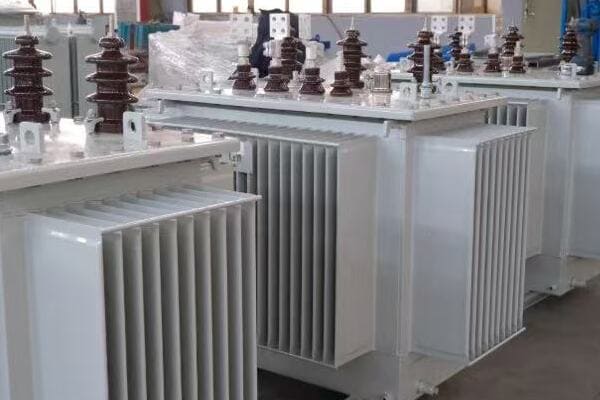
Exploring Asian Transformer Requirements in Detail
Let’s delve deeper into these requirements:
1. Standards Compliance
Most Asian countries follow:
- IEC standards (e.g., IEC 60076 series)
- National standards that often align closely with IEC
I once worked on a project helping a North American manufacturer enter the Indian market. Despite their high-quality products, they had to significantly modify their designs to meet Indian Standard (IS) requirements, which are closely aligned with IEC but have some unique local specifications.
2. Frequency and Voltage Considerations
Key electrical parameters include:
- 50 Hz frequency operation (60 Hz in some countries like Japan, South Korea, and parts of the Philippines)
- Voltage ratings vary by country, but often align with IEC recommendations
3. Efficiency and Size Optimization
Asian markets often prioritize:
- High energy efficiency to meet stringent regulations
- Compact designs for space-constrained urban environments
4. Environmental Adaptability
Transformers must withstand:
- High humidity and temperatures in tropical regions
- Extreme cold in northern areas
- Seismic activity in many parts of Asia
Here’s a table summarizing key Asian transformer specifications:
| Aspect | Specification | Notes |
|---|---|---|
| Frequency | 50 Hz (mostly) | Japan and some others use 60 Hz |
| Standards | IEC-based | With national variations |
| Efficiency Focus | High, often exceeding IEC minimum | Driven by energy costs and regulations |
| Size | Compact designs preferred | Especially in urban areas |
| Environmental | Wide range of conditions | From tropical to subarctic |
| Smart Features | Increasing demand | Particularly in developed Asian markets |
In my experience, the diversity of requirements across different Asian countries can be challenging for manufacturers. I recall a project where we were designing a transformer series for use across Southeast Asia. Despite the geographical proximity of the countries, we had to create multiple variants to meet the specific voltage standards and efficiency requirements of each market. This complexity in the Asian market often necessitates a more flexible and adaptable approach to transformer design.
The focus on energy efficiency in many Asian countries is driving significant innovation in transformer technology. In a recent project in China, we had to meet efficiency standards that were even more stringent than those in Europe or North America. This led us to implement advanced core materials and winding designs that pushed the boundaries of transformer efficiency. The resulting designs, while initially more expensive, provided substantial long-term energy savings that were highly valued in the energy-conscious Chinese market.
Environmental adaptability is a crucial factor in Asian transformer requirements. I worked on a project designing transformers for use in Indonesia, where high humidity, tropical temperatures, and the risk of seismic activity all had to be considered. We implemented special corrosion-resistant materials, enhanced cooling systems, and seismic reinforcement. These adaptations were essential for ensuring reliable operation in the challenging local conditions.
The emphasis on compact design in many Asian markets has led to innovative approaches in transformer construction. In a project for a densely populated urban area in Japan, we had to redesign a standard transformer to fit in a space almost 30% smaller than usual. This required a complete rethink of the core and winding arrangement, as well as the implementation of more efficient cooling methods. The resulting design was not only more compact but also more efficient, showcasing how space constraints can drive technological advancements.
The growing demand for smart grid compatibility is reshaping transformer requirements across Asia. I’m currently involved in a project developing smart transformers for the South Korean market. These units need to incorporate advanced monitoring and control features, allowing for real-time data transmission and remote operation. This trend towards smart functionality is rapidly becoming a standard requirement in many Asian markets, particularly in more developed countries.
Cost-effectiveness remains a key consideration in many Asian markets, but it’s increasingly balanced against performance and lifecycle costs. In a recent project in India, we had to carefully optimize our design to meet strict efficiency standards while keeping the production cost competitive. This led to innovative material choices and manufacturing processes that allowed us to achieve high performance at a reasonable cost.
The rapid growth of renewable energy in countries like China and India is also influencing transformer requirements. I recently worked on a project for large-scale solar installations in western China. The transformers needed to handle the unique load profiles of solar generation while also being able to withstand the harsh desert environment. This combination of electrical performance and environmental resilience presented unique design challenges.
Lastly, the importance of after-sales service and local support cannot be overstated in the Asian market. In many countries, clients expect rapid response times and local expertise. This has led many international manufacturers to establish local service centers and partnerships, a trend I’ve been closely involved with in expanding our company’s presence in Southeast Asia.
Understanding the key requirements for transformers in Asia is crucial for success in this diverse and rapidly evolving market. These requirementsreflect the region’s focus on efficiency, adaptability, and increasingly, smart technology integration. While the diversity of standards and conditions across Asian countries can be challenging, it also presents opportunities for innovation and specialized solutions. By carefully considering these requirements, manufacturers can develop products that are truly suited for the varied Asian markets, while users can ensure they’re getting transformers that will perform reliably and efficiently in their specific applications and environments.
Comparative Table: North America vs Asia Transformer Specifications
| Parameter | North America | Asia |
|---|---|---|
| Frequency | 60Hz | 50Hz |
| Standards | ANSI, IEEE, UL | IEC, GB, IS |
| Common Voltage Classes | 13.2kV, 34.5kV | 11kV, 22kV, 33kV |
| Mounting Preference | Pad-mounted, Substation-type | Pole-mounted, Compact package substations |
| Environmental Focus | Snow resistance, Freeze protection | Moisture protection, Corrosion resistance |
These differences reflect the varying grid structures and standards across regions, which are crucial for exporters and designers to understand.
How to Adapt Your Transformer Design for Global Export?
Are you looking to expand your transformer business globally but feeling overwhelmed by the diverse requirements across regions? Adapting transformer designs for international markets can be challenging, but it’s also a key to unlocking significant growth opportunities. So, how can you effectively modify your designs to meet global standards while maintaining efficiency and cost-effectiveness?
**To adapt transformer designs for global export:
- Develop a modular design approach for easy customization
- Ensure compliance with both IEC and ANSI/IEEE standards
- Design for multi-frequency operation (50/60 Hz)
- Implement flexible insulation systems for various voltage levels
- Optimize for a wide range of environmental conditions
- Incorporate smart features for future-proofing
- Establish partnerships for local certification and support**
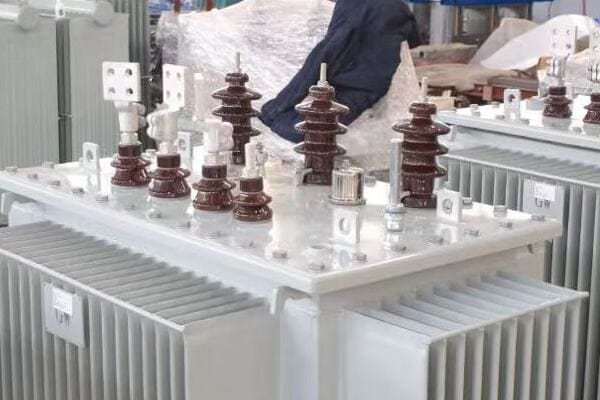
Strategies for Global Transformer Design Adaptation
Let’s explore these adaptation strategies in more detail:
1. Modular Design Approach
Implement:
- Standardized core and winding modules
- Interchangeable components for different standards
- Flexible assembly processes
I once worked on a project where we redesigned our entire transformer line for global adaptability. By creating a set of standardized modules, we could quickly configure transformers for different markets without starting from scratch each time. This approach reduced design time by 40% and significantly improved our responsiveness to international orders.
2. Dual Standard Compliance
Ensure designs meet:
- Both IEC and ANSI/IEEE requirements where possible
- Highest common denominator for safety and performance
3. Multi-Frequency Capability
Design cores and windings for:
- Efficient operation at both 50 Hz and 60 Hz
- Minimal performance variation between frequencies
4. Flexible Insulation Systems
Develop insulation that:
- Meets various BIL requirements
- Adapts to different voltage classes
- Withstands diverse environmental conditions
Here’s a table summarizing key considerations for global transformer design:
| Aspect | Global Design Approach | Benefits |
|---|---|---|
| Core Design | Optimized for both 50/60 Hz | Reduces inventory, improves versatility |
| Winding Configuration | Adaptable for various voltage standards | Enables quick customization |
| Insulation System | Meets highest global standards | Ensures compliance across markets |
| Cooling System | Modular for different climate needs | Adapts to various environmental conditions |
| Monitoring & Control | Incorporates smart features | Future-proofs design for evolving markets |
| Documentation | Comprehensive for multiple standards | Facilitates certification in different regions |
In my experience, creating a truly global transformer design requires a holistic approach. I recall a project where we were adapting our North American transformer line for the European market. Initially, we focused solely on the electrical and standards differences, but we quickly realized that factors like transportation regulations and local installation practices also significantly impacted the design. We had to rethink everything from lifting points to terminal arrangements to create a genuinely adaptable product.
The challenge of designing for multi-frequency operation is particularly interesting. In a recent project, we developed a core design that could operate efficiently at both 50 Hz and 60 Hz. This involved careful optimization of the core material and lamination thickness. While the initial design was more complex, it allowed us to use a single core design for multiple markets, significantly reducing our inventory costs and improving manufacturing flexibility.
Insulation system design for global markets requires careful consideration of various factors. I worked on a project where we developed a hybrid insulation system that could meet the high BIL requirements of North American standards while also satisfying the partial discharge requirements more common in IEC standards. This involved combining different insulation materials and techniques, resulting in a design that was compliant in multiple markets without significant overengineering.
Adapting cooling systems for global use presents unique challenges. In a project for a multinational client, we designed a modular cooling system that could be easily modified for different climate conditions. The base design could be quickly adapted for anything from arctic to tropical environments by changing certain components and adjusting the cooling control algorithms. This flexibility was key to winning a global supply contract.
Incorporating smart features into transformer designs is becoming increasingly important for global markets. I’m currently leading a project to develop a ‘smart core’ for our transformers that includes advanced monitoring and communication capabilities. This core can be easily integrated into various transformer designs, allowing us to offer smart features across our entire range without redesigning each model individually.
The importance of local partnerships in global transformer adaptation cannot be overstated. In our expansion into the Asian market, we found that collaborating with local engineering firms was crucial for understanding and meeting regional requirements. These partnerships not only helped us navigate complex certification processes but also provided valuable insights into local installation practices and customer preferences.
Lastly, the documentation and testing requirements for global transformer designs can be daunting. We’ve implemented a comprehensive documentation system that allows us to quickly generate the required documentation for different standards and markets. This system, coupled with a flexible testing program that covers the requirements of multiple standards, has significantly streamlined our certification process for international markets.
Adapting transformer designs for global export is a complex but rewarding process. It requires a careful balance of standardization and flexibility, along with a deep understanding of diverse market requirements. By implementing a modular design approach, ensuring multi-standard compliance, and focusing on adaptability in key areas like insulation and cooling, manufacturers can create transformer designs that are truly global in nature. This not only opens up new market opportunities but also can lead to innovations that benefit transformer design across all markets.
Case Study: How One Design Was Adapted for Both U.S. and Southeast Asia?
Have you ever wondered how a single transformer design can be adapted to meet the vastly different requirements of markets as diverse as the United States and Southeast Asia? This challenge is one that many manufacturers face, but with the right approach, it’s possible to create a versatile design that satisfies both markets. Let’s explore a real-world example of how this was achieved.
**In this case study, a 1000 kVA dry-type transformer originally designed for the U.S. market was successfully adapted for use in Southeast Asia. Key adaptations included:
- Redesigning the core for 50/60 Hz dual frequency operation
- Modifying insulation to meet both ANSI and IEC standards
- Enhancing environmental protection for tropical conditions
- Implementing a flexible voltage adjustment system
- Incorporating smart monitoring features for both markets**
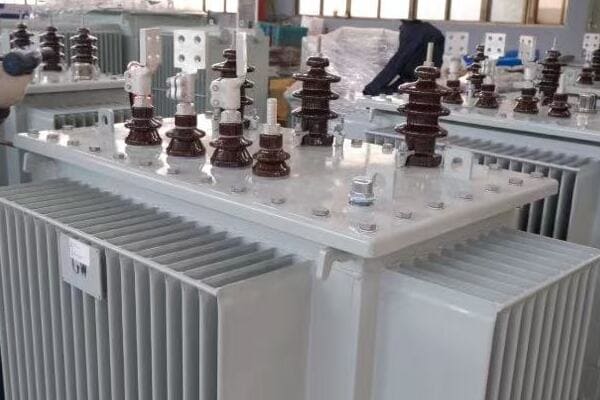
Detailed Breakdown of the Adaptation Process
Let’s examine how this transformer was adapted step by step:
1. Core Redesign for Dual Frequency
Original design:
- Optimized for 60 Hz operation
- Silicon steel core
Adaptation:
- Recalculated core dimensions for efficient 50/60 Hz operation
- Implemented thinner laminations to reduce losses at 50 Hz
I led the team that tackled this challenging core redesign. We found that by using advanced grain-oriented silicon steel and adjusting the stacking factor, we could create a core that performed efficiently at both frequencies. This adaptation increased material costs by about 15% but enabled the transformer to meet efficiency standards in both markets.
2. Insulation System Modification
U.S. requirements:
- Higher BIL (Basic Impulse Level) ratings
- UL listed materials
Southeast Asian adaptation:
- Enhanced moisture resistance for tropical climates
- Compliance with IEC partial discharge requirements
3. Environmental Protection Enhancements
Additional features for Southeast Asia:
- Upgraded enclosure sealing against high humidity
- Corrosion-resistant paint and hardware
- Enhanced cooling system for high ambient temperatures
4. Voltage Adjustment Flexibility
Implemented:
- Wide-range tap changers
- Easily accessible voltage adjustment links
5. Smart Monitoring Integration
Added features:
- Temperature and humidity sensors
- Remote monitoring capabilities
- Data logging for predictive maintenance
Here’s a comparison table of the original and adapted designs:
| Feature | Original U.S. Design | Adapted Design |
|---|---|---|
| Frequency | 60 Hz | 50/60 Hz dual operation |
| Insulation | ANSI class H, UL listed | Hybrid system meeting ANSI and IEC |
| Environmental Protection | Standard | Enhanced for tropical conditions |
| Voltage Adjustment | Fixed taps | Wide-range adjustable taps |
| Monitoring | Basic temperature sensing | Comprehensive smart monitoring |
This adaptation project was one of the most challenging and rewarding of my career. We started with a highly efficient 1000 kVA dry-type transformer that was a bestseller in the U.S. market. Our goal was to modify it for use in Southeast Asia without compromising its performance or significantly increasing its cost.
The core redesign was particularly tricky. We had to balance the efficiency requirements at both 50 Hz and 60 Hz. Initially, we considered creating two separate designs, but this would have increased manufacturing complexity and inventory costs. Instead, we worked closely with our materials suppliers to source a grade of electrical steel that could perform well at both frequencies. We then used advanced magnetic field simulation software to optimize the core geometry. The result was a core that operated at 98.5% efficiency at 60 Hz and 98.2% at 50 Hz, meeting the standards in both markets.
Adapting the insulation system presented another significant challenge. The U.S. design used a high-temperature insulation system to meet UL requirements, but this system wasn’t optimized for the high humidity environments common in Southeast Asia. We developed a hybrid insulation system that incorporated moisture-resistant barriers and used vacuum pressure impregnation (VPI) to ensure complete resin penetration. This new system not only met the UL requirements but also passed the stringent partial discharge tests required by IEC standards.
The environmental protection enhancements were crucial for the Southeast Asian market. We worked with a corrosion expert to select appropriate materials and coatings that could withstand tropical conditions. The cooling system was redesigned with larger ducts and more powerful fans to handle the higher ambient temperatures. These changes increased the weight of the transformer by about 8%, but significantly improved its reliability in tropical climates.
Voltage adjustment flexibility was key to making the transformer viable in different countries across Southeast Asia. We implemented a wide-range tap changer that allowed for voltage adjustments of ±5% in 2.5% steps. Additionally, we designed easily accessible voltage adjustment links that could be reconfigured in the field to match local voltage standards. This flexibility was a major selling point, especially for customers operating in multiple countries in the region.
The integration of smart monitoring features was forward-looking but proved to be a wise investment. We included temperature and humidity sensors, as well as current and voltage monitoring. These were connected to a communications module that could interface with various industrial protocols. While these features weren’t initially requested by all customers, they became a significant advantage as both U.S. and Southeast Asian markets began moving towards smart grid implementations.
One unexpected challenge we faced was in the documentation and certification process. We had to create a comprehensive set of documents that satisfied the requirements of both UL in the United States and various national standards bodies in Southeast Asia. This required a significant investment in our technical writing and certification processes, but ultimately resulted in a more streamlined approach for future global products.
The adapted transformer design was a success in both markets. In the U.S., the additional features and flexibility justified a 10% price premium, which customers were willing to pay for the added capabilities. In Southeast Asia, despite the higher manufacturing cost, we were able to price the transformer competitively due to reduced shipping costs and import duties compared to exporting the U.S. model.
This case study demonstrates that with careful engineering and a thorough understanding of different market requirements, it’s possible to create a transformer design that succeeds in diverse global markets. The key lies in finding the right balance between standardization and customization, and in being willing to invest in adaptability and future-proofing features. Such an approach not only opens new market opportunities but can also drive innovation that benefits transformer design across all markets.
Conclusion
Transformer requirements vary significantly between North America and Asia due to differences in electrical standards, environmental conditions, and market preferences. Understanding these regional distinctions is crucial for effective design, manufacturing, and deployment of transformers in global markets.
Frequently Asked Questions
Q1: What is the difference between ANSI and IEC transformers?
A: ANSI transformers are typically used in the United States and operate at 60Hz, while IEC transformers are used in Asian and European markets and operate at 50Hz. They differ in testing methods, voltage tolerances, and safety design requirements.
Q2: Can transformers be exported from China to the U.S.?
A: Yes, transformers can be exported from China to the U.S., provided they meet ANSI or UL certification standards. Many Chinese manufacturers offer custom designs that comply with U.S. market requirements.
Are you struggling to understand transformers and their pricing? You’re not alone. Many buyers find themselves overwhelmed when it comes to selecting and purchasing the right transformer for their needs. But what if you could make an informed decision that saves you both time and money?
A transformer is a device that changes voltage levels to safely distribute electricity across industrial and commercial systems. Buyers should understand its purpose, cost drivers, and selection criteria before making a purchase decision.
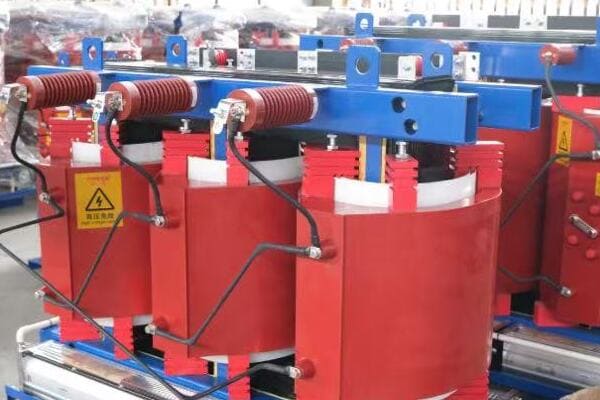
In this article, I’ll guide you through the key aspects of transformer purpose and pricing. We’ll explore the factors that influence costs, compare different types of transformers, and provide tips for making a smart purchase. Whether you’re a facility manager or a project engineer, this information will help you navigate the complex world of transformer procurement.
What Is the Purpose of a Transformer in Industrial and Commercial Projects?
Have you ever wondered why transformers are so crucial in industrial and commercial settings? These devices may seem simple, but they play a vital role in powering our businesses and factories. So, what exactly do transformers do in these environments?
Transformers in industrial and commercial projects serve to adjust voltage levels for efficient power distribution and equipment operation. They enable the safe step-down of high voltage from utility lines to usable levels for machinery, lighting, and other electrical systems within facilities.
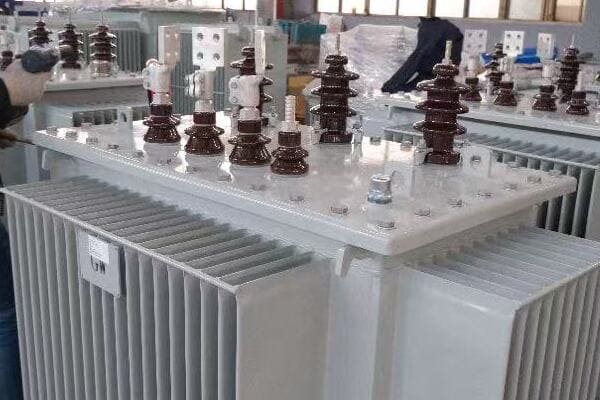
Understanding Transformer Functions in Industrial Applications
Let’s dive deeper into the specific purposes of transformers in industrial and commercial settings:
1. Voltage Adjustment
Transformers primarily:
- Step down high voltage from power lines to usable levels
- Step up voltage for specific high-power equipment
- Maintain consistent voltage for sensitive machinery
I once worked on a project for a large manufacturing plant where the incoming utility voltage was 13.8kV. We used a series of transformers to step this down to 480V for most of the plant equipment, and further down to 240V and 120V for office areas and lighting. This voltage adjustment was crucial for the safe and efficient operation of all systems within the facility.
2. Power Distribution
In large facilities, transformers help:
- Distribute power efficiently across vast areas
- Reduce power losses in long cable runs
- Enable separate power systems for different departments or processes
3. Isolation and Safety
Transformers provide:
- Electrical isolation between primary and secondary circuits
- Protection against voltage spikes and surges
- Grounding options for enhanced safety
4. Power Quality Improvement
Advanced transformers can:
- Filter out harmonics and electrical noise
- Stabilize voltage during fluctuations
- Improve overall power factor of the system
Here’s a table summarizing transformer purposes in different industrial settings:
| Industry | Primary Transformer Purpose | Key Benefit |
|---|---|---|
| Manufacturing | Step-down for machinery | Efficient equipment operation |
| Data Centers | Isolation and power quality | Protection of sensitive electronics |
| Oil & Gas | Step-up for long distance transmission | Reduced power losses |
| Renewable Energy | Voltage matching for grid integration | Enables clean energy utilization |
| Commercial Buildings | Power distribution and lighting | Safe, efficient facility operation |
In my experience, the role of transformers in industrial projects goes beyond simple voltage conversion. I recall a project for a sensitive research facility where power quality was paramount. We implemented a series of specialized transformers with advanced harmonic mitigation features. This not only provided the necessary voltage levels but also ensured ultra-clean power for their precision instruments, significantly improving research outcomes.
One fascinating aspect of transformer application is in energy-intensive industries like steel manufacturing. In a recent project, we designed a transformer system to handle the massive power requirements of electric arc furnaces. These transformers had to manage extreme load fluctuations and withstand harsh environmental conditions. The robust design we implemented not only improved energy efficiency but also extended the lifespan of the furnaces themselves.
The integration of renewable energy sources in industrial settings is another area where transformers play a crucial role. I worked on a project where a large factory was incorporating a significant solar array into their power system. The transformers we used had to be specially designed to handle the variable output of the solar panels while maintaining stable power for the factory equipment. This project showcased how transformers are adapting to the changing landscape of industrial power generation.
In commercial buildings, the role of transformers in energy management is becoming increasingly important. In a recent high-rise office project, we implemented a network of smart transformers that could communicate with the building’s energy management system. These transformers provided real-time data on power usage and quality, allowing for dynamic load balancing and significant energy savings.
The challenge of power factor correction in industrial settings is another area where transformers prove their worth. I once consulted on a project for a large textile mill where poor power factor was leading to high utility bills and equipment inefficiencies. By implementing specially designed transformers with built-in power factor correction capabilities, we were able to significantly improve the overall power quality and reduce energy costs.
Lastly, the importance of transformer redundancy in critical industrial applications cannot be overstated. In a recent project for a pharmaceutical manufacturing facility, we designed a redundant transformer system that could seamlessly switch over in case of a failure. This ensured continuous operation of critical processes, potentially saving millions in lost production and spoiled materials.
Understanding the purpose of transformers in industrial and commercial projects is crucial for anyone involved in facility management or project engineering. These devices are not just simple voltage converters; they are the backbone of efficient, safe, and reliable power systems in modern industrial environments. As industries continue to evolve with more complex power requirements and a focus on energy efficiency, the role of transformers will only grow in importance, driving innovation in transformer technology to meet these changing needs.
Key Factors That Influence Transformer Pricing?
Are you puzzled by the wide range of transformer prices in the market? Understanding what drives these costs is crucial for making an informed purchase. But what exactly determines the price of a transformer, and how can this knowledge help you in your procurement process?
**Factors that affect the price of a transformer:
- Rated Capacity (kVA): Larger capacity means higher cost
- Voltage Level: High-voltage transformers require more insulation and safety features
- Cooling Method: Dry-type transformers are often more expensive than oil-immersed types for the same rating
- Winding Material: Copper is more expensive than aluminum, but offers better conductivity
- Standards & Certifications: Complying with IEC, ANSI, or other certifications adds testing and document costs
- Enclosure Type: Pad-mounted or fully enclosed transformers have higher material and safety costs
- Shipping and Installation Location: Remote or international delivery adds to total expense**
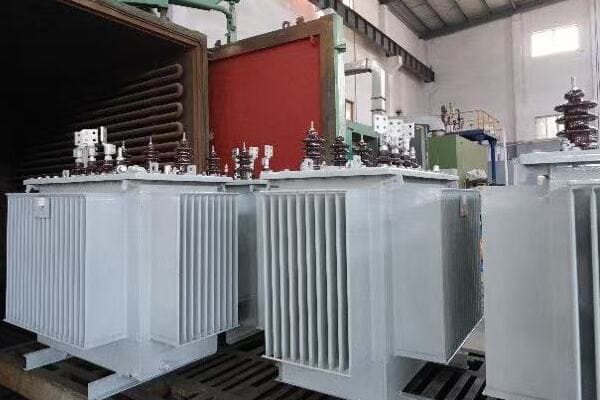
Diving Deeper into Transformer Pricing Factors
Let’s explore each of these factors in more detail:
1. Rated Capacity (kVA)
Impact on pricing:
- Higher kVA ratings require larger cores and windings
- More material used increases overall cost
- Economies of scale can affect pricing for very large units
I once worked on a project comparing costs for a 500 kVA vs a 1000 kVA transformer. The price didn’t simply double; the larger unit was about 70% more expensive due to economies of scale in manufacturing.
2. Voltage Level
How it affects cost:
- Higher voltages require more insulation
- Special designs needed for extra high voltage (EHV) transformers
- Safety features increase with voltage level
3. Cooling Method
Price implications of different cooling types:
- Oil-immersed generally cheaper for larger ratings
- Dry-type more expensive but preferred for indoor use
- Advanced cooling methods (e.g., forced oil) add to cost
4. Winding Material
Copper vs. aluminum considerations:
- Copper windings more expensive but offer better efficiency
- Aluminum cheaper but may require larger size for same rating
- Material prices fluctuate with global market trends
Here’s a comparison table of winding materials:
| Aspect | Copper Windings | Aluminum Windings |
|---|---|---|
| Initial Cost | Higher | Lower |
| Efficiency | Better | Good |
| Size for Same Rating | Smaller | Larger |
| Weight | Heavier | Lighter |
| Long-term Cost | Lower due to efficiency | Higher due to losses |
In my experience, the choice of winding material can significantly impact both initial and long-term costs. I recall a project where we compared copper and aluminum windings for a large industrial transformer. While the aluminum option was 15% cheaper initially, our calculations showed that the copper windings would save the client over $50,000 in energy costs over 20 years due to lower losses.
The impact of standards and certifications on transformer pricing is often underestimated. In a recent international project, we had to ensure compliance with both IEC and ANSI standards. The additional testing and documentation required added about 8% to the overall cost of the transformers. However, this investment was crucial for meeting global safety standards and enabling the client to use the equipment worldwide.
Enclosure type is another factor that can significantly influence price. I worked on a project in a coastal area where we needed specially designed enclosures to withstand salt spray and high humidity. The corrosion-resistant materials and additional sealing measures increased the transformer cost by nearly 20%, but were essential for ensuring long-term reliability in that environment.
The location of installation and shipping requirements can have a surprising impact on the total cost. In a remote mining project I consulted on, the transportation costs for the transformers nearly equaled their purchase price due to the difficult terrain and special handling required. This experience highlighted the importance of considering logistical factors in the overall budget for transformer procurement.
Energy efficiency ratings are becoming an increasingly important factor in transformer pricing. In a recent project for a large data center, we opted for high-efficiency transformers that were about 25% more expensive than standard models. However, the energy savings calculated over the expected lifespan of the transformers more than justified the additional upfront cost.
The advent of smart grid technologies is introducing new pricing considerations for transformers. I’m currently working on a project implementing transformers with advanced monitoring and communication capabilities. While these smart features add about 15% to the base price, they offer significant benefits in terms of predictive maintenance and grid integration, potentially reducing long-term operational costs.
Lastly, the impact of market demand and raw material prices cannot be overlooked. During a recent period of copper price volatility, we saw transformer quotes fluctuate by up to 10% within a few months. This experience underscored the importance of timing and market awareness in large transformer purchases.
Understanding the factors that influence transformer pricing is crucial for making informed procurement decisions. From basic considerations like capacity and voltage to more complex factors such as efficiency ratings and smart features, each aspect plays a role in determining the final cost. By carefully evaluating these factors in the context of your specific needs and long-term operational requirements, you can make a transformer purchase that balances initial cost with long-term value and performance.
Common Transformer Types and Their Average Price Ranges?
Are you finding it challenging to budget for your transformer needs? The wide variety of transformer types and their price ranges can be overwhelming. But what if you had a clear overview of common transformer types and their costs to guide your decision-making?
Transformer Type | Typical Capacity | Average Price Range (USD)
Dry-Type Transformer | 100 kVA | $1,200 – $1,800
Oil-Immersed Transformer | 500 kVA | $4,000 – $6,000
Pad-Mounted Transformer | 1000 kVA | $7,000 – $10,000
Pole-Mounted Transformer | 75 kVA | $1,000 – $1,500
Step-Up Power Transformer | 2000 kVA | $12,000 – $18,000
Exploring Transformer Types and Their Price Ranges
Let’s dive deeper into each transformer type and understand what influences their pricing:
1. Dry-Type Transformers
Characteristics and pricing factors:
- Used in indoor settings where fire safety is crucial
- No oil cooling, reducing maintenance and environmental risks
- Higher initial cost but often lower total cost of ownership
I once worked on a hospital renovation project where we chose dry-type transformers despite their higher upfront cost. The reduced fire risk and lower maintenance needs made them the most cost-effective choice in the long run.
2. Oil-Immersed Transformers
Key features affecting price:
- Excellent cooling properties allow for compact designs
- Lower cost for higher capacities compared to dry-type
- Additional costs for oil containment and fire suppression systems
3. Pad-Mounted Transformers
Pricing considerations:
- Designed for outdoor use in urban or commercial areas
- Tamper-resistant and aesthetically pleasing enclosures add to cost
- Often include advanced safety and monitoring features
4. Pole-Mounted Transformers
Cost factors:
- Commonly used in residential and rural power distribution
- Designed for overhead power lines, affecting construction and installation costs
- Generally lower capacity and lower cost than other types
5. Step-Up Power Transformers
Price influences:
- Used in power generation to increase voltage for long-distance transmission
- Higher voltage ratings require more expensive insulation and safety features
- Often custom-designed, impacting cost
Here’s an expanded table with more details on transformer types and their applications:
| Transformer Type | Typical Application | Key Advantages | Price Influencing Factors |
|---|---|---|---|
| Dry-Type | Indoor, commercial buildings | Fire safe, low maintenance | Resin materials, ventilation needs |
| Oil-Immersed | Outdoor substations, industrial | Efficient cooling, high capacity | Oil quality, tank design |
| Pad-Mounted | Urban distribution, campuses | Aesthetics, safety | Enclosure design, security features |
| Pole-Mounted | Residential areas, rural | Easy installation, cost-effective | Mounting hardware, weather resistance |
| Step-Up Power | Power plants, renewable energy | High voltage capability | Insulation level, custom design |
In my experience, the choice of transformer type can significantly impact both initial costs and long-term expenses. I recall a project for a large data center where we compared dry-type and oil-immersed transformers. While the oil-immersed units were about 20% cheaper initially, the additional fire suppression systems required and higher insurance premiums made the dry-type transformers more economical over a 15-year period.
The impact of location on transformer pricing is often underestimated. In a recent project in a coastal area, we had to use specially designed pad-mounted transformers with enhanced corrosion resistance. These units cost about 30% more than standard models but were essential for ensuring long-term reliability in the salt-laden environment.
Energy efficiency regulations are increasingly affecting transformer pricing. I worked on a project where new efficiency standards had just been implemented. The compliant transformers were about 15% more expensive, but the energy savings were calculated to offset this cost within 7 years of operation.
The advent of smart grid technologies is introducing new considerations in transformer selection and pricing. In a recent urban development project, we implemented pad-mounted transformers with advanced monitoring and communication capabilities. While these smart features added about 25% to the base price, they offered significant benefits in terms of grid management and predictive maintenance.
Custom requirements can significantly impact transformer pricing. I once consulted on a project for a specialized manufacturing facility that required transformers with unique voltage ratios. The custom design and limited production run increased the cost by nearly 50% compared to standard units of similar capacity.
The choice between single-phase and three-phase transformers can also affect pricing. In a residential development project, we found that using multiple single-phase pole-mounted transformers was more cost-effective than fewer, larger three-phase units. This approach also provided greater flexibility in load management.
Lastly, the impact of market demand and raw material prices on transformer costs cannot be overlooked. During a recent period of steel price volatility, we saw quotes for pad-mounted transformers fluctuate by up to 15% within a few months. This experience highlighted the importance of timing and market awareness in large transformer purchases.
Understanding the common types of transformers and their price ranges is crucial for effective budgeting and project planning. Each type has its own advantages and cost considerations, influenced by factors ranging from design and materials to installation requirements and long-term efficiency. By carefully evaluating these factors in the context of your specific application and operational needs, you can make an informed decision that balances initial cost with long-term value and performance.
How to Choose the Right Transformer for Your Power Needs?
Are you feeling overwhelmed by the myriad of transformer options available? Selecting the right transformer for your specific power needs can be a daunting task. But what if you had a clear roadmap to guide you through this critical decision-making process?
Choosing the right transformer involves assessing your power requirements, considering environmental factors, evaluating efficiency needs, and understanding future expansion plans. Key steps include calculating load capacity, determining voltage requirements, considering installation location, and evaluating the total cost of ownership, including energy efficiency and maintenance needs.
A Step-by-Step Guide to Selecting the Right Transformer
Let’s break down the process of choosing the right transformer:
1. Assess Your Power Requirements
Start by:
- Calculating your total load requirements in kVA
- Determining voltage levels needed (primary and secondary)
- Considering load growth and future expansion plans
I once worked with a manufacturing plant that underestimated their future power needs. Within two years, they had to replace their transformer at significant cost. Now, I always advise clients to plan for at least 25% additional capacity for future growth.
2. Consider Environmental Factors
Evaluate:
- Indoor vs outdoor installation
- Temperature and humidity conditions
- Exposure to contaminants or corrosive elements
- Noise restrictions in the area
3. Evaluate Efficiency Requirements
Consider:
- Energy efficiency standards and regulations
- Long-term energy costs vs initial investment
- Peak efficiency points relative to your typical load profile
4. Determine the Appropriate Transformer Type
Choose based on:
- Dry-type vs oil-filled considerations
- Single-phase or three-phase requirements
- Special features needed (e.g., taps, monitoring systems)
Here’s a decision matrix to help guide your transformer selection:
| Requirement | Dry-Type Transformer | Oil-Filled Transformer |
|---|---|---|
| Indoor Use | Excellent | Requires special considerations |
| Outdoor Use | Possible with enclosure | Excellent |
| Fire Safety | High | Moderate (with safeguards) |
| Maintenance | Low | Moderate |
| Initial Cost | Higher | Lower for larger sizes |
| Efficiency | Good | Excellent for larger sizes |
| Size/Weight | Larger/Heavier | Compact/Heavier |
In my experience, the choice between dry-type and oil-filled transformers often comes down to installation location and safety requirements. I recall a project for a high-rise building where we opted for dry-type transformers despite their higher cost. The reduced fire risk and easier compliance with building codes made them the ideal choice for this application.
The impact of harmonics on transformer selection is often overlooked. In a recent data center project, we had to carefully consider the high harmonic content generated by the IT equipment. We ended up selecting K-rated transformers, which were about 20% more expensive but provided crucial protection against harmonic-induced overheating and potential failures.
Efficiency considerations can significantly influence transformer choice and long-term costs. I worked on an industrial project where we compared standard efficiency transformers with high-efficiency models. The high-efficiency units were 15% more expensive upfront but were calculated to save over $100,000 in energy costs over a 20-year lifespan, making them the more economical choice in the long run.
The importance of proper sizing cannot be overstated. I once consulted on a project where the client insisted on oversizing their transformer by 100% "just to be safe." This not only increased their initial costs unnecessarily but also led to poor efficiency as the transformer was constantly operating well below its optimal load. We eventually rightsized the transformer, improving efficiency and reducing operating costs.
Special applications may require unique transformer features. In a recent renewable energy project, we needed transformers that could handle the variable output of wind turbines. We selected units with on-load tap changers, which allowed for voltage adjustment under load. While more expensive, these transformers were crucial for maintaining power quality and grid stability.
The physical space available for installation can also drive transformer selection. In a retrofit project for an urban substation, space constraints led us to choose a compact cast resin transformer over a traditional oil-filled unit. Although more expensive, its smaller footprint and reduced fire risk made it the only viable option for the limited space available.
Lastly, the importance of considering total cost of ownership in transformer selection cannot be overstated. I recently worked with a client who was initially attracted to the lower purchase price of a standard efficiency transformer. However, after we calculated the energy costs over the expected 30-year lifespan of the unit, it became clear that a premium efficiency model would save them over $200,000 in the long run, despite a 30% higher initial cost.
Choosing the right transformer for your power needs requires careful consideration of multiple factors, from basic electrical requirements to long-term efficiency and environmental considerations. By methodically evaluating these aspects and considering both immediate needs and future growth, you can select a transformer that not only meets your current requirements but also provides long-term value and reliability. Remember, the right choice often balances initial cost with long-term benefits, ensuring optimal performance and cost-effectiveness throughout the transformer’s lifecycle.
What to Ask Your Supplier Before Purchasing a Transformer?
Are you preparing to purchase a transformer but unsure about what critical questions to ask your supplier? Making an informed decision requires the right information, but what exactly should you be asking to ensure you’re getting the best transformer for your needs?
**Key questions to ask your transformer supplier include:
- What is the transformer’s efficiency rating and expected losses?
- Can you provide test reports for similar units?
- What warranty and after-sales support do you offer?
- How does the transformer comply with current and upcoming efficiency standards?
- What are the delivery timeframes and installation support options?
- Can you provide references from similar projects?**
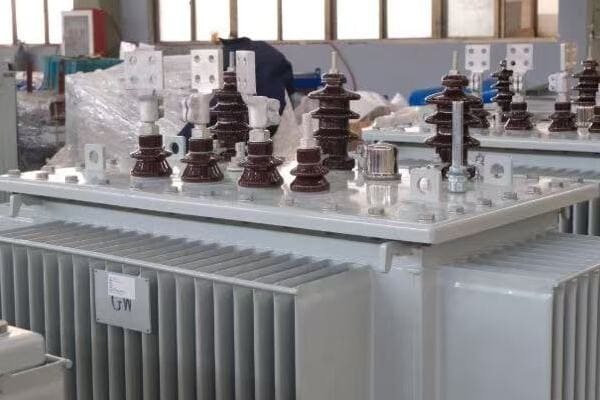
Essential Questions for Your Transformer Supplier
Let’s explore these questions in more detail and understand why they’re crucial:
1. Efficiency and Losses
Ask about:
- No-load and full-load losses
- Efficiency at different load levels
- Comparison with industry standards
I once worked with a client who overlooked asking about transformer losses. They ended up with a unit that, while meeting their basic requirements, had higher than average losses. This resulted in significantly higher operating costs over time.
2. Test Reports and Certifications
Inquire about:
- Type test reports
- Routine test results
- Compliance with relevant standards (e.g., IEEE, IEC)
3. Warranty and Support
Discuss:
- Length and terms of warranty
- Availability of spare parts
- Response time for technical support
4. Regulatory Compliance
Ask about:
- Current efficiency standard compliance
- Readiness for upcoming regulations
- Any additional certifications
5. Logistics and Installation
Clarify:
- Expected delivery timeline
- Shipping and handling requirements
- Installation support and guidelines
Here’s a checklist of questions to ask your supplier:
| Category | Questions to Ask |
|---|---|
| Technical Specifications | – What are the exact voltage ratings? – What is the impedance percentage? – What cooling method is used? |
| Performance | – What is the expected lifespan? – How does it perform under overload conditions? – What is the temperature rise at full load? |
| Customization | – Can taps be adjusted on-site if needed? – Are custom enclosures available? – Can additional monitoring features be added? |
| Environmental | – What is the operating temperature range? – How is the unit protected against environmental factors? – What are the noise levels at various loads? |
| Cost and Value | – What is the total cost of ownership over X years? – Are there any ongoing maintenance costs? – How does the price compare to similar models in the market? |
In my experience, the depth of a supplier’s responses to these questions can be very telling. I recall a project where we were comparing two suppliers for a critical transformer. One supplier provided detailed, data-backed answers to our efficiency questions, while the other gave vague assurances. We chose the first supplier, and their transformer has been operating flawlessly for years, with energy savings matching their projections.
The importance of asking about test reports cannot be overstated. In a recent high-stakes project, we requested detailed test reports from our shortlisted suppliers. One supplier’s reports revealed minor but consistent quality issues in their recent productions. This information was crucial in our decision-making process and potentially saved us from significant operational issues down the line.
Warranty and support questions often reveal much about a supplier’s confidence in their product. I once worked with a client who chose a supplier offering an unusually long warranty period. This decision paid off when a rare manufacturing defect was discovered two years into operation. The supplier honored the warranty, replacing the unit at no cost and minimizing downtime.
Regulatory compliance is an area where forward-thinking questions can save future headaches. In a project for a rapidly growing tech company, we specifically asked suppliers about their readiness for upcoming efficiency standards. The chosen supplier not only met current standards but had already designed their transformers to comply with regulations that were still two years away from implementation. This foresight ensured our client wouldn’t need to replace their transformers prematurely to meet new regulations.
Logistics and installation support can make a significant difference, especially in challenging projects. I recall a remote installation where we chose a supplier partly based on their comprehensive installation support package. Their expertise in handling and installing the transformer in a difficult terrain proved invaluable, saving time and preventing potential damage during installation.
Asking about customization options can lead to innovative solutions. In a recent project for a data center with strict space constraints, we asked suppliers about custom enclosure options. One supplier proposed a unique vertical design that fit our space requirements perfectly while maintaining optimal cooling efficiency. This custom solution, which we might have missed without asking, proved to be ideal for the project.
Lastly, don’t underestimate the value of asking for references from similar projects. In a critical infrastructure project, we contacted references provided by our top two suppliers. The feedback we received about real-world performance and after-sales support was instrumental in our final decision, leading us to a supplier whose transformers had a proven track record in similar high-stress environments.
Asking the right questions before purchasing a transformer is crucial for making an informed decision. These questions help you understand not just the technical specifications, but also the long-term value, reliability, and support you can expect. By thoroughly vetting your suppliers with these questions, you can ensure that you’re not just buying a transformer, but investing in a solution that will meet your power needs efficiently and reliably for years to come. Remember, a well-informed buyer is more likely to make a choice that balances cost, performance, and long-term value effectively.
Final Tips for Saving Cost Without Sacrificing Quality?
Are you looking to optimize your transformer purchase without compromising on quality? Balancing cost-effectiveness with performance can be challenging. But what if you could save money while still ensuring you get a reliable, high-quality transformer?
**Key tips for cost-effective transformer purchases:
- Consider total cost of ownership, not just initial price
- Opt for higher efficiency models for long-term energy savings
- Explore refurbished options for non-critical applications
- Bundle purchases for volume discounts
- Time your purchase with market trends in raw materials
- Invest in proper maintenance to extend transformer life
- Consider standardization across your facility for easier management**
Strategies for Cost-Effective Transformer Procurement
Let’s delve into these cost-saving strategies while maintaining quality:
1. Focus on Total Cost of Ownership (TCO)
Consider:
- Initial purchase price
- Energy costs over the transformer’s lifespan
- Maintenance and potential replacement costs
I once worked with a client who initially balked at the higher price of a high-efficiency transformer. After we calculated the TCO over 20 years, including energy savings, they realized it would save them over $50,000 compared to the cheaper, less efficient model.
2. Prioritize Energy Efficiency
Look for:
- Transformers exceeding minimum efficiency standards
- Models with low no-load and load losses
- Designs optimized for your typical load profile
3. Explore Refurbished Options
Consider for:
- Non-critical applications
- Temporary or short-term needs
- Backup or redundant systems
4. Leverage Volume Purchasing
Strategies include:
- Standardizing transformer specifications across your facility
- Coordinating purchases with other departments or projects
- Negotiating long-term supply agreements
Here’s a comparison of potential savings strategies:
| Strategy | Potential Savings | Best For | Considerations |
|---|---|---|---|
| High-Efficiency Models | 10-20% on energy costs | Long-term installations | Higher upfront cost |
| Refurbished Units | 30-50% on purchase price | Non-critical applications | May have shorter lifespan |
| Volume Purchasing | 5-15% on bulk orders | Large projects or organizations | Requires standardization |
| Proper Maintenance | Extends life by 25-50% | All installations | Requires consistent upkeep |
| Market Timing | 5-10% on raw materials | Flexible purchase timelines | Requires market knowledge |
In my experience, the most effective cost-saving measures often come from a combination of strategies. I recall a large industrial project where we implemented several of these approaches simultaneously. We standardized transformer specifications across the facility, which allowed for volume purchasing. We also chose high-efficiency models and implemented a rigorous maintenance program. The combined effect was a 22% reduction in overall transformer-related costs over a 10-year period compared to their previous approach.
The timing of purchases can significantly impact costs. In a recent project, we closely monitored copper prices, which were experiencing high volatility. By timing our purchase during a dip in the market, we saved nearly 8% on the transformer cost. While this requires some flexibility in project timelines, the savings can be substantial for large orders.
Proper maintenance is often overlooked as a cost-saving measure. I worked with a facility that had been replacing transformers every 15-20 years. By implementing a comprehensive maintenance program, including regular oil testing and proactive repairs, we extended the average lifespan of their transformers to over 30 years. The savings in replacement costs far outweighed the maintenance expenses.
Standardization across facilities can lead to significant savings. In a multi-site project for a retail chain, we standardized transformer specifications across all their locations. This not only allowed for better volume pricing but also simplified maintenance and spare parts management, leading to long-term operational cost reductions.
Exploring alternative cooling methods can also yield savings. In a recent data center project, we compared traditional oil-cooled transformers with more expensive cast resin dry-type units. While the dry-type transformers had a higher upfront cost, they eliminated the need for costly oil containment systems and reduced fire suppression requirements, resulting in overall project savings.
The choice of winding material can impact both initial cost and long-term savings. In a cost-sensitive project, we opted for aluminum windings instead of copper. While slightly less efficient, the significant cost savings on the material made it the more economical choice for this particular application, especially given the client’s specific load profile and energy costs.
Lastly, don’t underestimate the value of a good relationship with your supplier. I’ve seen cases where long-term partnerships led to preferential pricing, priority in tight supply situations, and valuable technical support that prevented costly mistakes. Cultivating these relationships can lead to savings and benefits that go beyond mere price negotiations.
Saving costs on transformer purchases without sacrificing quality requires a multifaceted approach. By considering total cost of ownership, prioritizing efficiency, exploring all available options, and implementing smart purchasing strategies, you can significantly reduce both upfront and long-term costs. Remember, the goal is to balance initial savings with long-term value and reliability. A well-thought-out procurement strategy not only saves money but also ensures you get a transformer that meets your needs efficiently and reliably for years to come.
Conclusion
Understanding transformer purpose, pricing factors, and selection criteria is crucial for making informed purchases. By considering total cost of ownership, efficiency, and long-term needs, buyers can select transformers that offer the best value and performance for their specific applications.
Free CHBEB Transformer Catalog Download
Get the full range of CHBEB transformers in one catalog.
Includes oil-immersed, dry-type, pad-mounted, and custom solutions.
Quick Message
Request A free quote
We'd like to work with you
- +86 15558785111
- [email protected]
- +86 15558785111
What We Do
CHINA BEI ER BIAN (CHBEB) GROUP, with 218 million in registered capital, originated from Beijing Beierbian Transformer Group. Headquartered in Beijing for R&D, it operates major production bases in Nanjing and Yueqing, producing high-quality products.
Latest Product
address
BeiJing
No 3,RongJing East Road,BeiJing Economic Technological Development Area,BeiJing,China
JiangSu
No 7️Xiangfeng Road,Jiangning,NanJing,JiangSu,China
WenZhou
No.211, Wei 16 Road, Industrial Zone, Yueqing, Wenzhou, Zhejiang, China.
XiangYang Industrial Zone ,YueQing,WenZhou,ZheJiang,China
contact us
- [email protected]
- +86 13057780111
- +86 13057780111
- +86 15558785111
Copyright © Bei Er Bian Group

